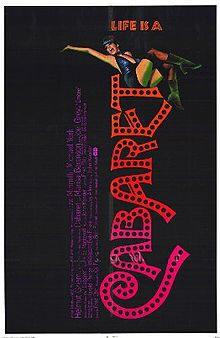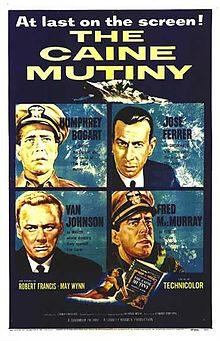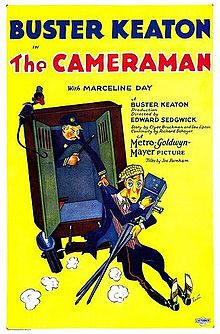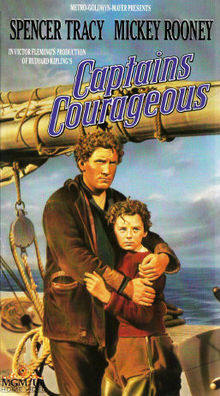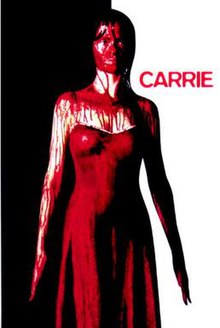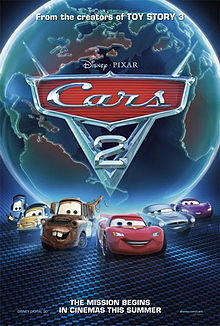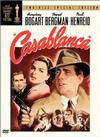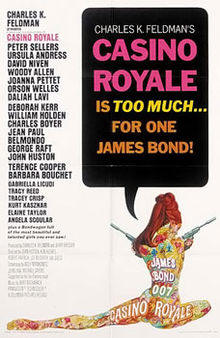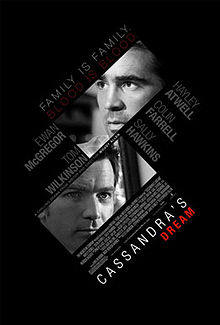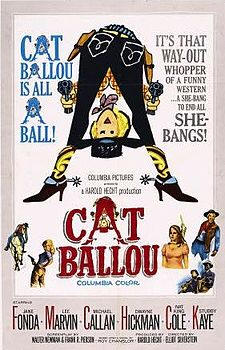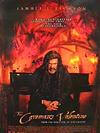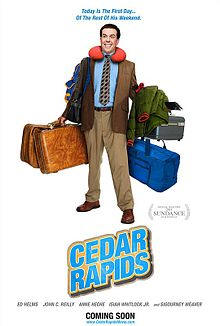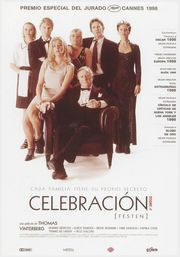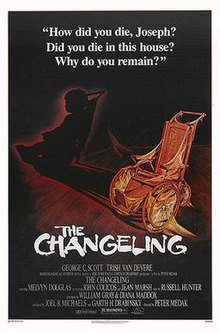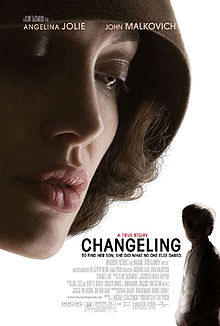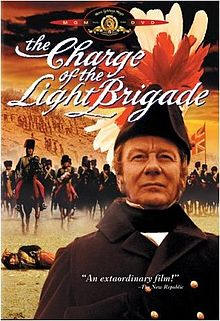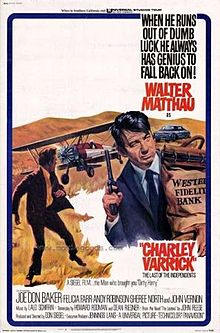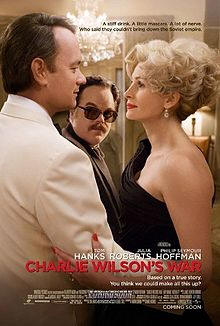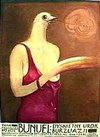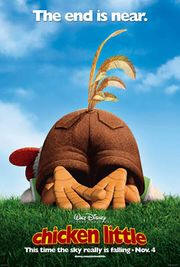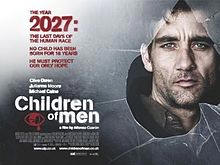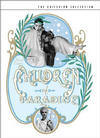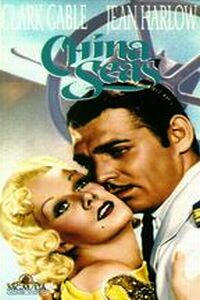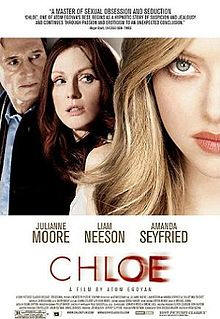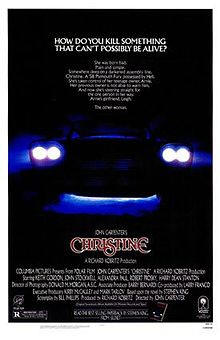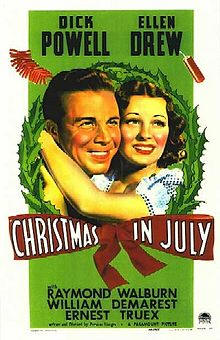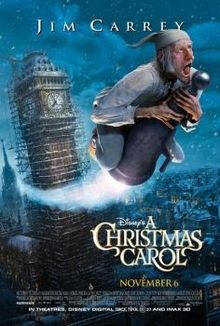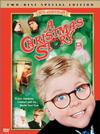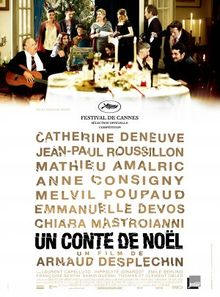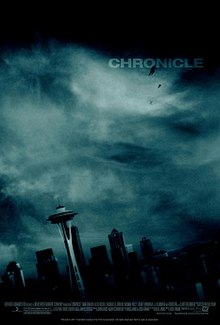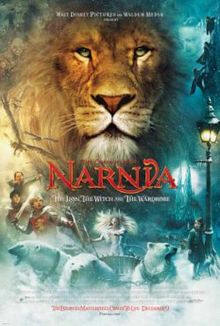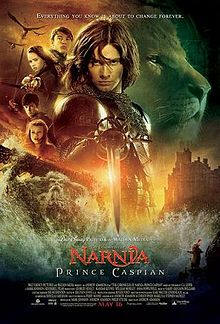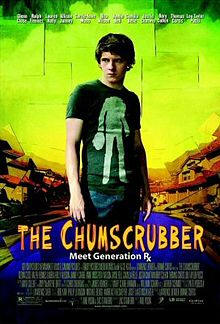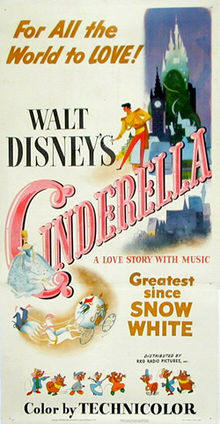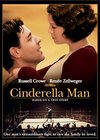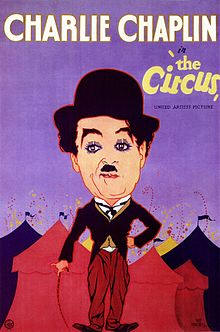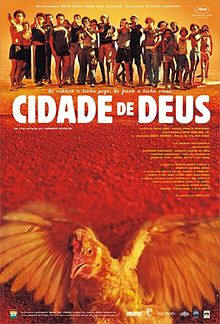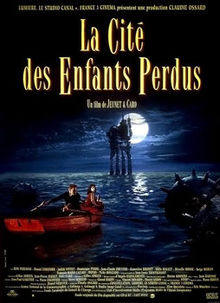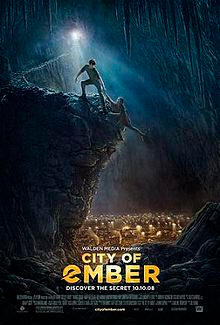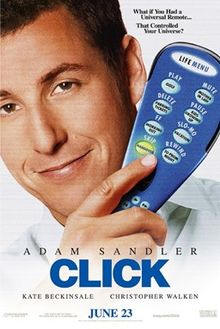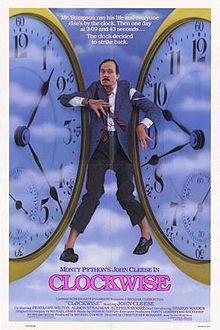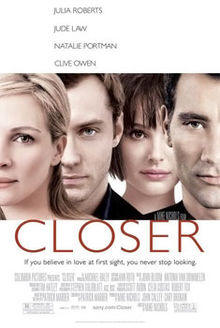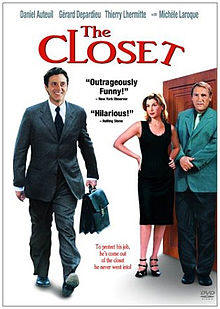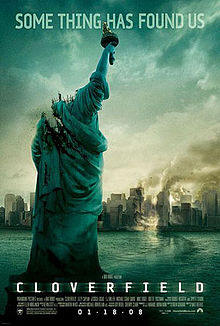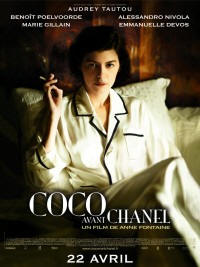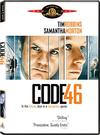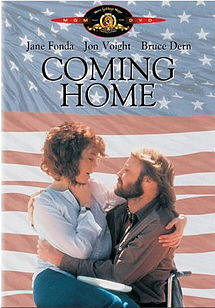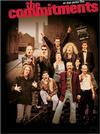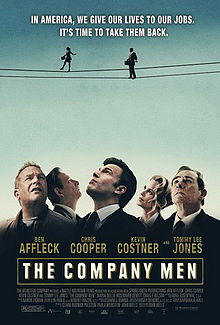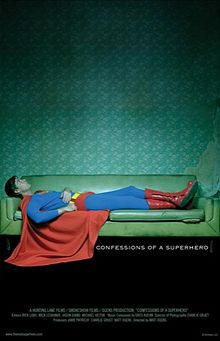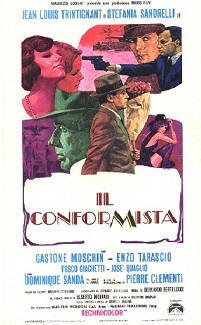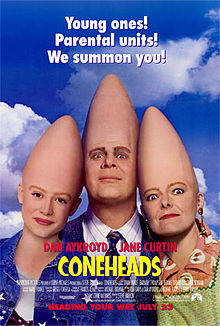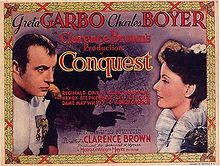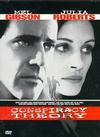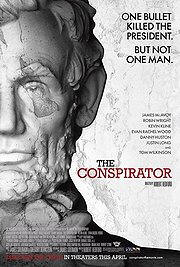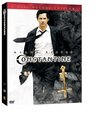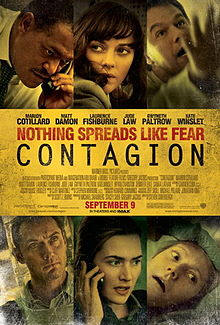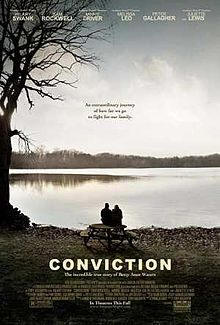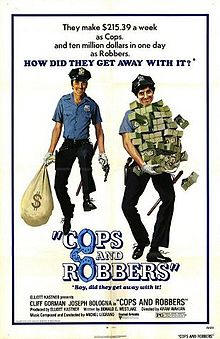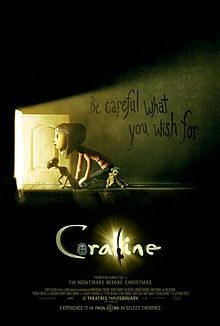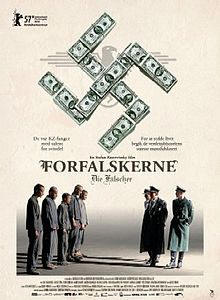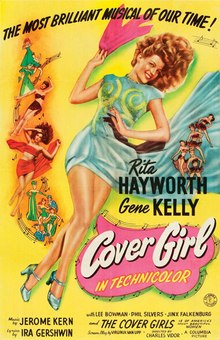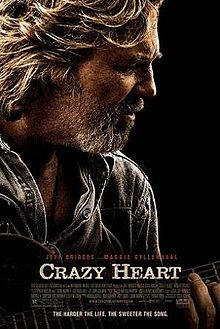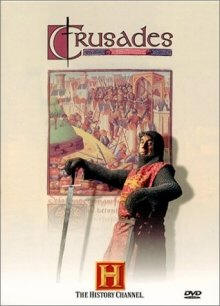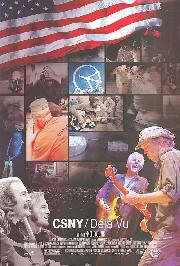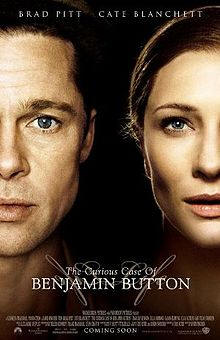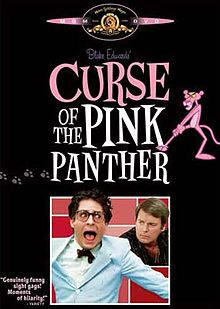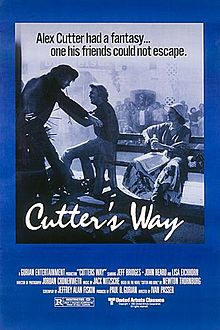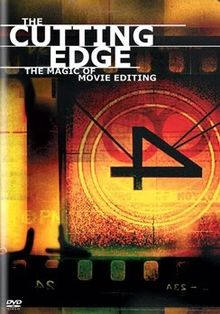|
Movies we've seen © 2004-2013 by John Varley; all rights reserved |
C
|
C.S.A.: The Confederate States of America (2004) Aided by his foreign allies, Lee triumphs at Gettysburg and soon sweeps into Washington. Lincoln flees, disguised as a Negro, but is soon captured. (DW Griffith makes a movie about it, shows the cowardly Lincoln singing spirituals to prove he's really a darkie. "What kind of white man are you, suh?") Later, on film in 1905, exiled in Canada, Abe bitterly regrets he didn't take the slavery problem more seriously. ("If I could save the Union and not free a single slave, I would do it.") All this and much more is presented as a documentary by the British, seen uncensored in the CSA for the first time, as part of a new, feeble, tentative neo-abolitionist movement ... You'd like to think the peculiar institution could not have survived into the 21st Century in any way, shape or form. This has to be a nightmare or a joke, right? Well, of course it is a nightmare, but it is no joke. Nothing in it struck me as completely implausible. The writer/director, Kevin Willmott, has given it all a lot of thought, and comes up with reasonable and logical sequences whereby it is possible to believe that the defeated North might come to embrace slavery. One thing not mentioned often in history books is that Negroes were not much liked in the North, not even after emancipation. Hell, look at the busing riots in South Boston in the 1970s if you don't believe me. In fact, many if not most abolitionists themselves considered Africans an inferior race; they just objected to chattel slavery, they didn't want them to marry their daughters, or even leave their rightful "place," which was below whites. An appeal to cupidity, that is, an economic incentive to own at least one slave in the form of a generous tax break from President Davis, would probably have gone down quite well. We already know the outcome of the history, because the program is frequently interrupted for commercials for products like Niggerhair tobacco (a real product) and restaurants like the Coon Chicken Inn and Sambo's. Or how about little blue pills (with a zillion side effects, including death) to keep your "servants" happy and docile? Or shock bracelets to keep them from straying? It all makes you squirm, it's funny but you can't laugh. Damn it, could it have happened? In 1999 I might have laughed it off, but we've seen a lot since then. We Americans have a stubborn streak in us, some might say boneheaded. A huge number of us practice a religious fundamentalism you'd have to go to Afghanistan to equal. These folks deny evolution, condemn homosexuality (it's in the Bible!), believe in some horseshit called "The Rapture." We are prepared to go it alone, morally, secure in the belief that we are right and all the rest of the civilized world is wrong. Capital punishment is a good example. Restrictive laws on stem cell research. I'm sure you can think of many others where only Americans seem to believe America is on the right course. Lately, it's the "War on Terror." Everybody else in the world sees we're creating many more terrorists than we're killing, but Americans can be bamboozled by bumper-sticker politics like "Stay the course!" and "Don't cut and run!" In the face of world condemnation of American slavery, wouldn't Americans just dig in? I think they would. So, in 1935 Hitler could have been our ally, as in this movie. Our sole objection to his plans for Jewish genocide would be "Don't kill 'em; enslave 'em. They're a useful resource!" Still don't believe me? Well, it's in the Bible, goddam it, and we know that anything that's in the Bible must be true:
Ephesians 6: 5-8 I rest my case. IMDb.com Cabaret (1972) As we all know, Hollywood is legendary for buying a property—most often a book—and then completely re-writing it, losing just about everything that was good about it in the first place. This doesn’t happed so often with Broadway musicals; usually Hollywood limits its meddling to casting non-singers (Audrey Hepburn, Natalie Wood) and letting Marni Nixon repair the damage in the dubbing room. But Bob Fosse took a successful Broadway musical and eliminated half the musical numbers (a few new ones, also by Kander and Ebb, were added), and completely re-wrote the book, eliminating some of the characters, adding new plots, and most of all, bringing Sally Bowles way to the forefront as a star turn for Liza Minnelli. Just about the only thing left of the original was the pre-war Berlin setting, and the Kit Kat Klub. And it all works gloriously. The best change was to eliminate all the “book musical” numbers, where characters in the real world suddenly burst into song. All the songs were now set in the club, and either showcased Liza’s singing or commented on the plot, sometimes both. I’m very happy that I saw the movie before I saw the musical on stage, because I might have been resistant to all the changes made. As it stands, I was able to love the movie, and love the musical when I saw a roadshow in Portland with Joel Grey. And people never have stopped meddling with this story. It has an amazingly checkered history, from the novel I Am a Camera by Christopher Isherwood, to a John Van Druten play, to a Sandy Wilson and then Kander and Ebb groundbreaking musical, then Fosse’s version, and a very different and successful “re-imagining” and revival in 1998. Musical numbers have vanished and reappeared in different versions. Maybe this malleability is the strength of the material. I’ve seen this movie maybe five or six times over the years, the first time in San Francisco on the big screen the week it opened, but it was our privilege this last time to attend a showing, part of an ongoing series presented by the Los Angeles Conservancy called "Last Remaining Seats,” in the fabulous (and I do mean fabulous!) Los Angeles Theater on Broadway, hosted by none other than Michael York! He regaled us with some stories about the production. My favorite: He said he heard Bob Fosse was casting, and looking for “a Michael York type,” so he hopped a plane from somewhere in the West Indies and showed up for the audition. He turned out to be perfect for the role! Who would have guessed? IMDb.com Cabin in the Sky (1943) This has to be the best of the all-black movie musicals … not that there were a lot of them, but still. It has just about every black actor on the MGM lot, and plenty of other guests such as Louis Armstrong and Duke Ellington. Great singing by Ethel Waters and Lena Horne, in her first screen appearance. It was also the first movie directed by the great Vincente Minnelli. It features some great tap and jazz and jitterbug dancing by some of the unheralded (to most white people) geniuses like Bill Bailey (who is said to have invented the moonwalk) and John William “Bubbles” Sublett. Another man whose name will forever contain quotation marks, Eddie “Rochester” Anderson, shows he can do a lot more than get off great one-liners putting down Jack Benny. It’s a religious story of temptation and redemption, but done with wit and humor and a lot of heart. The usual cranks have accused it of racism, a charge that just doesn’t stick. Sure, shooting dice is a racial stereotype, but people of all races do it. (Anderson calls them “calamity cubes.”) In 1943, except for “race” movies made to be seen only by black people, the only black faces you saw in any movie were elevator operators, shoeshine boys, housemaids, and Pullman porters. And the fact is, MGM took a big chance making this film at all, knowing that all through the south theaters simply would never play it. Well, that’s the South’s loss. Those assholes never knew what they were missing. IMDb.com The Cabin in the Woods (2012) This one has been sitting on my TO REVIEW list for two months now, as I ponder how I can communicate how much I hated, hated, hated this movie. I guess I’d better start with a brief plot summary. Richard Jenkins and Bradley Whitford are with dozens of other people in some sort of super-secret, super high-tech mission control facility spying on this group of young people who are going out into the wood to spend a weekend. They are the usual horror movie suspects: dumb blonde, jock, comic relief nerd, smart girl, and the next-to-last guy to die. Very soon they are being gruesomely murdered by some sort of zombie family. And the people in central control are making bets on who goes next. WTF? I’ll skip ahead to the Great Surprise. Turns out that all those ancient gods of yore, you know, the ones that demanded frequent blood sacrifices? Aztec, Samoan, Greek, Norse, all them bastards? Turns out they’re for real! They’re really down there, in the ground, and all these years the self-sacrificing heroes in Mission Command have been engineering these slaughters of innocents to appease them! Keep THE GODS from rising and destroying mankind, or something! To this task they bring a gigantic army of bloody-thirsty, psychopathic, beings of some sort, kept in a vast library. (Near the end they escape and we see them as the destroy each other. I see hardly any of these kind of shit movies, but even I could recognize some of them simply from having seen the movie posters. I’m sure a gore devotee would recognize nearly all of them. This is Joss Whedon—by far the most overrated guy in Hollywood—winking at us, assuring us the bloodbaths are all in fun.) Trouble is, Whitford, Jenkins and their murderous accomplices are themselves having a great deal of fun doing this stuff. There is an office pool about what monster will be released, who will die first, and so forth. There is great cheering, Champaign corks popping, confetti and ticker tape. Yeah, yeah, they have to emotionally distance themselves from the repulsive work they do, like cops and ambulance crews. Yeah, I get it. And halfway through the movie I wanted nothing so much as to roast every one of them over a very slow fire. I hated these characters beyond almost anyone else I have ever encountered in a movie. I was very disappointed that they all died (of course) too quickly. I wanted them to suffer! I’m going to give away the ending without even a spoiler warning, because this movies doesn’t deserve even that courtesy. At the end Smart Girl and Nerd are the only survivors. She realizes that to stop the Ancient Gods from emerging, to “save the world,” she has to kill Nerd, because that’s in the script. She thinks about it … and she lets him live. And it was the right choice. I cheered her on. If the world were like that, if to satisfy a super-powerful psychotic like, for instance, Jehovah, you had to kill your good friend and companion-in-arms, I say let the fucking world be destroyed! If our real world could be such a degraded place that a crew of people repeatedly engineer the painful and horrifying deaths of total innocents and think of themselves as heroes … just doing a nasty job that has to be done, dude, that’s all … then let the fucking world be destroyed. I don’t want to live in it. Decent behavior is more important than to perpetuate that sort of world. Let it die. And it does die, and everyone in it, I presume, and I loathed this movie more than anything I’ve seen in ten years. IMDb.com Caché (2005) ... means "hidden" in French. This just missed by a hair qualifying for the coveted Gerry Award, which we give out, when we are so moved, to the slowest, most obtuse and deliberately confusing movies of all time. This award never goes to Grade-Z movies, flicks that aspire to nothing. These special movies are made by internationally acclaimed directors, and more often than not, are lauded by the critics. The Gerry Award is our way of shouting out "The Emperor has no clothes!" Roger Ebert and many others gave it their highest rating. BALONEY!!! It starts well, sort of living up to the "Hitchcockian" description on the box, though even here it is very, very slow. It is an intriguing situation: somebody is videotaping the comings and goings of a couple and sending them the tapes, along with disturbing drawings involving bleeding cut throats. The spying, and the husband's reaction to it, begins to affect their lives, badly. There is one genuinely startling scene. The suspense builds ... but around 2/3 of the way through I knew the enigma was not going to be solved. No one ever looked for the cameras, which must have been easy to find. Something existential is going on here, divorced from what we think of as reality. Then the credits start to roll. Reading Mr. E's review, I was led to put the disk back in and go to the last scene, where some sort of revelation was supposed to be happening. (By then I was so bored I wasn't even watching, and the "revelation" happens down in the left-hand corner of a long, static shot like 40 others long, static shots in the picture.) The revelation was a bust. There was no meaning to this film, no solution, and that can be cool ... but you need a lot more going for you than this movie has to make it work. Zero Stars, Roger!!! And a solid First Runner-up for the Gerrys, which as you all know, means that if for any reason, like the seizure and burning of the negative by an angry mob, the Gerry winner cannot complete its duties as Most Awful, Caché will be asked to fill in. I liked it. IMDb.com The Caine Mutiny (1954) It is my firm belief that if a good movie is made from a good book, it’s best to see the movie first, then read the book. I saw the television series of Lonesome Dove first, then read the book. That was perfect, as I absolutely loved the series, and then reading the book only enriched the experience by adding the elements that only a book can convey. Conversely, I read Cold Mountain before I saw the movie, and the movie, though not bad, couldn’t begin to match the book. The experience was lessened. I can only wish I’d seen Catch-22 before I read the book, as the movie failed miserably to live up to the incredible black humor of the book. I feel sure I would have loved the movie if I hadn’t read the book, and then reading the book would have blown me away even more than it did. (Catch-22 is my favorite book of all time.) My experience with The Caine Mutiny sort of straddles those two examples. I saw the movie many years ago and was solidly impressed, particularly with Humphrey Bogart’s amazing performance as Captain Queeg. So I remembered most of the important plot points of the movie, though I had some details wrong. Recently I read the book, and now I’ve seen the movie again, and I enjoyed both experiences. It was interesting to see how the screenwriter tackled the challenges of this quite large book. Basically, he chopped almost 100 pages off both ends. This was entirely proper for a movie, as the first part dealt with the protagonist, Willie Keith, his experiences in school and apprenticeship with the Caine’s first Captain, and his relationship with his girlfriend. The last part dealt with the aftermath of the mutiny trial and the final end of the Caine. All this was great for a book, but a movie of this sort must get into the conflict quickly, and anything after the verdict would have been a long anti-climax. Movies can’t afford that. Willie was cleaned up a lot, too. In the book his relationship with the girl, May Wynn, was complex and not flattering to him; he was rich and she was a poor Italian nightclub singer, and his basic attitude—helped along by his mother—was that she wasn’t good enough for him. He grew throughout the book, but all this would have been a distraction in the movie, so the relationship, and her character, was greatly simplified. Also, the phony intellectual Tom Keefer (Fred MacMurray, in a really brilliant performance), the “real villain of the piece,” in the words of the defense lawyer, Barney Greenwald (José Ferrer), didn’t show his cowardice until the Caine went back into action after the trial under Keefer’s command and was hit by a kamikaze. It was vital that we see him for the worm he was, so the screenplay had him testifying—and lying, to cover his ass—at the trial, which he didn’t do in the book. This sets up the most shocking scene, when Greenwald throws a glass of wine into Keefer’s face, and Keefer is at least self-aware enough not to do anything about it. His position was, it seems to me, even worse than Queeg’s. Queeg the paranoid could delude himself that he was the victim of disloyal officers, so he didn’t have to face the fact that he was a coward. Keefer was a coward … and was smart enough to know it. I see him as withering in self-loathing over the years. A word about casting. When I read a book, I tend to cast the characters as either people I know, or movie actors who seem to me to fill the bill. Sometimes I pay attention to the author’s descriptions; sometimes they’re merely guidelines. In The Caine Mutiny Herman Wouk spends a lot of time on physical descriptions of his characters … and in the movie not one of them bears the slightest resemblance to what Wouk wrote. Reading the book, there was no way I could cobble up a picture based on Wouk’s descriptions. I just couldn’t see Steve Maryk as a squat and ugly little guy. In my mind he had to be Van Johnson. (This is one of the reasons I usually limit my character descriptions in my own work; I assume the reader will do his or her own casting.) In the book Queeg was only in his thirties, and potbellied. Bogart, of course, was 55, but to my mind he was a perfect Queeg. Interesting bit of trivia: The actress playing May Wynn (which is a stage name in the novel) is listed as … May Wynn! The former Donna Lee Hickey liked the name so much she adopted it as her own. Good choice, Ms. Hickey! IMDb.com Calendar Girls (2003) A movie in the pattern of The Full Monty, and not all I had hoped it would be. Good fun, but it’s become a bit of a formula by now. And according to things I read, it was considerably altered from the real story to make it ... well, more formula. IMDb.com California Split (1974) In 1970 Robert Altman came barreling out of nowhere with M*A*S*H, on my personal Top 25 Best Films Ever List. Well ... not exactly. He had actually served a 20-year apprenticeship in series television (everything from "Peter Gunn" and "Maverick" and "Bonanza" to "The Gale Storm Show" and "The Millionaire") and made a few minor movies. But nothing prior to 1970 would have hinted that he had a movie like M*A*S*H in him. It was revolutionary in more ways than I could count. It came out the same year as Catch-22, based on the best anti-war book ever written, and directed by hotshot Mike Nichols ... and completely blew it away. For the next 5 years he made a string of movies hardly ever matched by a Hollywood director before finally coming a cropper with Buffalo Bill and the Indians. Not every one of them was a box-office smash, and California Split is the most obscure of them. Until recently it wasn't even available on video. And I can't understand why, because it's as good as any film he ever made. It is a story about two gambling addicts, played wonderfully by George Segal and Elliot Gould, but like so many Altman films, it isn't really about anything as simple as that. It's a series of episodes, and in a normal film about gamblers it would chronicle a steady descent into desperation and, at the end, either redemption or final ruin. There's really no other way to go when you're talking about compulsive gamblers, right? Wrong. Altman isn't interested in moral lessons or tales of triumph. He simply shows us some guys who aren't alive unless they have some action. They'll bet on anything, and seeing them in their sleazy natural habitats, and the crazed characters that surround them, is the real delight of this film. Then Segal gets desperate, he owes a lot of money to a guy you don't want to cross, and decides to solve his problem by—what else?—making a big, big win in Reno. Not bloody likely, right? Wrong. He wins very big, and we are exhilarated along with him, and agonized along with Gould, who is banished from the games by Segal because he's bringing bad luck ... and then Altman goes one step further, which is to show the emptiness after the big win, the momentary realization by both of them that it isn't about winning, for them. It's about action. You know they will blow the big score, and so do they. But who cares, as long as you have some action ... IMDb.com Call Northside 777 (1948) Before there was The Wrong Man, there was this movie. Both are in a semi-documentary style, both concern men wrongly convicted of murder, both were based on true stories. In this one, filmed on location in Chicago, Jimmy Stewart is a reporter who is reluctantly put on the story when the convict’s mother, a charwoman, saves up $5000—a huge sum back then—over eleven years, and offers it as a reward if someone can prove her son’s innocence. Stewart eventually becomes passionately convinced the wrong man is in jail. (Of course, he eventually does get him released, or we wouldn’t be telling this story, would we?) It’s nicely done, and it’s fun to see what was considered hi-tech in 1948. They super-enlarge a photo to see the date on a newspaper in one corner, and then “fax” it from Chi-town to Springfield, a process that looks like it takes about half an hour, and the fax must be developed at the other end. And it must be one of the earlier instances of showing a polygraph, the bit of technological witchcraft usually called a lie detector. Amazingly, the man who administers the test is Leonarde Keeler, who IMDb claims is the inventor of the device. Wikipedia differs, but it is certain that Keeler played a part in its development. And I’m sure the man meant well, but in my opinion it’s an evil piece of shit. It is easy to learn how to fool it (the CIA gives classes on that), and sociopaths and psychopaths instinctively know how to fake their way through. Even worse, refusing to take a test disqualifies you from holding many government and even private jobs, and to most people is a clear indication of guilt. I would banish them from police departments and government agencies at once if I were president of the country. So vote for me, okay? IMDb.com The Cameraman (1928) This was the first film Buster Keaton made under contract to MGM, which means it was the first where he didn’t have complete creative control. Luckily, the iron fist of the biggest studio in Hollywood didn’t hammer him too hard on this one. That was to come later, when MGM’s idiotic idea of what audiences wanted to see clashed mightily with Buster’s comedic genius. I think it’s noteworthy that none of the great comics and comedy series of the silent era and early sound era came from the big studios. The producers of Our Gang, Laurel and Hardy (Hal Roach), the Keystone Kops and Charlie Chaplin (Mack Sennett) and others were all poverty row studios. That, or they ran their own productions, like Keaton and Harold Lloyd, and later Chaplin with United Artists. They were seat-of-the-pants productions, and not amenable to big studio regimentation. Studios stifled spontaneity, which was at the heart of these small, cheap masterpieces. It’s significant that the single funniest scene in The Cameraman is of Buster and another man trying to change from street clothes into bathing suits in a tiny dressing room. Keaton and Edward Brophy improvised it on the spot, in one take. Brophy wasn’t even in the script, he was Buster’s prop man, drafted because he looked right! Sadly, this is the last of Buster’s real masterpieces. After this, he was straitjacketed by the studio. Buster called his decision to sign with MGM as “The biggest mistake I ever made.” That, from a man who made a lot of them. IMDb.com Camille (2007) This one went direct to DVD. It got off to an extremely rocky start for me, as this white trash couple got married. He’s so ambivalent that he can only choke out a “Yes” at the altar. She’s so oblivious, so blindly in love, that she can’t see this as a bad sign. He spends the first few hours of their honeymoon (on a motorcycle with a sidecar) bitching at her because she won’t shut up, even for a minute. So I despise him. Trouble is, she won’t freakin’ shut up, and I almost felt sympathy for the asshole husband. She is a super-annoying perkster, seemingly impervious to disappointment. She is so impervious, in fact, that when they are in a bad accident and she is killed … she won’t freakin’ lie down! He soon understands that she is, in fact, dead, but somehow still walking around. Clue: she is starting to smell bad. Another clue: she doesn’t feel it when a cop shoots her through the shoulder. They “solve” the aroma problem by bathing her in formaldehyde … which, I would think, would simply substitute one foul odor for another, but never mind. The issue of tissue decay is not addressed; no chunks of flesh fall off her, though she does carelessly lose part of a finger. I understand that this is in some way allegorical, that it is supposed to be saying something about undying love, and the asshole husband learns to love her only after she is dead … but it all just fails to come together. IMDb.com Camp (2003) A pale imitator of Fame, some of it astonishingly amateurish. Some of the worst acting and writing I’ve ever seen. IMDb.com Candide (2005) (PBS "Great Performances" DVD) So far as I know, Leonard Bernstein only had one flop, and this is it. In 1956 it ran for 73 shows, to critical disdain. But the cast album was a hit, and ever since people have been tinkering with it. What was wrong the first time? Some say it was a heavy-handed book by Lillian Hellman. Some say the story wasn't right for the time, like Bob Fosse's Chicago, which didn't catch on until the revival. Harold Prince brought Candide back in 1974 with a new book by Hugh Wheeler, who worked with Stephen Sondheim on A Little Night Music, Pacific Overtures, and Sweeney Todd. (Did you know Sweeney is currently lensing (as they say in Variety) in London, helmed by Tim Burton and starring Johnny Depp? I can hardly wait!) The story and songs in this new version had been tweaked by Sondheim and others, including Dorothy Parker. Considering she'd been dead for seven years at the time, I assume this was a project long in gestation. I'm just as glad I missed this version, as they seem to have jettisoned half of Bernstein's music! What were they thinking? I have a soft spot in my heart for Candide. The Nederland, Texas, High School Band (2nd Chair French horn: John Varley) performed the overture, and it was one of the toughest pieces of music we ever tackled. It has become part of the standard concert repertoire, always a crowd pleaser with its pleasing themes, rollicking tempo changes, dramatic swoops and flourishes. Most people don't know the rest of the music score, but I'm familiar with most of it. But I'd never seen it staged. ... and maybe I still haven't. Depends on what you mean by "staged." Several reviewers of this performance call it "semi-staged." This is to distinguish it from "concert performances," such as I've seen on videotape of Sondheim's Follies. This format is like a dramatic reading, with songs. Actors stand before the orchestra, maybe with a script in hand, and do the play with no scenery or movements. I'll confess to a weakness for seeing something new and experimental, especially when it comes to older works. I'm up for almost anything. Lee and I have seen The Mikado set in Texas (The Mikado, Y'all!), and the Eric Idle version set in an English seaside hotel. Loved them both. (The Mikado has absolutely nothing to do with Japan.) I liked Baz Luhrman's Romeo + Juliet almost as much as the "authentic" version by Franco Zeffirelli. Sure, I like the old-fashioned stuff with costumes, set changes, and all that jazz, like My Fair Lady, The Music Man, Guys and Dolls. Vegas is getting into the act more and more, with mega-spectacles like The Producers and, opening tomorrow at the rebuilt "Grail Theater" at the Wynn, Spamalot. But the kind of things that intrigues me more are the giant turntable in Les Miserables, or the band on stage, singers and dancers sitting in the open until called on as in Chicago, or the no-frills, bare stage of A Chorus Line. This Candide is a mixture. It ran only 4 performances (could have gone much longer, I'm sure) at the Avery Fisher. The "pit" orchestra was the New York Philharmonic (!!), under the baton of Marin Alsop, the foremost female conductor in the US, and former musical director of the Eugene Symphony in Oregon while I lived there. But the musicians weren't in the pit, they were right out there on stage, with Alsop in the center of things (she even had a line of dialogue). At the back of the hall were five rows of chorus singers, the front rows of which doubled as actors and soloists in the small parts. They did things like hold up signs to enhance the story. And the action took place on runways between the orchestra and chorus or out in front. No scenery, no costume changes, few props, but tons of sparkle and wit. Comparing the various versions I will have to leave to those more versed in Broadway lore than I. Some strong views were expressed ("Bernstein is rolling over in his grave!"), but the majority seem to think that all the changes wrought were improvements on a rather turgid (except for the music) original. That sounds about right to me. I try to envision this frothy material done in period costumes, and I think it would be a hard sell. I don't know if the original had a narrator who later becomes part of the action as Dr. Pangloss, as in Into the Woods, but it works for me. I do know that in the original the character of "The Old Woman" had only one song, and as played here by Broadway legend Patti LuPone she has five. Works for me. I could listen to her sing all night, and the lady can act as well, anything from Noises Off to extensive appearances in Shakespeare's plays. (In this Candide, the cast got so tired of calling her The Old Woman that they finally referred to her as Patti LuPone, to much laughter.) There are a lot of jokes like that. When LuPone first makes her appearance, the orchestra begins and it looks like she is about to sing, but Cunegonde stops them and says, forcefully, "My song," and waits for the diva to slink offstage. "Donald Trump" is brought on to do some firing. This is in the operetta tradition of Gilbert and Sullivan, where it is standard practice to add topical verses to such songs as the Lord High Executioner's "I've Got a Little List." The music is performed perfectly, and the singing is great, led by LuPone and 4' 11" firecracker Kristin Chenoweth, who I know mostly from her role in the last seasons of "The West Wing" as Annabeth Schott, upon whom six-footer Allison Janney as C.J. Cregg once looked down on and said "It's hard to believe we're the same species." I had no idea Chenoweth could sing, but my oh my, she can! She has a glorious soprano voice and completely owns the upper register. (I used to find operatic sopranos excruciating, but I don't anymore. I wonder if it's hearing loss?) She is terrific in Cunegonde's aria "Glitter and Be Gay," which I understand is very tough to sing. It sure sounds like it. The man playing Candide is not someone I've ever heard of, but his voice is great, as is the fellow playing Pangloss. All in all, a wonderful evening at the operetta. IMDb.com The Canterville Ghost (1944) Here’s a short story by Oscar Wilde that has been filmed no less than 11 times and, from what I can see about the versions that have a plot summary, never very close to the original story. It seems that all the producers wanted was the idea of a ghost in a castle, then worked endless variations on it. Oh, well. This is the first version, and it’s very good. Charles Laughton is the ghost. In the 1600s he is fleeing an act of cowardice, and hides in a small room in his father’s castle. The man whose honor he insulted knows he’s in there, the father denies it, and the man says, Well, if he’s not in there you won’t mind if we seal off that room with bricks. Have at it, Dad says. When the last bricks are about to be put in place, the son calls out to his father. The father says, I heard nothing. The son is sealed into the room. It’s a fairly harrowing scene, for a comedy. The son becomes a ghost, and can’t be freed until another Canterville performs an heroic act in his name. Trouble is, the Cantervilles down the centuries are cowards to a man. That’s the set-up for a lot of comic horseplay featuring Laughton and a bunch of American ranger commandos staying in the castle before a raid. Laughton is a cowardly ghost who’s only gotten by all these years because people are just afraid of haunts. The Americans quickly get the better of him. Robert Young turns out to be the man who can redeem him … if he’s not another coward, like all the other Cantervilles. Except for Margaret O’Brien, the current Lady Canterville, who is six. She shows more spunk than anyone, and I thought it was a bit of a shame that she couldn’t be the one who did the heroic thing. That would have been a nice twist. Margaret O’Brien is still alive and looking very fine at 75. She was a good child actress, better than Shirley Temple, in my opinion, except for the singing and dancing part. She was a big star in the ‘40s, but was one of so many who couldn’t make the transition to adult parts. Happily, though, she wasn’t one who was cheated out of all her money. She was given a special Oscar for Outstanding Juvenile Performer for Meet Me in St. Louis, but it was stolen and she didn’t see it again for 50 years, when some antique dealers found it and returned it to her. Don’t you love stories like that? From this performance I would have thought she was British—she had the upper-class accent down pat—but she was born and raised in San Diego. There is an incredible quote from her, at age six: “When I cry, do you want the tears to run all the way or shall I stop halfway down?” Now there’s an actress in control of her craft! Tears made to order! IMDb.com Capote (2005) By now the events surrounding the massacre of the Clutter family in Kansas have passed into legend, into the cultural filing cabinet along with Jack the Ripper and other horrors we know entirely too much about. This event would have been long forgotten except for Truman Capote's book and the later movie In Cold Blood. I've never read it, but I saw the movie, and have heard a lot of things from people who did read it. Who are unanimous in feeling it was a great achievement. I have to keep reminding myself, "non-fiction novels" and movies are not history. Or, if they are, they are much less reliable than the footnoted and corroborated tomes we used to read for history. The movie of the book took liberties. Here we have a movie about the writing of the book ... and what are we to think of that? We are shown Truman Capote's gradual descent into moral bankruptcy. Already a practiced liar and self-promoter, by the end of the five-year ordeal he had very few principles left ... ... according to the movie. Truman's not around to speak up for himself. (Click here to see a picture of Varley with Capote!) We see Truman waiting desperately for Perry Smith to unburden himself as to what actually happened, not so much because he cares but because it takes him to the next-to-last step toward the end of the book. We see Capote in a massive depression because the execution keeps getting stayed, which is the worst thing that could happen ... to Truman. His concerns for Smith by now seem either faked or a bit late. But what do we know? Only Capote was in that cell when Perry told his story. If he did. Sometimes some of the lines seem a bit ... convenient. "I liked him ... right up to when I cut his throat." Great line for a movie. Hmmmmm.... But that aside, ignoring questions I might have about accuracy ... this is a fine, fine movie. The multiple layers of ambiguity work just fine. Soon we are in a moral morass that it is impossible to easily sort out, and that's the sign of a good movie. Philip Seymour Hoffman is so good he actually seems smaller than he really is. Bravo to the Academy. A richly deserved Best Actor win. IMDb.com Captain Blood (1935) One of the all-time great swashbucklers. Errol Flynn got lucky when landing this part after several more famous actors had to turn it down. It made him a big star, and it’s east to see why. He is absolutely magnetic, and so is his co-star Olivia de Havilland. There is a long action scene with pirates attacking a town which will remind everyone who has been to Disneyland of the Pirates of the Caribbean ride there. Except for the fact that no one is singing “Yo ho, yo ho, a pirate’s life for me!” and they are actually killing a few people, it’s a dead ringer, and I’m sure the imagineers at Disney used this as a template. The action scenes are wonderful, the montages expert in a way no one in Hollywood knows how to do anymore, and the model work is excellent, except for the inevitable phoniness of explosions in the water, which make the little ships look like models floating in a bathtub … which they were, of course, only it was a damn large bathtub. Nothing anybody could do about that back then. IMDb.com Captains Courageous (1937) I’ve never read the book by Kipling, but the Wiki summary doesn’t even mention the character of Manuel Fidello, for which Spencer Tracy won an Oscar. I have to assume Hollywood made him up. Which really shortchanged Mickey Rooney, who has almost nothing to do as the son of the captain of the Grand Banks fishing boat, who in the book befriended the stuck-up little rich kid (Freddie Bartholomew) when he was washed overboard and had to learn how to be a man in a hard world. The screenwriters were going for a father figure to replace the kid’s real father, a tycoon who couldn’t be bothered to raise his own son. Maybe I haven’t been around enough Portagees, but I didn’t find Tracy’s accent convincing. It doesn’t really matter. Tracy is a memorable character and this is a rip-snorting adventure, very satisfying, a portrait of a hard and dangerous life, and contains some really stunning footage of these relatively small sailing ships in heavy weather. Lionel Barrymore is as crusty and irascible as usual as the captain of the We’re Here. And there is one of those moments that makes you shout Yes!!, when the captain finally loses his patience and whacks the kid upside the head. I’d have thrown him overboard for shark chum about ten minutes before that. IMDb.com Capturing the Friedmans (2003) As good a documentary as I’ve ever seen on the elusive nature of "truth," and how unlikely it often is for things to work out as neatly as they usually do in books and on television. A high school teacher and his son are accused of child molestation. Everybody lies, there is a Crucible sort of witch hunt, and at the end you don’t know where you stand. You can be certain that the father actually molested one child because he admits it. As for the rest, it’s all up in the air. Fascinating. IMDb.com Carandirú (Brazil/Argentina, 2003) Prisons are different south of the Rio Grande. I’m not saying those in the US are a lot of fun, but I suspect most prisoners in Attica or Leavenworth would elect to spend ten years there rather than do two or three in a Mexican or Brazilian slammer. Carandiru in Sao Paolo was a particularly bad one, and this is its story. Basically, the prisoners ran it, the only function of the guards being to prevent escapes. There were places in the prison where the guards didn’t dare go at all. This is the true story of a time in that prison, shortly before a riot, witnessed by a doctor who had free run of the place, protected because the inmates respected and needed him. It’s no secret that the movie ends in a riot, that the army was called in to stop it, and that over a hundred prisoners were killed. The army said they were merely protecting themselves. No soldiers died, or were injured. You figure it out. IMDb.com Carnal Knowledge (1971) I think just about the best thing about the ‘70s was the movies. Don’t even talk about the clothes! A handful of movies broke new ground, led us in new directions that lasted most of the decade, until the mega-million blockbuster and big studio timidity shut much of the experimental stuff down. We may be coming out of that today, with more adventurous films appearing to compete with the cookie-cutter superhero dreck that had taken over the first part of the new century. Mike Nichols made two of those movies (his first two), Who’s Afraid of Virginia Woolf? and The Graduate. This was his fourth, and it was another ground-breaker. It smashed through a lot of barriers concerning sex. Ann-Margret did nude scenes. Not a huge deal today, but pretty gutsy back then. She got an Oscar nomination. Rita Moreno should have, too. I had forgotten that this was written by Jules Feiffer. Viewing it again, I can easily see it now. Feiffer was known (he’s still alive, BTW) for his cartoon panel strips, sometimes taking up a whole page in the New Yorker and Playboy, where I saw them, and many other magazines. They would typically feature two people talking, exposing their neuroses, insecurities, lack of self-esteem. They were very trendy in the ‘50s and ‘60s and into the ‘80s, I guess. I haven’t seen any for a while, though. After a while you will probably notice—if you’re a film buff like me who notices the camera—that the camera hardly moves here. So most of the shots are framed like a Feiffer strip. Even more important, there are only two or three scenes that have more than two people in them. Almost the whole movie is composed of scenes where just two people are interacting. Little set pieces where the people talking reveal a lot more to us than they know about themselves. There are only six speaking roles. It’s a very sad story. Art Garfunkel (who surprised me by acting much, much better than I had expected) and Jack Nicholson are college roommates, both of them desperate to get laid. What boy isn’t at that age? I sure was. Art is the shy, sensitive one, Jack is more outgoing, and a supreme bullshit artist. But neither of them can really see a woman as a person. She’s pretty much tits and ass to them. Again, I was the same way in high school. I was bloody awful. But I like to think I grew out of it. These guys never do. Jack is the worst, thinking nothing of taking Art’s girlfriend, Candace Bergen, driving her to distraction, a real rotter. But Art is not a lot better, when you look closely at him. We skip ahead twenty years, drop in on them when Art is a doctor and Jack is successful at … something. Can’t recall what, if it was even mentioned. He’s made a lot of money, okay? Women are still a puzzle to them, and the boys still want to get laid. Only Jack is having a little trouble in the erection department. He meets a girl, Ann-Margret, who finally satisfies all his requirements in a female: great tits, great legs, great ass. But he is incapable of having a human relationship with her, or any female, and it goes bad in her depression, boredom, and screaming fights. Ann-Margret attempts suicide. The final scene is among the most brutal ever written, I think. Jack is regularly seeing a woman who we soon realize is a prostitute (Rita Moreno, in one of the most riveting small parts I’ve ever seen). She prepares to give him a blow-job … and suddenly he is livid! She has blown her lines! She must follow the script exactly as he wrote it. So she starts over. And she is slowly sinking to her knees, talking to the camera, and she’s telling him what a masterful, powerful, manly, wonderful guy he is, just raining praise on him, and she’s sinking, sinking, sinking down. The wallpaper behind her keeps moving up, and it’s clear pretty soon that it must be on a roller, because no one can sink that far into the floor. This is the only way Jack can get it up anymore. It is so far beyond pathetic that it gives me chills, makes me shudder, to watch it. This is a movie where everyone involved is at the top of their form, and really one of the saddest movies I’ve ever seen. Seldom have relationships been dissected so ruthlessly. IMDb.com Carnage (France/Germany/Poland/Spain, 2011) This is an awful, terrible movie. It’s awfully delicious and terribly funny. I figured when I heard the plot line that it was going to be deeply serious, with people baring their souls, a bit like Who’s Afraid of Virginia Woolf? It is a 4-person play, like Woolf, taking place in real time on one set, except for two outside framing scenes. But I felt very different watching this one. It is supposed to take place in Brooklyn, but it was directed by Roman Polanski in France, for obvious reasons. The set-up: An 11-year-old boy hits another boy in the mouth with a stick, busting up his lip and knocking out two teeth. The victim is the son of Jodie Foster, who may be a writer and may be an alcoholic, and John C. Reilly, who sells bathroom fixtures for a living. The attacker is the son of Christoph Waltz, a high-powered lawyer with a cell phone attached to his hand, and Kate Winslet, an investment broker or banker or some such shit. They have met in John and Jodie’s apartment to discuss it all, apologize, accept the apology, and decide on what’s an appropriate punishment. They are all oh-so-civilized about it. But then little cracks begin to appear in their urbane façade. It’s clear that the couples don’t like each other … and that the husbands and wives don’t like each other, either. Before long it all degenerates into schoolyard name-calling every bit as juvenile as their sons engaged in. In the later stages it is fueled by John C.’s 18-year-old Scotch. It’s not always couple against couple. At some points the women are bonding, and then hating each other, and the same with the men. In one of the most surprising comic scenes I’ve ever seen, Kate, who has had an upset stomach (possibly caused by Jodie’s apple-pear cobbler) projectile vomits all over the valuable books on the coffee table. How gross and embarrassing is that? It’s an actor’s bonanza, naturally, and all four acquit themselves very well. John C. is clearly outclassed in education and station in life, and reacts by getting increasingly loutish. Waltz must answer his cell phone twenty times in the course of the movie, trying to set the strategy in some sleazy drug product liability case, while the other three simmer in silence. Kate becomes pretty unhinged, shedding her sophistication like a snake’s skin, and going nuclear because John C. murdered a hamster by setting it free on the sidewalk. Jodie also melts down, but in a different way. It was all fascinating, and frequently hilarious, as they had no idea how childish they look to us, the audience. IMDb.com Carol For Another Christmas (1964) I was talking to Spider Robinson one evening in late December and he hipped me to this oddball movie, with a fantastic cast: Sterling Hayden, Ben Gazzara, Eva Marie Saint, Steve Lawrence, Robert Shaw, Peter Sellers. Directed by Joe Mankiewicz. Screenplay by Rod Serling. Made back in the ‘60s, presented without commercial interruption (a very big deal back then), a “United Nations Special,” sponsored by the Xerox Corporation, shown once on TV and never seen again. I thanked him for the info, and we chatted a bit, then hung up. I turned on the TV … and discovered that while we were talking, Turner Classic Movies had been showing the movie for the first time in 48 years! And I missed it! Is that a weird Christmas story, or what? Fortunately, it has a happy ending, just like It’s a Wonderful Life and every other Christmas movie. Spider had recorded it, and sent me a copy, so we were able to watch it. Thanks, Spider! What it is, is an updating of A Christmas Carol, but it’s not a scene-by-scene reconstruction of the story we all know so well. Scrooge becomes Grudge, and Marley is not his dead partner but his dead son, killed in WWII, in which Grudge also served. He is a bitter old man, and in spite of his son’s wasted life, he believes strongly in staying on “our side of the fence,” and building faster bombers and bigger nukes to defend ourselves. Ben Gazzara, his nephew (sort of Bob Cratchit), is one of those com-symp pinko do-gooders he hates, who wants a “cultural exchange” with a professor in Poland. Goddam commie. Blow ‘em all up! He sees Marley’s reflection in the glass of his door, and then we’re off on the familiar journey with Steve Lawrence as the Ghost of Christmas Past. But we’re on a troop ship, a generic troop ship carrying home the bodies of soldiers who died in every war. Christmas Present shows him the millions who are starving while the lucky few waste food. Naturally, Christmas Future (Robert Shaw) shows him a world after a nuclear war when almost everyone is dead. The leader of one of the small groups of survivors calls himself The Imperial Me (Peter Sellers having a great time camping it up), and is urging his followers to make war on those “down yonder” and “across the river,” because they’re different. This is the most striking scene, as Me’s pronouncement made me think of a libertarian paradise, with no government to get in the way of one’s desires. That, or a Republican National Convention. If the speaker had been female, she could have been Ayn Rand. “I’ve got mine, Jack, screw you all!” Okay, if you want subtlety, Rod Serling is not your man. He always hammers home his point, in this case that it’s always better to keep talking, even to your enemies, than to quit talking and go to war. Who could argue with that? (Well, actually, at this very moment the fucking Republicans in the House and Senate are going to fight the nomination of Chuck Hegel, a Vietnam vet who knows what war is like, for Secretary of Defense, because he’s willing to talk to Iran, among other bleeding-heart cowardly positions.) Serling has written a talky, repetitive script … but that aside, I quite liked it. In particular I was happy that, after his experiences, Grudge does not become a delirious do-gooder like Scrooge, dancing around in his nightgown. He is considerably sobered, and makes up with the nephew, and we can see his views have changed, but he’s not a happy man. He probably never will be. I think that provides more food for thought than an overnight conversion. And to give Serling his due, he can also write a very powerful scene. Christmas Past takes him to Hiroshima, where he was in September, 1945, and he sees himself with his driver, Eva Maria Saint, visiting a hospital filled with schoolgirls whose faces have been burned off. Burned off, can you imagine that? Little children? They are ghostly presences under gauze, an indictment to all humanity. IMDb.com Carrie (1976) High school. How do we ever survive it? Yeah, I know there are those who were popular and think back on it as the best time of their lives. I saw them at the reunion, and they’re still the most popular. Then there are the ugly ducklings. You can walk though any high school campus and pick them out instantly. You may not see much of the hell they go through—most of that takes place away from the sight of the teachers—but it’s always the same. Some people never fit in. Myself, I was somewhere in the middle, not popular but not picked on much because I was the tallest boy in school, and even though I didn’t know how to fight, most of the bullies were intimidated by me. Sheer luck. I was socially inept, felt awkward all the time, and, to my shame, when I did see the ugly ones picked on, I did nothing about it. Stephen King must have had a horrible time in high school. That, or he observed a lot of it. This first novel is far from the only time he has skillfully portrayed the terror, the abuse, the relentlessness of bullies. It’s painful to watch it in this brilliant film by Brian De Palma. In 1976 we had never seen anything like this. It was groundbreaking in so many ways, from the opening with all the naked girls in the locker room, to the finale, literally drenched in blood and fire. It hit me so viscerally that, in spite of the fact that most of the people dying at the prom were innocent, and at least one of them was a true friend just caught in the crossfire, I was rooting for Carrie to blow them all away. Sorry, that’s just how I felt. Even though most of the characters were fairly one-dimensional, the acting is great all around, particularly from the young women, Amy Irving and Nancy Allen and P.J. Soles. Piper Laurie is amazing, frightening in her portrayal of a Christian sexual psychopath (lot of those running around), and should have won the Oscar for Best Supporting Actress. It’s an unforgettable performance. But of course the most amazing thing is Sissy Spacek, who is absolutely fearless as an actress. Look at her eyes when she is covered in pig blood, It is pure insanity, and pure hatred. It was easy to believe that she could summon up the demons of Hell there in that scene of her ultimate humiliation. IMDb.com Carrie (2002) Once again we must ask ourselves the old question, why does anyone think it’s a good idea to re-make a movie that was damn near perfect the first time around? (We might well ask it of Kimberly Pierce and Roberto Aguirre-Sacasa, who have prepared a third helping—fourth, if you count the 1988 musical, one of the great flops of all time with just five performances and eight million dollars lost—of this Stephen King story, due to be released in October 2013.) I can understand the revival of a musical or a play, which vanishes except in memory the moment the final curtain descends. But a film, that’s forever, you can run one right after the other, and compare them. If you do that with this one, it will come off as distinctly inferior to the Brian De Palma, Sissy Spacek, Piper Laurie version. Though I will agree that some of the things here are not all that bad. In some ways this is more faithful to the King novel … but that’s not always a good thing. Sometimes a novel needs to be altered here and there because a film and a novel are not the same things, and can have very different needs as stories. So, I was startled to see Carrie as a young girl, eight or so, talking to a neighbor lady about her breasts, being caught by her horror of a mother (Patricia Clarkson, with more quiet menace than screeching rage), and returned to their spooky old house, only to have it bombarded by fireballs from the sky … until I was reminded that that scene was in the book. Other scenes are recreated almost exactly from the original, like the little boy on his bike trying to scare her and being hurtled into the bushes for his trouble. Be thankful she only broke your arm, you little creep. The menstruation scene is very similar, within the nudity limits of a TV remake. And in the book (as in the 2013 remake, according to the trailer) Carrie did practically destroy the town after the bloodbath at the prom, as she does here. All the minor parts are performed about as well in both versions. Where this one is inferior is, sad to say, the role of Carrie’s mum, where Patricia Clarkson just cannot equal the brilliant evil insanity of Piper Laurie. So what about Carrie herself? I have to hand it to Angela Bettis for taking on a role where she had to know she was going to be compared unfavorably to Sissy Spacek’s masterful portrayal … and I think she did a damn good job. Where I expected to be thinking, well, nice try, babe … more often I was thinking, gee, that works, too. Her painful shyness, her frightened trembling as the anger demon was unleashed inside her until it explodes outward, her transformation from little church mouse to good-looking prom queen to the face of death itself, all these were first-rate. I’d still give the edge to Spacek, but Bettis gave her all, and it was good. The special effects in the gym inferno are good—and of course they will be better in the 2013 version. But the biggest weakness of this film is the pacing, which was at times ponderous. Overall: Carrie 1976, A+, Carrie 2002, B. If Carrie 2013 rates as high as a B I’ll be pleasantly surprised. Cars (2006) First feature at the drive-in. IMDb.com Cars 2 (2011) Well, it had to happen. Pixar has made a film that is short of a masterpiece. I think I’m not the only one who saw it coming. I was dubious from the moment this movie was announced, since I feel that Cars was the weakest of their 11 previous films, except possibly for A Bug’s Life. It got by mostly on the sheer novelty of seeing cars with real personalities, and on the usual wit and visual genius of the Pixar writers and animators. Maybe that phrase “usual wit and visual genius” has something to do with it. There are plenty of animated films out there these days that have good jokes, and pretty much all of them are visually stunning. That’s just not enough anymore. So what do we have here? Just a film that is in the top 10% of the hundreds of CGI animated films being released these days. The disappointment lies in the fact that other Pixar films are safely in the top 1%. This is still better than all but a handful, most of them by Pixar partner Disney. It’s not as good as Tangled, or The Princess and the Frog, the latter being helped out a lot by the music which is a part of most Disney releases. It’s better than Ice Age, Madagascar, and any of the Shrek sequels. I think some of the more scathing reviews came because of the let-down … and probably because there are a lot of soreheads who envied Pixar’s success not only at the box office (and this one will be no exception) but with the critics. The knives had been sharpened, and they had been waiting a long time. So, honestly, it’s not anything like a bad film, it’s just not up to Pixar standards. It has all the engaging elements of bright colors, lots of fast action (in 3D; no less, we went to the 2D version, I’m glad to say), and insanely detailed settings that you see in all CGI movies these days. What they didn’t manage to get right this time is what has been Pixar’s chief strength during its incredible run: the story. WALL●E was poetry, Up was bittersweet, Finding Nemo was moving while being exciting. Cars 2 is just exciting, and like all frenetic action pictures, ultimately too much. Surprisingly, Lightning McQueen, the hero of the first movie, is really in the background here. This movie is about Mater the tow truck from Radiator Springs (Larry the Cable Guy) and his adventures with British spies Finn McMissile (Michael Caine, a sort of Aston Martin with all the 007 gadgets and more) and Holly Shiftwell (Emily Mortimer, a sort of Jaguar). They travel for the World Grand Prix, and the spies mistakenly think Mater is a spy, too. He hasn’t a clue, and is wildly out of his element in places like Tokyo and London. And here is the movie’s real delight, the wonderful sets imagining what these cities would look like if inhabited entirely by cars. We see cars sumo wrestling, and Mater eating a mouthful of hot wasabi, and television screens showing those peculiar pink-saturated Japanese animations featuring adorable kittens and such, the kind of thing that I as a westerner will never understand. Queen Elizabeth is, naturally, a Rolls-Royce. But in the end the moral of the story is simply that you shouldn’t ask your friends to change just because they embarrass you. Okay. That’s it? I expect more from a Pixar film. And I know they pulled it off with Toy Story 1, 2, and 3, but I’m really worried about their upcoming project, Monsters University, a prequel to Monsters, Inc. There’s nothing really wrong with cashing in on a previous success (I’ve done it enough), but it is full of perils. If you don’t really really think your second story is as powerful as the first, you should think again. And the cynical part of me thinks that this movie got the green light for two reasons. One is the big new Cars-land opening at Disneyland in the near future, and the other is that Cars is probably the most exploitable of all Pixar films in terms of product tie-ins, which can make more money than the movie itself. The tail wagging the dog. Or the tailpipe wagging the Cars. IMDb.com Casa de los Babys (2003) A John Sayles movie. I like his stuff and this was ... okay. Rita Moreno had a supporting role. It never quite all came together, though. IMDb.com Casablanca (1942) See Top 25 Favorite Movies. IMDb.com Casino Royale (1966) It’s kind of sad when the best thing about a movie is its soundtrack. I owned it when it was new, being a fan of both Burt Bacharach and the Tijuana Brass. It is still very, very good. The rest of the movie … well, I liked it a lot when it was new, but that was in the Swingin’ Sixties. I had recently taken my first acid trip, and many images in this film reproduced those visuals with uncanny accuracy, particularly (I’m not kidding) the opening and closing credits. Also, the disjointed nature of the film appealed to me, as if they were making it up as it went along, and today this is precisely what makes the film such a godawful mess. They were making it up as they went along, due to some complicated deal about the use of the book and the character which it is too boring to really spell out here. The film has its moments. You can feel Woody Allen’s touch in his dialogue as Little Jimmy Bond (“They called Einstein crazy.” “Nobody ever called Einstein crazy!” “Well, they would have if he had carried on like this.”) and a few other places, but mostly this was five directors without a clue about how to make a movie like this, so they turned it over to the set designers—who, it must be said, did a bang-up job. One set sort of combined the German Expressionism of The Cabinet of Dr. Caligari with the works of M.C. Escher. The costume people were great, too. They must have employed every big-haired blonde bimbo in London to provide backgrounds. But it’s amazingly slow and boring at first, and then becomes so disjointed that they stop paying any attention at all to any semblance of a plot. People show up, then they vanish. About the time the flying saucer landed in Trafalgar Square the desperation was showing, and it just got worse, culminating in a jaw-droppingly unfunny—well, maybe you’ll giggle with embarrassment at the filmmakers—free-for-all in the Casino complete with cowboys and Indians. IMDb.com Cassandra’s Dream (2007) You never know what you’re going to get with Woody Allen. I don’t expect any more flat-out joke-filled comedies like Bananas or Sleeper from him anymore (sadly), but other than that, pretty much anything goes, right across the dramatic spectrum from tragedy to comedy or a mix of both. And when he is good he is very, very good, and when he is bad he is rotten. Here he’s attempting a fairly standard thriller, with a few unexpected twists, and it’s only so-so. There are two brothers, very well played by Ewan McGregor and Colin Farrell. One likes to gamble on dogs and cards, the other gambles on investments. They both need lots of money, and have a rich uncle who they approach to ask for it. He stuns them by telling them he’s in big trouble, and will go to jail (or gaol, I guess) if one of his employees testifies to the uncle’s crimes. He wants the dude killed. Neither brother has ever done anything like this before. They are not very good at it. I’ll say no more about the plot. The script is a bit too talky, but the situation is intriguing. It could easily have been a comedy with only a few changes here and there. But it didn’t really engage me too much, possibly because I didn’t like either of these guys. The ending was not satisfactory at all. IMDb.com Cat Ballou (1965) For some unknown reason, I read two westerns around 1966: True Grit, and The Ballad of Cat Ballou. I don’t know why. I just don’t read westerns. It’s possible they were movie tie-ins, as the movies came out around that time. I enjoyed both of them, and the movies made from them. This one is clever and funny, though a lot of the first part is pretty lame, with Dwayne Hickman and Michael Callan providing so-so comic relief. I really liked having Stubby Kaye and Nat King Cole providing an ongoing Greek chorus, singing about the action, and I liked Jane Fonda, but the movie doesn’t really come alive until the drunken Kid Shelleen, played wonderfully by Lee Marvin, shows up about a third of the way in. (He also plays the bad guy, Strawn, with his trademark menace.) It really shows the advantages of playing against type. Marvin steals the movie, handling the comedy wonderfully, and won an Oscar for it, beating the likes of Richard Burton, Rod Steiger, and … gasp! … Laurence Olivier! IMDb.com The Cat in the Hat (2003) No, I didn’t see this. I don’t like the strip, I don’t like cats, and just seeing the trailer was enough to make me cough up a giant hairball. I envision that watching this movie would be like sucking shit out of Garfield’s ass. I’d rather empty a litter box with my tongue than go see it. I’m thinking of spraying all over my home, marking my territory, to be sure this raggedy-ass puss knows better than to come in and claw up my furniture. Is that enough cat jokes? Okay. Don’t like cats, huh? So, why have you been making friends with the semi-feral Himalayan tomcat that hangs out at the Ocean Breeze? IMDb.com Catwoman (2004) Double feature with The Village. IMDb.com Catch Me If You Can (2002) Highly overrated. Not really much going for it at all, even with the great Tom Hanks. Spielberg really ought to stick to the epic form, he’s not very good with these smaller, more personal stories. IMDb.com Cavedweller (2004) About 12 years ago a woman fled her abusive husband in Georgia, abandoning her two daughters. She had another girl by a rock musician, they tour, have a good life, and then she leaves him and he dies in a car wreck. Their daughter blames the mom for his death. Mom decides to go back to Georgia and re-unite her family. This is an obviously hair-brained scheme, none of the children want it, the older ones barely remember her and don’t much care for her. Her abusive husband is dying of cancer. By the end things are relatively peaceful, but I’m not optimistic about the long run. Didn’t care for it except for a good performance by Kyra Sedgwick. IMDb.com The Caveman's Valentine (2001) A classically trained pianist has suffered a mental breakdown and lives in a cave in New York City. You can't help thinking of David Helfgott in Shine. But Romulus Ledbetter is not as appealing as Helfgott, he is an in-your-face paranoid schizo who probably smells bad, and his family is aware of where he is. A friend of his is murdered, and he sets out to somehow solve the mystery while at the same time staying only marginally sane. Samuel L Jackson is very good here, as always, but it began to seem too unlikely. IMDb.com Cedar Rapids (2011) An unexpectedly good comedy. It stars Ed Helms, one of the dudes who was responsible for The Hangover, and is along those lines, though not as gross. Ed is an insurance salesman who has basically never been out of Frozen Grizzly Scat, Minnesota, and gets a chance to go to the big city—Cedar Rapids!—for a convention. He’s never been on an airplane, never checked into a hotel, never met a prostitute. (Okay, it’s easy to see why he wouldn’t recognize her proposition outside the hotel; in Cedar Rapids, even the hookers look Midwest wholesome.) He ends up sharing a room with John C. Reilly, the party-hearty guy, and mayhem ensues. I had fun. IMDb.com The Celebration (Festen) (1998) In 1995 Danish filmmakers Lars von [sic] Trier and Thomas Vinterberg announced the formation of something called the Dogme 95 Collective. Ostensibly a rebellion against big-budget artificiality, it had (I’m not making this up) a “Vow of Chastity,” 10 rules that prospective members had to agree to abide by. These are the rules [from Wikipedia]:
The professed idea was to “free” artists from the shackles of commercial movie-making. It was also felt that “The audience may also be more engaged as they do not have overproduction to alienate them from the narrative, themes, and mood.” [From Wiki] A moment’s reflection and study of that incredible list will surely disabuse you of any notion of “freedom” being granted to anybody. I can’t imagine a tighter straitjacket than that list, and it (unintentionally) reveals Lars Trier—a director I loathe—as the Nazi control freak he is, at heart. I don’t know much about Vinterberg, but I note that neither of these founding fathers is still adhering to the Vow. Both put their names on their films now, a practice I’d advise Trier to abandon if he keeps slapping it on movies like Dogshit. (Sorry, I meant Dogville.) If you don’t believe me about Trier’s desire to control everything around him, take a look at an excellent little film called The Five Obstructions, possibly the only film with his name on it that’s any good. The reason it’s good is an odd one. He challenges a director named Jørgen Leth—a man whose clapperboard Trier is unworthy to clap—to a sort of cinematic duel. He imposes a series of stricter and stricter rules on the older, rather bemused director, challenging him to come up with a good movie within ridiculous limitations. And Leth does it, time and again, to the increasing frustration of the little Fascist. (The only good thing I can say for Trier is that he allowed the film to be released, even though he must realize he looks like a fool.) Okay, on to the film … which is better than it deserves to be, given the stupid Vow. It is the story of the birthday party from Hell. The Big Daddy of a large and flamboyantly dysfunctional family is celebrating his 60th at the family home/hotel. At dinner his eldest son almost casually announces, in a toast, that his father raped him and his sister—a recent suicide—when they were children. And that’s only for the first course; things go downhill from there. Denial (especially from the loathsome mother, who witnessed it and did nothing), accusations, violence, you name it. Then the next morning they all gather for breakfast. It’s a surreal scene … and that’s all that I need to say about the plot. I have no objection to any of the 10 rules, per se, I just object to them as a rigid formula. The available light dictum can be challenging, and can actually result in some nice effects, and it does here. But the hand-held camera simply reinforces the artificiality of the method. I am constantly aware of the camera, whether being held by an epileptic (as most of the camera operators here seem to be) or placed in an impossible position with a fisheye lens. They go to ridiculous lengths to adhere to the stupid rules, and it detracts from the emotional impact. In fact, I think it would be a much better film if it were to be remade with tripods, camera dollies, boom mikes, and all the other impedimenta of a crassly commercial film. Maybe even a little touch of music. No need to overdo it. Just because you record an intelligible sound track doesn’t mean you have to lard in a lot of CGI, fer chrissake! IMDb.com Cellular (2004) A good thriller is hard to find in these over-the-top days. That’s why I really treasure movies like The Bourne Identity and sequel, The Italian Job (both versions), and this little gem. I’m not saying you can believe any of these films, the real world doesn’t operate like that, but they don’t insult your intelligence. But this movie skillfully alternates between pretty good action, some very funny scenes, and really harrowing stuff. It has a heroine/victim who keeps doing the right, smart thing (until one little mistake at the end, which I warned her about, but did she listen?), and two heroes who are just ordinary guys in over their heads and still managing to cope. I laughed out loud, and I rooted for these people. Highly recommended. IMDb.com The Changeling (1980) Aside from innovative masterpieces like The Haunting, which eschewed all the horror movie clichés, my feeling is that one haunted house story is pretty much like the next. Which is to say, ho-hum, even when you have George C. Scott starring. This was no exception. IMDb.com Changeling (2008) Three things before I get started. One, Clint Eastwood continues his long string of movies that stand head and shoulders above 90% of Hollywood’s output. (Just forget about Space Cowboys, okay?) Two, every once in a while a movie comes along that makes me so bloody angry I want to leap into the screen and kick the shit out of someone. There are four someones in this movie who qualify. And three … it continues to amaze me that there are true stories out there so unlikely that … … Well, try to imagine yourself as a writer pitching this made-up story to a producer: “See, there’s this woman in 1928, and her 9-year-old son vanishes. Police are baffled, but five months later a boy turns up in Ohio who claims he’s her son. He’s brought back to Los Angeles … and Mom says “That’s not Walter.” But the police chief tells her to take him home for a sort of road test. You’ll see we were right. She keeps telling the cops that it’s not her son. His teeth don’t match dental records. He’s circumcised, and Walter wasn’t. His teacher and class don’t recognize him. He’s three inches shorter! Now here’s the kicker: The police keep insisting it’s her son! Maybe they believe they’re right, maybe they just want to avoid the embarrassment of being wrong. When the silly, hysterical bitch is still shouting That’s not my son … they throw her in the loony bin. The only way she can get out is to sign a paper agreeing that he is her son … and long before that you are ejected from the producer’s office and hit in the back of the head with your script. “Nobody would believe that story!” the producer says. But it’s all true, and we haven’t even gotten to the part about the ax murderer of 20 young boys out in the desert, and that’s true, too. This really happened to Christine Collins, played here by Angelina Jolie. It seems that in the ‘20s the LAPD was the most corrupt, violent, out-of-control group of storm troopers east of the Rockies. (Some would say it still is.) It went from the chief’s office right down to the flatfoot on the beat. Chief of police James E. Davis is directly quoted in the film: “We will hold trial on gunmen in the streets of Los Angeles. I want them brought in dead, not alive, and I will reprimand any officer who shows the least bit of mercy to a criminal.” Now, I don’t weep when a thug is shot down by cops, but do you really want a cop deciding who’s a thug and who isn’t? Especially a cop who is more racketeer than the Mafia back East? The people I wanted to jump into the screen and strangle were the chief, the lead detective J.J. Jones, and Doctors (HAH! Well, they had MD degrees) Earl W. Tarr, and Jonathan Steele. One of them maintained the boy could easily have shrunk three inches due to spinal compression! At the time it was perfectly legal for any police officer to commit any citizen—and they mostly committed women—as mentally incompetent if they showed the least resistance to what the police told them was the truth … or for any reason at all, or no reason at all. No warrant was required, no one needed to be told their location, no hearing was needed, and there was no time limit on how long you could be held. If it weren’t for the intervention of a crusading pastor, Collins might have died in the Los Angeles Psychopathic Hospital, sooner or later, or actually have gone crazy. This is a deeply disturbing and well-made film. A few liberties are taken with the story, but none of them really mattered to me. The mass killer was helped out by, if you can believe this, his mother. (Aw, isn’t that sweet?) She served 12 years, he was hanged. Bringing her into the film would have added one more bizarre element, but not changed anything, really, except the running time. The two cops did lose their jobs … but got them back real soon. Collins did win a $10,000 judgement against Jones … but he never paid it. The important point is, she won. Those two monsters would never dare mess with her again. And a great deal of civic reform followed from her willingness to defy the most powerful crooks and killers in the county. Collins did spend the rest of her life looking for her son, who was never positively identified, but is probably somewhere out in the desert, where he was dumped like garbage. My only complaints were that the movie was just a tad too long, and that Jolie, though she is very good, is just too darn glamorous for this part. Reese Witherspoon wanted it (too cute), and so did Hilary Swank (she’s already got two Oscars). Who would I have like to have seen? Naomi Watts, Anna Paquin, Natalie Portman, Drew Barrymore … but none of them have the box office star power of Angelina. Final note: Near the end of the film the mass murderer, Gordon Northcott, is hanged. It is shown in elaborate detail, and some reviewers said it was hard to watch. I didn’t find it that way. I kept thinking about those 20 butchered boys, and my heart became as hard as stone. I might not have felt that way if I’d been there, and smelled it when he crapped in his pants … who knows? But I have to say I actually enjoyed seeing the crybaby blubbering all the way up the scaffold, and taking a bit of time to die. I hope that was historically accurate. Clint is in favor of the death penalty for child torturers and killers, but is against having an audience. I disagree. I think executions, if they happen, must be done it public, not hidden away. It we’re ashamed of them, we shouldn’t be doing them. For myself, as I’ve stated before, I have no moral objections to capital punishment, but great fears lest an innocent person be put to death. It’s happened. And I recognize that, practically speaking, it’s a disaster. If it takes 20 years and millions of dollars of lawyers’ fees to kill a child molester (and it often does), I’d just as soon put him into the general population at San Quentin with BABY RAPER tattooed on his forehead. The problem would take care of itself. IMDb.com Charade (1963) Treat yourself. Ignore that abomination of a remake, The Truth About Charlie, and find this one on the classics shelf. Maybe the best comedy-thriller ever made. New Review. Somebody once described this movie as “The best film Alfred Hitchcock never made.” You can easily see why. It’s a terrific blend of old screwball comedy with periods of high tension. It was something rather new on the scene: a romantic comedy thriller. Audrey Hepburn’s husband is murdered, thrown from a train while fleeing some very bad men who are after him. She returns home to find her luxurious apartment stripped to the bare walls. Now four men—James Coburn as “Tex,” George Kennedy as a man with a hook hand, Ned Glass, and Cary Grant, whose real identity isn’t established until the last two minutes—are after her, convinced she has a quarter of a million dollars they stole from the wartime OSS. It was gold bullion then, but there’s no telling what it is now, except that the money is a Maguffin, that is, as defined by Hitchcock, the thing everybody wants, which drives the plot. Audrey can’t find it, Cary can’t find it, and yet it’s right in front of us all the time. So the two of them go running all over Paris, chased by the three thugs … and possibly by Cary. Audrey falls in love with Cary at least three times, as his various aliases are exposed. It is all good, lighthearted fun … punctuated by gruesome murders. It’s one of my favorite romances. All the actors are first-rate, especially Coburn, who manages to be more menacing than the in-your-face hatred of the man with the hook. It’s all greatly enhanced by one of the best film scores ever, by Henry Mancini There is one very odd fact about this movie, almost impossible to believe, but true. Somehow, some way, someone (who I imagine didn’t work at that studio or any studio ever again) forgot to put the proper copyright notice on it. Forgot! .As a result, it went into the public domain instantly. Anybody could broadcast it on TV. When home video technology came along anyone could release it on tape. So there are literally dozens of different versions of it out there. I think I got one of the unauthorized DVDs, but it is perfectly watchable. Another interesting story: Cary Grant had become uncomfortable being the leading man at 59 or so to much younger women. (Hepburn was 34.) The screenplay had him pursuing the girl, romancing her. He felt he was pressuring her, almost stalking her. He nearly passed on this, until the screenwriter did a little doctoring. How did he do this? In the romantic scenes he simply gave all of Cary’s lines to Audrey, and vice versa. Now she was pursuing him, which fit with her character as her dead husband would have been the same age as Cary. Clearly, she liked older men. BTW: This film has been remade four times, twice in English. Whatever you to, do not watch The Truth About Charlie, which is just awful. IMDb.com Charlie and the Chocolate Factory (2005) See, here’s the deal ... Neither of us had seen Willie Wonka and the Chocolate Factory, so we decided to rent it and watch it before we saw this. Underwhelmed. The music was insipid, the SFX were primitive, even for the time. Hated the Oompa Loompahs. Wondered if the ending was the one Roald Dahl wrote. So I decided to read the book. Maybe I’d have loved it if I’d been the right age. There were good things in it, and I can see its appeal to a child. But it ain’t gonna go on my classic shelf. Anyway, in a few weeks I had become something of an authority on chocolate factories, so I was curious to see this new version. Verdict: WW was very thin Nestle instant cocoa, made with skim milk; Charlie is the real double-fudge sundae with a cherry on top. In every way I can think of it is better than both the book and the original movie. Take the Oompa Loompas. In the original book they were a race of pygmies, from Africa, who lived on horrible green caterpillars and were delighted to move in with Willie at his factory and eat scrumptious chocolate. Oopsa Loompa! Politically incorrect! In 1973 there was a nasty public debate between Dahl and Eleanor Cameron, another children’s author. He was pressured to re-write a few paragraphs, a few illustrations were changed, they became little white long-haired hippies. (And now the first edition, first state of the book goes for $5000, minimum.) I’m not going to get hot under the collar about that, except to state that I don’t approve of cleaning books up for whatever reason, any more than I’d like to see The Birth of a Nation digitally re-mastered so the Klan were ... Nazis, say, or drug dealers. Who will you have to change them into next century? Non-vegetarians? Anyway,
Tim Burton
neatly split the difference. Instead of employing 6 munchkins, he
let one little brown guy (4’ 4”) named Deep Roy play all
the Oompa Loompas. Hundreds of them. (And for once justice
prevailed; he did so much work in the picture they had to pay him a
cool million!) Take Willie Wonka. Gene Wilder is very good ... at certain things. Willie Wonka is not one of them. Johnny Depp seems like he can take absolutely anything and make it his own. The part of Jack Sparrow in Pirates of the Caribbean was written well enough, but it was his screwy performance that made it work. Here, I loved his every line, every twitch of his mouth. People have been creeped out by the resemblance to Michael Jackson, and it’s certainly there ... but it is so, so clear that Willie is asexual, a child-man without the pedophilia. Take the
ending. I can hear the Wonka purists (Wonka wonks?) hollering that
it was changed. It sure was ... and I really disliked the ending of
the book. This one worked for me. They added a sub-plot flashing
back to Willie’s childhood, and it was funny and poignant and
right. Which made the ending work in this movie, where it
didn’t work in either the book or the first movie. A word about Deep Roy. Probably nobody will think of this, but I’d nominate him for Best Supporting Actor. Has anybody ever worked so hard in a movie, done so many things, worn so many costumes, and done it so well? We’re probably not ready for that, the Academy is too stodgy to realize that real acting can happen in an SFX extravaganza. Andy Serkis should have been nominated for the Lord of the Rings trilogy, but you know what? He’s listed 34th in the credits. Ridiculous! IMDb.com The Charge of the Light Brigade (1968) (La Charge de la Brigade Claire ... wait a minute. This isn't a French film ... I don't speak French ... Ah, yes, it's an English film, in English, about a war against Russia in the Crimea to free the Turks, and the French are our allies ... The commander of the British forces, Lord Raglan (John Gielgud), is a senile old poop who keeps forgetting that the damn frogs are his allies this time round, not his enemies. Luckily, he has aides around him who can remind him of his error. Not everyone is so lucky. Lord Lucan and Lord Cardigan (the magnificent actors Harry Andrews and Trevor Howard) are so consumed with their mutual antipathy that they send a lot of cavalry into a valley surrounded on all sides by cannons in the infamous cock-up immortalized by Tennyson in the tedious poem we all had to read in high school. War, to the Victorians, was a jolly good show. Until they actually got into it personally, when it became a bit of a rum business. This movie, by the great Tony Richardson, is about the rum business of having incompetent officers. I don't know if they were actually the total bumblers as portrayed here (with a healthy helping satire), and one review I read flatly didn't believe it. I have no trouble believing it, especially when you realize how these officers got their commissions in the first place. They did it the old fashioned way: They bought them with inherited money. When your position in the chain of command is obtained by means of your old man's wealth and influence, the degree of incompetence knows no bounds. Just look at George W Bush. Anyway, how good at generalship could Cardigan and Raglan be, when history remembers one for a sweater and the other for a type of sleeve invented to fit over his missing arm, shot off at Waterloo? (A rum business, that. But we won! Jolly good show!) The film is very, very good at atmosphere, at recreating the look of an era, and at pointing out the stupidity of the British class system and the horrors of war. It is enhanced by some awesome and funny animated bits. But there is something missing, and I guess it's a heart. Military history buffs should love it, and I was greatly impressed the first time I saw it, when it was new, less so this time. A big screen might have helped; watching the grand movements of ten thousand Turkish Army soldiers dressed up as British troops needs a larger canvas than a 25-inch screen. IMDb.com Charley Varrick (1973) If I was making a list of films of genius that not enough people have seen (and by golly, maybe I will make such a list: “Neglected Gems” … one of these days), this one would be high on that list. Walter Matthau is a crop duster and former barnstorming air show pilot who moonlights as a bank robber to make ends meet. The first scene is of a robbery that goes wrong, and his wife is killed. Worse, when he gets back to the trailer park where he lives, he finds that instead of the few grand he expected from this penny-ante bank, there is $750,000. He deduces that it’s Mafia casino money being laundered, and knows he’s in trouble. Even worse, his surviving partner, Harman (played by Andrew Robinson, who was the kidnapper in Dirty Harry, and is perhaps the best actor ever at playing a sniveling, whining coward) is so stupid you wonder how he has lived this long; I guess it’s because he’s always been a small-timer. Soon a Mafia assassin named Molly (no explanation given, that’s just his name), played brilliantly by Joe Don Baker, is after him. Can Charley outsmart him? I can’t tell you much more without spoiling your pleasure at seeing just how smart Charley is, just how far ahead he has thought, just how he makes it all work. It is all a joy to watch, and Matthau, who I have always liked, has never been better. IMDb.com Charlie Wilson’s War (2007) It’s hard to believe this is a true story, but it is. It’s a tragicomedy, telling the story of how one hard-partying congressman from Nacogdoches, Texas, got religion when he saw the appalling situation of the refugees from the Russia-Afghanistan war, and decided they needed help fighting off the Soviet monsters. (And monsters they were, too. It’s well-documented. They ruled the skies, and dropped bomblets that looked like toys, to injure children, among other atrocities.) Charlie figured that a few ground-to-air missiles would even things up a bit, and one thing led to another, and soon the US was spending a billion dollars a year aiding the people who turned out to be the Taliban. But we didn’t know that. We were there with good intentions, but those so often go wrong, don’t they? And our other great failing, repeated all over the world, is that we’re not good on follow-up. When we’re spending money on weapons, the sky’s the limit. No questions asked. There is a heartbreaking scene where Charlie is trying to convince the same committee that was eager to send in arms to spring for a few lousy million dollars to rebuild some of the infrastructure destroyed by years of war, things like schools. No dice. So the Afghans started schools of their own (Taliban means students), and soon they were banning all music, executing women in the soccer stadiums … you know the sad story. They welcomed mass murderer Osama bin Laden and the pig-fuckers of al-Qaeda , and the next thing you know the World Trade Center was coming down. Probably could have been avoided … but who knew? Well, Charlie had an inkling, and so did his co-conspirator, Gust Avrakotos (brilliantly played by Philip Seymour Hoffman, and is there anything this dude can’t do?), but no one was listening. A very sad story, and a film that has a lot of laughs and some tears in it. Tom Hanks is good as the ne’er-do-well who, maybe to his own surprise, ends up doing something altruistic. And even Julia Roberts, someone I’m not wild about, is very good here in a small part. IMDb.com Le charme discret de la bourgeoisie (The Discreet Charm of the Bourgeoisie) (France / Italy / Spain,1972) The films of Luis Buñuel are not meant to be understood, he made that clear in his very first one, the seminal masterpiece Un chien andalou (1929), which he scripted and directed with Salvador Dali. The criterion there was that any time anything at all in the "story" started to make any sense, they would immediately cut it out and go off in a random direction. Despite that, critics who demand symbolism have studied An Andalusian Dog endlessly. What's the point? There's no Andalusian in the movie, and if there was a dog, I missed it. That was the point. More than 50 years later, it's still the point in this movie. There's nothing discreet about it, but much that is charming. Perhaps it is about the bourgeoisie—there are many places where one could see biting satire about the upper middle class, the church, the military, just about any target you want to name—but that all seems too easy to me. The "charm" of this film is in its ability to delight me for no specific reason I could name. In the delightful way Buñuel pulls the rug out from under me not once, not twice, but a dozen times. In the nonsensical behavior of everyone involved. As in Dinner at Eight, these people spend a lot of time getting ready to eat, but never get a bite. Deep philosophical meaning in that? Oh, well, maybe so. Maybe it's an existential absurdist version of "food movies," like Babette's Feast or Tampopo or Chocolat. Only people are eating off empty plates. And with that deep thought I will leave you, as I'm late I'm late I'm late I'm late for a tennis match with David Hemmings over at Mike Antonioni's house. Trivia: The beautiful Stephane Audran was 40 when she played Alice Senechal in this film. She was 55 when she played Babette in Babette's Feast, and in my memory at least, she doesn't appear to be a day older. How odd that I'd think of that film, when I didn't recognize her while watching this one. Must have been my subconscious at work. IMDb.com Cheaper by the Dozen (2003) What a disaster. Steve Martin can be the funniest man on the planet, but if he keeps making doo-doo like this and Bringing Down the House, people are going to forget ... IMDb.com Cheyenne Autumn (1964) They say that John Ford’s last film was done partly in penance for all the nasty, murdering Indians he put into so many of his earlier westerns. This time he wanted to show how badly they were treated, show it from the Indian’s point of view. Well, cripes, John, would it have killed you to cast a few actual Indians in the picture? Instead we get a lot of whites (Sal Mineo, I shit you not) and Hispanics. Well, of course he hired some Indians. There’s a few hundred extras portraying the few hundred starving Cheyenne who finally got fed up with the broken promises of the Bureau of Indian Affairs and set out for their homeland in Yellowstone country. Only this picture was shot in Utah, and the Cheyenne were interned and left to starve in Oklahoma, a thousand miles from Utah. And what sort of Indians do you get in Utah? You get Navajo, that’s what you get. Now, Ford was so eager to make this all “authentic” that he had all the Indians, including Sal Mineo, speaking Cheyenne … only these extras, and the dialogue coaches who taught the “Indians” their lines, were all Navajo, of course, and didn’t know a word of Cheyenne. So they taught them Navajo. Who would know? Only another Navajo, of course. According to Tony Hillerman, who knew a lot of Navajos, the actual dialogue is dirty jokes in Navajo. Which is probably why, in theaters all over the Four Corners area comprising the biggest rez in America, in Arizona, New Mexico, Utah, and Colorado, audiences were falling in the aisles, dying of laughter, every time an “Indian” spoke. (Wiki says this story hasn’t been confirmed—if the Navajo know, they haven’t let the cat out of the bag—but I want to believe it. It strikes me as a very Indian sort of joke to play on the white-eyes.) As for the movie itself … it’s large and lovely in the Super Panavision cameras, shot mostly in Ford’s beloved Monument Valley with its incredible spires and steeples and stone sailing ships. But it’s quite slow. In a modern film you can often sense when a director is padding a scene by how long it takes someone to drive into the scene, get out of a car, walk to a door, and wait for an answer. All that can be compressed radically and not only not ruin the film, it can actually make it more interesting and keep it moving. Here we get long, long shots of riders vanishing in a cloud of dust, and long, long lines of soldiers or Indians plodding along. Ford could have trimmed 20 minutes of run time from this 154 minute film just by shortening those scenes. And it needs it, believe me. And then, inexplicably, right around the time these roadshow-type pictures used to break for an intermission, we cut to Dodge City. And who should be sitting there at a card table in a phony glamorous saloon but Jimmy Stewart as Wyatt Earp. This long, long scene is played for laughs, with Jimmy at his drawling, cool-headed worst. He shoots a cowboy in the foot and then operates on him. Meanwhile, the town is in a panic, and all the men in town are arming to go out and shoot them some of them marauding Cheyenne who are said to be just outside of town. Earp and Doc Holliday ride out with them, and even more comic hijinx ensue. I can hardly express how wildly inappropriate this is. The movie is about the long march of the Northern Cheyenne to rejoin their people, as they had been promised. These were 1300 people who had surrendered after their last big victory at Little Big Horn, and then been dumped in Indian Territory, a place they had never been. Their internment started in 1877. After a year there were only about 300 of them left, most of them dead from measles. And they said fuck this, and took off. The suffering was intense, just as with the Cherokee and the Trail of Tears, and the Navajo with that rat bastard Kit Carson. And in the middle of this you dump an entirely irrelevant comic scene in Dodge City, just so you can get Jimmy Stewart’s name on the marquee? Hell, I’ve got an idea. Why not, in the middle of Schindler’s List, have all the cast suddenly break into a rousing rendition of “Springtime for Hitler,” lighten the mood a little. That would be just about as insensitive as this scene. Anyway … according to what I read at Wiki, the movie is a lot more accurate, historically, than most of these things. The main thing they seem to have left out was that during the long march north, the Cheyenne killed and raped a fair number of white settlers. They stole a lot of cattle, for which I don’t think anyone can blame them. And after all, what did you expect? The Cheyenne were a warlike people, a brutal people (but, in the end, no more brutal than the whites), and their land had been invaded by foreigners. International law permits fighting against invaders. Rape … not so much. I understand that Ford wanted to show the tribe as victims, which they certainly were, having had every promise made to them broken in only a few months or years. But let’s not pretend they were angelic. IMDb.com Chi-Hwa-Seon (Painted Fire) (2002) As far as I can remember, this is the only Korean film I’ve ever seen. I am profoundly ignorant of Korean history, culture, and art. (It seems they wore a great variety of funny hats.) This is the story of Jang Seung-ub, a peasant who lived in the last half of the 19th Century and is acknowledged to be the greatest Korean artist ever. He took the name of Ohwon and revolutionized the whole field. And I again have to admit that, if shown one of his paintings I probably couldn’t tell you even if it was Korean, Japanese, or Chinese. Many of them seem to be a blend of Japanese and Chinese, as indeed does Korean culture itself. Small wonder, as that unfortunate peninsula has been fought over by both counties many times in the past. Ohwon’s time was turbulent, but we see this only in glimpses. In fact, the whole film is glimpses, of the beauty of nature and the countryside, of the creation of wonderfully simply art with a few brush strokes, interspersed with a few actual conventional dramatic scenes. I gradually realized this was deliberate. The director was sketching the artist’s life in brush strokes of film. His life was turbulent, passionate, and eternally unsatisfied, but that’s not the focus. The art comes alive as we watch him slash at the paper with his brushes, see the forms emerging. All in all, one of the most effective films about the creation of art that I’ve ever seen. IMDb.com Chicago (2002) One of my favorite musical movies of all time, made from one of my favorite stage musicals. You can’t help wondering what Bob Fosse would have done with it if he had lived, but the present director preserved the Fosse flavor, and though I hated to lose the onstage orchestra and stage format, the device of having the musical numbers occur in Roxie’s imagination was ingenious. IMDb.com Chicken Little (2005) Saturday Night at the Toons! IMDb.com Chickens Come Home (1931) Ollie is the owner of a successful business selling fertilizer, and he’s also running for mayor. But an old girlfriend shows up with an incriminating picture she wants to sell him. Stan is recruited to try to keep her away from a dinner party Ollie is throwing with some influential potential donors. I’ve always felt that when the boys are prosperous the comedy never works quite as well as when they are down and out, or only in business in a small way. Funny, but not one of their classics. Best gag: When Stan backs into a car behind him, and it instantly falls into ten thousand pieces. IMDb.com Children of Men (2006) This was a fairly frustrating experience. It's a crackerjack thriller based on a pretty stupid idea. Suddenly, globally, and without explanation, women stopped being capable of fertilization in the year 2008. Twenty years later, all is chaos, with only the UK having a semblance of civilization. (Why the UK? Why, because that's where the author of the book, PD James, lives, I guess. Stiff upper lip and all that, what?) Desperate refugees try to get in, and are rounded up and shipped back out. (I wonder if this is some sort of deep atavistic urge to get rid of all those Pakis and wogs and camel-jockeys and bloody Pathans that have overrun the island in the last century?) Whatever ... the movie is brilliantly designed and executed on a technical level, but the story is quite muddled. I didn't know why certain people were killing others, or who did what to whom and why. The really good stuff: Two scenes. One takes place in a crowded car in motion, and the camera does things a camera can't do! I still have no idea how it was done, though I know it involved computers and stitching, because it could not have been one long shot, as it appears to be. The second is a 9-minute action scene that is one of the most impressive bits of planning ever done for a film, because it was taken in one shot. (There's been a lot of discussion of this on the Net.) The shot took two weeks to prepare, and was completed on the third try, and it was a miracle it was done at all. In fact, about halfway through, the blood-bag of an extra aboard a burned-out bus burst at the wrong time and sprayed fake gore on the camera lens. The director, Alfonso Cuarón, said he yelled "Cut!" but no one heard him, and that was a bit of luck. Because it actually helped the scene ... until it got too distracting, at which point Cuarón hired someone to digitally fade the blood, frame by frame, until it's gone. If I hadn't been looking for it I'd never have realized it had been done. Just try to estimate the number of explosive squibs that go off during this scene, the number of blood bags bursting onto costumes, and then imagine how long it took to replace and re-wire them all after the first two tries got screwed up. There are hundreds and hundreds of extras in the scene, each having to hit the right mark at the right time, and for every extra I'll bet there were two technical people hiding in the rubble cueing up the practical SFX. One more thing. This bothered Lee more than it did me, but it did bother me. Every single shot, no matter how static, has a bit of shakiness in it. This is a trend that has alienated a large part of the theater-going audience, and that part is old farts like me and Lee. We often wait for the video and the smaller screen, where the motion isn't so distracting. Yes, I understand the "documentary" feel that directors are going for, and I don't object to shakycams when they enhance the scene. But it is stupid to have a static shot of two people talking, and you look at the edge of the frame and see that someone is jiggling the camera. And it's a bit ironic that, for 100 years, tech people have labored to steady the camera with increasingly ingenious machines, only to arrive in the 21st century and have directors throw it all away. I have a solution. Naturally, it involves computers. I think they should start making two versions of action movies, like they sometimes put out "Full Screen" (meaning the edges chopped off; yuck!) and letterboxed editions on DVD. With virtual sets, as in Sky Captain and the World of Tomorrow, and with all computer-generated animation, it is now possible to create a 3-D version of the movie simply by shifting the virtual point of view. It's done in the computer, and it's easy. Why not have a computer generate a Steady and a Shaky version of a movie? The place we went to today has 14 screens. I'll bet they could have freed up one to show a steady version, one that doesn't jump all over the place, for those of us who get slightly seasick at the movies these days. Anybody under 25 who simply cannot watch an image that isn't jiggling can buy a ticket for the shaky, "edgy" version. See? Simple. Why, they can even start marketing a third version on the DVD, for the video game generation. Casablanca as filmed by a jogger with cerebral palsy! Gone With the Wind as if screened in a theater during the San Francisco earthquake! To Kill a Mockingbird as seen through the bottom of a whiskey glass held by an alcoholic! Why is it always up to me to think of these brilliant ideas? IMDb.com Children of Paradise (Les enfants du paradis) (1945, French) The back story on this movie is almost as interesting as the movie itself. Briefly, it was made during the Nazi occupation of France, against daunting odds. If you want to know more, Robert Ebert provides a nice summary of the circumstances. Because the Nazis wouldn't allow any films longer than 90 minutes the director, Marcel Carné, just cut it into two pieces. It is not an entirely artificial separation—the first part is livelier, the second darker—but it is basically one long film. It was released as:
Part
1: The Boulevard of Crime. (Le boulevard du crime) The movie has been called the French Gone With the Wind, which is a bit misleading, as it is by no means an epic. No great historical events happen. It is a movie on a grand scale, the most expensive made in France up to that time, and there are expansive sets and thousands of extras and a huge sense of movement and life. And it was the most popular film in France until the New Wave came along and made it seem old fashioned. It still seems old-fashioned, to me, in a way that Gone With the Wind doesn't, in that it is intentionally stagy; in fact, the best parts of it happen on stage. I quite enjoyed it, particularly the spectacle, the movement both out in the street and in the theaters, and I can see why it is a classic highly esteemed by many ... but it will never find a place in my heart. It is a story of obsessive love, never my favorite genre, and obsessive jealousy. One central theme is Othello, which is my least favorite of Shakespeare's Top Ten. Four men fall madly in love with one woman, who can't really love anybody at all. That's basically it, and for three hours we see everybody screw up their lives over this. I guess I'm not a real romantic person. The best things in it are Arletty, as the Garbo-esque siren, and Jean-Louis Barrault as the mime Pierrot ... but not for the character he plays, who is an innocent and, basically, a love-sick idiot, but for his wonderful mime performances on the stage. IMDb.com China Seas (1935) A tramp passenger/freighter bound for Singapore, Captain Clark Gable, Jean Harlow, Rosalind Russell, Wallace Beery, Malay pirates, a typhoon complete with tilting sets, a runaway piano in the lounge and a runaway steamroller on deck, and enough water pouring over everything that Gable was in serious danger of being smashed by it all … what more could you ask? Not much, really. It’s a humdinger of a romance/action pic, with Harlow and Russell (playing the good girl for a change, and settling for fifth billing!) competing for the love of good old Clark, and Beery up to no good. Robert Benchley is there, playing a man who is dead drunk for the whole voyage. And who is that playing Harlow’s maid but Hattie McDaniel (uncredited), who would be so memorable and Oscar-worthy in four years in another little picture with Clark Gable. Must add a footnote here. I don’t usually look at the message boards at the IMDb, but for some reason one topic (oops!?) lured me in. It turns out someone claimed that Jean Harlow had had a “wardrobe malfunction” during a scene with Wallace Beery. Someone even mentioned where it is, at the 49th minute. Well, who could resist? I zipped back to that point and watched the scene, and sure enough, when he shoves her against the dresser the strap from her loose, skimpy dress falls down to her elbow and there is about a half-second flash of something they weren’t supposed to show in 1935. Take it frame by frame and you can see clearly that … well, of course I took it frame by frame. I’m a movie lover and a skilled researcher, it’s my job to look into these things! Over, and over, and over … IMDb.com Chinatown (1974) See Top 25 Favorite Movies. IMDb.com Chisholm '72: Unbought & Unbossed (2004) Remember Shirley Chisholm? She died this year, on New Years Day 2005, aged 81. In 1972 she was a two-term congresswoman from Brooklyn, the first black woman to sit in the House. So she’s black, and she’s a woman. Strike one, strike two. She’s rather homely, bucktoothed, with a wart on her chin. She is the daughter of West Indian parents. You want more? She has a speech impediment. So what does she do? She decides to run for president ... What does she have going for her? Only three things that I can see. She is smart and articulate. She speaks her mind and doesn’t compromise. And she has more charisma than every presidential nominee from both parties since 1972 put together. She fights it right down to the convention floor, where Willie Brown robs her of her California delegates by basically throwing a tantrum. “I’m black, and you owe me!” (Whining little asshole. I never liked that weasel when I lived in San Francisco.) Black politicians don’t know how to deal with her. Will they throw in their lot with that ultra-loser McGovern, simply because he’s “electable” (HAH!!) and stands for pretty much the same things she does? After all, she’s a woman. Black men are no better than white on that issue, maybe worse. This is a short documentary and limits itself to the ’72 campaign, the Chisholm Trail, but it does a real good job on that. It was interesting to see all those faces from the ‘70s, and to see them now, explaining their choices. Ron Dellums supported her right to the last minutes, then basically stabbed her in the back ... for which she refuses to blame him. This is worth your time. IMDb.com Chloe (2009) Julianne Moore is a gynecologist who suspects her husband (Liam Neeson) is cheating on her. She hatches a rather bizarre plan to hire a high-class prostitute (Amanda Seyfried) to come on to him, see if he will take the bait. The pro meets with him three times, the last one in a hotel room … or does he? I don’t want to give away too much, but it will surely occur to everyone that the girl is making all this up. So … why? That’s the interesting point, and it takes us to some strange psycho-sexual situations. All three stars are very, very good, which is no more than I would expect of them. But the story fails to really deliver, and the ending is at first implausible, and then, in the final shot, baffling. Can’t say more without a spoiler warning. I will mention, however, that there is a very explicit nude love scene with both women, where there was no possibility of body doubles being used. IMDb.com Chopin: Desire for Love (Chopin: Pragnienie milosci) (Polish, 2002) I have no idea if Mozart was a supremely talented but obnoxious fellow as portrayed so well by Tom Hulce in Amadeus ... but who cares? The story was wonderful, dense, clever, and moving. It worked, dramatically. I don’t know if Chopin was a fiery, moody, stud-muffin, as he is portrayed in this awful biopic, either, but none of it worked. All the dialogue is stilted, cornball, trite, and most of it is shouted. Lee and I debated whether or not to rent this, worried about the last part of the title. Sounds awful hokey. In the end, we did rent it, because of the first part of the title. I mean, we asked ourselves, with all that wonderful music by Chopin and Liszt and others, how bad could it be? Answer: very bad. We didn’t finish it. IMDb.com The Chorus (Les Choristes) (French, 2004) I guess I agreed with the vast majority of critics on this one, who gave it a relentlessly average 50% on whatever meters they use. You can’t dislike it because it does its job well. It’s just that the job is so routine and totally expected, without an ounce of originality. You’ve seen it a hundred times before. But how can you really dislike a story about a teacher who cares about his students, and makes a difference? Teachers are the unsung heroes of our society, and every once in a while we should be reminded of it. I’d rather see a routine movie like this than a routine movie about an underdog sports team that ends up winning big. How many of those have you seen? IMDb.com Christine (1983) There have been a lot of movies made from the books of Stephen King, ranging from wonderful to truly dreadful. This one falls somewhere in the middle range in terms of story, which can seem pretty silly at times and has a lot of plot holes and unexplained happenings, but I have always felt it is among the very best in terms of visual excitement and creepiness. Spooks and insane butchers don’t scare me in the movies. I can enjoy them, but never believe in them. So am I saying that I believe in a 1958 Plymouth Fury that has a malevolent intelligence in her? Yes!!! For the duration of this movie, anyway. It never goes for the cheap scare, each scene of horror is carefully set up and the tension is made to build wonderfully. The car stalks its prey through the night like a great hungry sea monster, moving slowly but inexorably until it unleashes the awesome power of that 350-horsepower Detroit mill under the hood. (Those were the days, weren’t they? We didn’t have electric cars. What we had was “family” cars like Dad’s 1958 Mercury or 1960 Pontiac that could reach 120 mph without breathing hard. Bench seats, kids standing up in back, and no seat belts!) All the while her radio is playing the appropriate golden oldie—while stalking and crushing the fat bully, it’s “Little Bitty Pretty One.” It’s a stroke of cinematic genius, and far creepier than having her talk. The scenes of Christine rebuilding herself are jaw-dropping, but the one image I retain above all others is the burning car backing out of the gas station inferno and then driving through the night. I’d still like to know how they did that. They say that somewhere between 13 and 16 Plymouths were restored and then totaled in the making of this movie. Sad to see such magnificent beasts destroyed, but it was in a worthy cause. IMDb.com A Christmas Carol (2009) First feature At the Drive In with Astro Boy. IMDb.com A Christmas Story (1983) It’s come to the point where we’re getting five or six new “Christmas” movies every year now. Most of them really, really suck. As for television specials, I don’t think anyone could even count them anymore. A few days ago I learned that none other than Kelsey Grammer was following in the footsteps of Alastair Sim, George C. Scott, and Albert Finney in the part of Ebenezer Scrooge. Puh-leeeese! Then we heard that the little independent theater in Arroyo Grande, the Fair Oaks, was having free showings of this movie on Saturday. Just bring a can of something for the food drive. We mined the cupboard for four cans, and went on down. We’d already seen the movie several times, but you find holiday spirit where you can in these days of the horrible Christmas Push. And it is still as fresh and funny and heartwarming as it ever was. It may be the best Christmas movie ever. It perfectly captures the magic of the season from a child’s eyes. Add in the wonderfully quirky family, the nightmare of the visit to Santa, and the horror of finally getting your Red Rider BB gun and almost shooting your eye out, just as everybody had warned you ... I can find no fault in this movie. IMDb.com A Christmas Tale (Un conte de Noël) (France, 2008) Families getting together for the holidays is a genre with a long tradition. It is pretty much a given that the family has issues, and this one sure does. The mother is ill and needs a bone marrow transplant, so they are all getting tested to see if anyone is a possible donor. There is huge enmity between one brother and sister. The pleasures to be had in a movie like this are provided by the writer and the actors, and they are all quite good here, centering around Catherine Deneuve, who is aging as gracefully—and, hell, almost imperceptibly; she’s 64 here and could pass for 44—as anyone ever has on the silver screen. IMDb.com Christmas in July (1940) This trifle is Preston Sturges’ second film, after The Great McGinty, and before he really hit his stride with The Lady Eve. Preston Sturges wrote the play it was based on, "A Cup of Coffee," in 1931, but it wasn’t produced off-Broadway in New York until 1988. Jimmy MacDonald (Dick Powell), major-league schmuck and loser, compulsively enters contests, writing slogans, guessing how many peanuts are in a jar. It’s antithetical to the American Ideal of getting ahead by hard work, but so what? Striking it rich is also part of the American Dream. He is led to believe he’s won $25,000 in a coffee slogan contest. (He believes, in spite of everything anyone tells him, including his long-suffering girlfriend, that coffee helps you sleep. Slogan: “If you can’t sleep at night, it’s not the coffee, it’s the bunk!”) But it’s a cruel joke played on him by his co-workers. Through a series of mix-ups, the president of the coffee company believes Jimmy has won the contest, and gives him a check. The pair then go on the Great American Spending Binge … though to be fair, most of what they buy is for their friends and neighbors. He gets a better position at work because his boss thinks that if he won a contest, he must be worth listening to. Then it all falls apart … I kept waiting for Dick Powell to break into song in that famous tenor. But he didn’t. Not a bad film, and it shows some themes that Sturges would use to better effect later. IMDb.com Chronicle (2012) Three teenage boys crawl into a hole and encounter some glowing thingamajig. (Who cares what it is? It’s just a plot device, as good as any other hocus-pocus.) When they come out they have picked up telekinetic ability. And here’s where it gets neat. Do they come up with some great plan to use these powers for good, or evil? No, they’re just guys. They pick up rocks with their minds and skip them out over the lake. They play some childish pranks. They try to figure out some way of using this power to get laid. They learn to fly, and almost get themselves killed farting around in the sky. And they soon realize that it’s like a muscle: The more you use it, the stronger it gets. So if you can pick up a pebble, that implies you could pick up a rock, or a car, or a city bus, or a building … One of the boys has been severely bullied, is shy, and has other issues like a dying mother and an abusive father. You just know there will be an explosion sooner or later. So in a way this is like Carrie for dudes. This is a “found footage” movie, and I think we’re getting too many of them, but the writer and director come up with some ingenious ways to make it work. They even eliminate some of the jerkiness in later scenes (hooray!) because the guy no longer holds the camera, but floats it steadily in the air with his mind. Let’s face it, today’s youth are never without a recording device, so it’s plausible this could have been assembled from multiple sources, including surveillance cameras. (Do kids today still speak of “filming” stuff? I’d have thought “taping” would be better, but maybe not. Modern video cameras don’t use tape, anyway, or even discs.) The special effects here are flawless, and awesome, and meticulously thought out. It all just looks so damn real. It gets big and noisy at the end, but not offensively so. Even that part looks like it was all pulled together from multiple cameras, some of them soundless and black and white. This movie was made for the pittance of $12 million, stars no one you ever heard of, and is ten times better than most of the SF movies I’ve seen lately. IMDb.com The Chronicles of Narnia: The Lion, the Witch and the Wardrobe (2005) Somehow I had been under the impression that this hadn’t been a big hit. Turns out I was wrong. It made almost ¾ of a billion dollars, worldwide. Naturally there was a sequel, and a third is on the way. I never read the books, so I watched with no preconceptions. (I think I recall some sort of hoo-hah over religion, but I ignored it, and I didn’t see anything particularly religious about the film, though I know C.S. Lewis was a committed Christian. Whatever.) All I care about is if it’s a good story, and well made. And it is … and yet it’s lacking something. I say that, yet I can’t quite put my finger on what it is. It just seems to be missing some of the sense of wonder. Could it be that I’ve become jaded to talking animals that look absolutely realistic? This series was touted as the possible next Lord of the Rings, but it sure doesn’t have that sense of dark menace. It’s all rather pleasant, actually. And it is a bit slow … another criticism I hesitate to make, because lord knows most films these days are anything but slow, and I’ve complained about that often enough. But it takes quite a time to get to anything like real action. And then, of course, when it comes, it’s almost too much. And again, wonderfully rendered, as if it were actually happening, when you know that 90% of what you’re seeing wasn’t there when they did the principle photography. A side note: The centaur in the Harry Potter film (I forget which one) was awful, in my opinion. Looked like a jerky toy. The centaurs here are incredible. There are dozens of them, strolling through scene after scene, in the background, or right up front and center and real as you please. I have no small interest in this, of course, because my epic Gaean trilogy features centaurs in starring, speaking roles, and the books are under option, and it’s only recently that it’s been possible to render them believably. I wish the DVD had had more of a behind-the-scenes feature. There is a bloopers reel, and in it you can see the “centaurs” standing around the scenes, and they are people wearing green pajama bottoms. How they plugged the equine lower quarters into those scenes is a mystery to me … but then so is almost everything about CGI. As Stan Freberg said when asked how they stuffed those little almonds into the prunes: They do it. That will have to suffice. IMDb.com The Chronicles of Narnia: Prince Caspian (2008) More of the same … but I liked it a little better. No time is spent with the traveling to the country business, or the mysterious wardrobe. The children are whisked off to Narnia right smartly, where they discover that centuries have passed and everyone they knew is long dead and gone, except maybe for Aslan, the wise and powerful lion. The kids are older this time, and have experienced something very odd, which is never explored very well. At the end of the first movie they are shown as young adults, having lived some years in Narnia, and presumably learned many things. Then they return to our world and find that no time has passed, and they are children once again. Now, that must be real odd, and they refer to it briefly in the few minutes at the beginning of the film, then it is more or less forgotten. But here they are, adult minds in children’s bodies. It would have been interesting if more had been made of that. But the fact of them being older probably was what made this film more appealing to me. That, and the fact that half the movie wasn’t consumed with getting them to Narnia. We were pretty quickly embroiled in the plot, which wasn’t complicated, but was fairly strong. Susan is a stronger character here, and Edmund is grown up from the little weasel he was in the first film. William, the eldest, is again the least interesting of the lot. IMDb.com A Chump at Oxford (1940) “Chumps,” actually, since both Stan and Ollie go to Jolly Olde England. In their usual bumbling, accidental way, the boys foil a bank robbery. The grateful manager asks them what they would like as a reward, and they say they’d like an education, so they can be “illiterate.” Off they go to Oxford, where as Yanks they are mercilessly hazed by the students there. They spend almost a whole day trying to get out of a maze, then are shown to their quarters, which actually belongs to the Dean. They wreck the place in short order, but the Dean discovers they were hoodwinked by the students, and they get off. The five perpetrators are expelled. This enrages the students, who call them “squealers,” which makes no sense as they had no idea what was going on. But the whole student body marches on their rooms … where they are in for a big surprise. It turns out that Stan is actually “Lord Paddington,” the best scholar and athlete Oxford has ever seen. He was hit on the head and lost his memory, and had been living as poor stupid Stan for years. He is hit on the head again, recovers his memory, and demolishes the mob. Back in his rightful place, Lord Paddington is a proper little twit, the Dean calling on him to see if he has room in his busy schedule to see Dr. Einstein from Princeton, because he has some questions about his theory. Paddington asks his new valet, “Fatty” (guess who?) to hand him his agenda, which is right there on the desk. Ollie is finally fed up with this treatment, and is walking out when Stan is hit on the head again and loses his memory. So it all works out, for everyone but Lord Paddington and Oxford, who had it coming, anyway. This is not Laurel and Hardy’s best, but there are some good bits, including a “ghost” in the hedge maze. It is cobbled together to stretch two stories into one hour, with the first twenty minutes dealing with their attempts to find work, including some nice silly business with Ollie as a butler and Stan as a maid. IMDb.com The Chumscrubber (2005) I suppose it's theoretically possible to interest me in a film about the problems of rich, spoiled, BMW-driving, pill-popping teenage sociopaths studying to be psychopaths—sort of like we used to move from being juniors to being seniors—and the empty, self-absorbed, egomaniacal suburban professionals who may or may not have molded them but certainly didn't hinder their psychoses in any way ... but this ain't it. High school was hell, is hell, and probably always will be hell, but now it's hell with video games written by psychotics. Get over it. Try Heathers if you want to see the same thing with some wit, at least until the cop-out last ten minutes. IMDb.com The Cider House Rules (1999) I rented this again because I’d just read John Irving’s book about the making of it: My Movie Business. It was quite a saga, even longer than the process of making my own movie, Millennium, though while we went through six directors, Irving only had four. There was George Roy Hill, another I can’t recall, then Philip Borsos who, believe it or not, I worked with for a few months on Millennium before that deal fell through. Phil died of leukemia, and the project went to Lasse Hallström. Fourteen years from first draft to the theaters. John Irving, being who he is, gets a lot more power than just about any screenwriter I can think of except maybe Woody Allen, and Woody’s a hyphenate: writer-director. By that I mean, he gets approval of the director, the casting, and the final cut! Sounds like a formula for having your book filmed very faithfully, right? Well ... no, and Irving knows there is no way thick, dense books like his can be filmed without major cutting and compromises. In the book he describes how he goes about combining characters, cutting whole characters, and compressing time. He’s good at it, too, which I find remarkable. I haven’t read the novel, but I feel like I know it pretty well now, and I know that Irving is satisfied that the movie came out about as well as any movie could. Which means he’s realistic. Oh, and I thought it was a damn good movie, too. IMDb.com Cinderella (1950) Saturday Night at the Toons! IMDb.com Cinderella Man (2005) As drama this is top-notch. As history ... well, I'm not a boxing historian, but a little research shows me that it's half right and half bullshit. The correct part is that Jim Braddock was a genuinely good man. He did have early success, did go into a tailspin during the Great Depression, worked the docks when he could, got on relief when he had to. And paid the welfare money back when he was successful again. This is the part that makes the movie work. The heartbreak of not being able to provide for your family, the debasement of going to your old friends, literally hat in hand (and that may be a screenwriter's invention, but it works wonderfully) ... well, that had me choked up. Russell Crowe is very good in this part. Renee Zellweger is as good as she always is, and the "you can't keep fighting and leave me and the kids alone and destitute!" cliché is kept to a minimum. Thank God. Myself, I'd find it easier to believe she'd be solidly on Jim's side, as when he tells people warning him that Max Baer is going to kill him in the ring that "How many people do you think died on the docks today? How many froze to death in a cardboard shack in Hooverville?" Myself, I'm not a fighter, I hate boxing, but if I had the fists and the jaw and the speed for it I'd climb into that ring without a qualm, going for the money to feed my kids. We're all going to die someday. Go for it. In the ring it's all historically accurate as to outcomes, except for something every movie from John Garfield to Rocky Balboa to Raging Bull does, which is to exaggerate the violence. I've seen a few boxing matches, and I've never seen people whale away at each other the way they do in the movies, and that's because two guys can't go at each other that hard for that long. They can't take those kinds of punches. They circle, they tap, they bob and weave and feint ... and then comes a flurry of punches and they back away to assess the damage. You know that, I know that, but I guess when you make a movie about boxing everybody expects lots of blood and lots of punches. Okay, a movie that showed boxers circling a lot would be pretty boring ... But where the film goes seriously astray is in its need for a villain, and its appropriation of Max Baer as the one. True, he killed a man in the ring ... and had nightmares about it for decades afterward. He almost quit entirely. He liked to boast that he never had a fight outside of the ring. He was a prankster and later a movie actor, and seems to have been a decent guy all around. He was even accused of pulling his punches so as not to do anyone too serious damage. And he wore the Star of David on his trunks (he was half Jewish) when he beat the crap out of the Nazi Max Schmeling. (Who wasn't actually a Nazi, who loathed Hitler and National Socialism and was sent on suicide missions by those swine time after time ... only he kept coming back alive. He later became the biggest Coca-Cola bottler in post-war Germany.) This strikes me as seriously wrong, and is a major flaw in an otherwise terrific entertainment. One other caveat, which is ... damn, that last match went on a long time. I know, I know, it's a boxing movie, this is a climactic moment, I didn't complain when Seabiscuit's last race was shown longer than pole-to-pole ... but Seabiscuit and War Admiral weren't beating the shit out of each other. I will never like boxing, even when it's telling an inspiring story. The parts of any boxing movie I like the best happen outside the ring. IMDb.com The Circus (1928) I don’t know how this one slipped by me. I became a Chaplin fanatic in college, when I discovered he wasn’t just this jerky (people often project old silents at 24 fps, when they were shot in 16 fps) little man, but a comic genius. I’ve seen dozens and dozens of his two-reelers, and thought I had seen all his features. But not this one. It is very, very good, like all his features (I’ll pretend A King in New York and A Countess From Hong Kong never existed), but doesn’t quite rise to the genius level. Taken set-piece by set-piece, it is hilarious, uproarious, but put them all together and it doesn’t measure up to his true masterpieces. Best bit: the little tramp walking a high wire and bedeviled by a bunch of monkeys. It must have been harrowing to film. Chaplin actually learned to wire walk for this sequence. In some parts he is held up by a wire and harness, which actually makes the walk more dangerous instead of less. And funnier. Chaplin always knew how to make a scene funnier. IMDb.com Citizen Kane (1941) See Top 25 Favorite Movies. IMDb.com Citizen X (1995) In the Soviet Union there is no prostitution. Soviet airliners do not fall from the sky. Crime is almost non-existent in the Soviet Union. Coal mines do not collapse, chemical factories do not blow up, nuclear dumps do not spontaneously spew waste over whole oblasts, and rocket ships do not explode on the pad in the Soviet Union. (All these things happened, and were covered up.) There is no such thing as a serial killer in the Soviet Union. Such things are exclusively the province of the Decadent West. And if there were such a thing as a serial killer it could not possibly be a Party member. Such was daily life until the collapse of the USSR. There was what was actually happening, and there was "Soviet reality." The latter was vastly more important. Thus, when a madman is on the loose, killing little children, the most important thing is to not let the news get out. Don't warn the parents. Don't consult the FBI. Don't ask a psychiatrist for a profile. This is the story of Russia's only (publicly acknowledged) serial killer, and how it took almost 20 years to catch him when any decent small-town police force in America could have nailed the sonuvabitch in a few weeks. When you think about it, the atmosphere of denial that existed before the collapse was tailor-made for such a man. I'd bet big money there were many others who were simply ignored until they died. The movie was made for HBO, and it's a bit slow. It's fascinating to see how the ultra-ultra-ultra-bureaucratic society ruled by literal political correctness officers – "ideology" officers – responds, and how, with enough persistence, a little progress can be made here and there. But I kept comparing it to Gorky Park, which covered much the same ground with a much more interesting hero: Arkady Renko. IMDb.com City by the Sea (2002) One of those forgettable movies. I saw it, I recall enjoying it, but I can’t remember a damn thing about it. IMDb.com City Lights (1931) See Top 25 Favorite Movies. IMDb.com City of Ember (2008) This might have been a good book. Tom Hanks and the other producers must have thought so, since they paid pretty good money for it and optioned the three sequels. But this one totally tanked, so I wouldn’t be looking for the continuing saga. It has the look of something that was cut down from a first cut 30, even 40 minutes longer. Everything is too hurried. The sets are massive, and look pretty good, though it all reminded me of Brazil. Outmoded tech everywhere—Edison light bulbs, magnetic tape answering machines but, for some reason, no telephones—slapped together and made to work, but now it’s all failing. Supposedly, 200 years ago the world was being destroyed and a noble band of scientists built an underground city of about 400 people, who knew nothing of the outside world. They were supposed to be coming out now, when it’s all wearing out, but most people are too set in their ways to want to leave. Two young people start on the puzzle of looking for the exit. Gee, maybe it’s that flashing sign over there that says EXIT … The plot stupidities are too many to bother with in such a messy film, but one will do. Our girl (Saoirse Ronan, who is good even in bad pictures) trying to figure out a partial map she has, says “The Builders wanted to make it simple and obvious.” And for the next half hour they have to solve stumper after stumper, anything but obvious. And surprise! The exit turns out to be by way of a ho-hum obstacle course that will kill you with one false step, and ends with a ride down the log flume from Splash Mountain. This one is a total, sad mess. IMDb.com City of God (Brazil, 2002) One of the most powerful movies I’ve ever seen. Hard to watch, the lives of these kids are brutal beyond belief, and it’s all based on a true story. IMDb.com City of Lost Children (La cite des enfants perdus) (French, 1995) The story is obscure and possibly a little pretentious, but this is well worth seeing just for the amazing images and sequences. By the director of one of the most charming and biting comedies I’ve ever seen, Amelie. IMDb.com Cleaner (2007) Nice idea, not so good execution. Samuel L. Jackson is an ex-cop who has started his own “biohazard clean-up” business. That can mean a lot of things, but mostly it’s cleaning up after murders, suicides, and bodies that weren’t found until they were pretty ripe. It’s nasty work, but somebody has to do it, and not many families are up to it. There has already been another movie about this, much more light-hearted, called Sunshine Cleaning. We liked that one quite a bit. This is a lot more gruesome, showing what a crime scene looks like after the body has been removed, taking us step by step through the ugly process of sterilizing it. That part is fascinating. I love learning how things are done. And it goes along pretty good for about half its length. Jackson gets a call to clean up after a murder. He does, and then finds out that the man is listed as missing, not dead. Somebody hired him to remove all traces of where the murder happened. We soon learn it’s certainly dirty cops, killing someone who was about to blow the whistle on them. From then on he’s in possession of a list of bribe takers, and in danger from the cops. He doesn’t dare go to them because how will he know who’s dirty? Also, his own record as a cop is not pristine; his badge number is in the book. It sounds promising, but it soon loses steam because of extreme predictability. I mean, I knew who did it very early on. How? It was a deeply cynical movie, so I asked myself, what’s the worst it could be? Ask yourself the same question and you’ll know the culprit immediately. Jackson is good, as are Eva Mendes and Ed Harris. But the script sinks it. IMDb.com The Clearing (2004) There’s a paradox at work here, or at least a big inconsistency. People are all the time complaining that most thrillers follow a formula so rigid that you can predict, almost to the minute, where a particular tired scene will happen. So when one comes along that doesn’t follow the mold, that goes off in directions you don’t expect ... nobody goes to see it. This film pulled in less than 6 million dollars. I can barely remember any publicity for it, despite the fact that it stars Robert Redford. What the hell happened to it? It died at the box office, that’s what. Because it didn’t get any publicity? Because the same critics who complain about cookie-cutter plots gave it tepid reviews? I don’t know. All I know is, it started out as a kidnapping movie, and I figured I knew each step along the way ... and I was wrong. It explores the emotional toll more than the manufactured thrills and spills you expect, and I can’t even hint at the ending without ruining it for you. I recommend it. IMDb.com Click (2006) VarleyYarn. IMDb.com Clockwise (1986) Michael Frayn wrote Noises Off, what I consider to be the funniest stage play ever written, outside of possibly the works of Oscar Wilde. At least, it is the funniest one I’ve ever seen, and I’ve seen it twice, and nearly hurt myself both times. (Unfortunately, the 1992 Peter Bogdanovich film was not nearly so funny, though it had its moments.) He is the master of every stage trick of mistaken identity, comic misunderstanding, and disastrous mishap imaginable. Clockwise is jammed full of them, with John Cleese as an uptight schoolmaster, punctual to a fault, who is trying to take a trip. Everything goes wrong. No point it describing it all; see it yourself. Sometimes I think Michael Palin was the funniest Python, and every once in a while I think it was Graham Chapman, but most of the time it’s John Cleese. The guy is so quintessentially British, so when he does these goofy things, dead seriously, it just slays me. The perfect Cleese routine is “The Ministry of Silly Walks.” Perfectly deadpan. And of course there is Basil Fawlty, the ultimate stuffed shirt. This movie is very much in that vein. IMDb.com A Clockwork Orange (1971) Reviewed in Stanley Kubrick Films. Close Your Eyes (2002) Also known as Doctor Sleep. Gets off to a good start, but becomes a bit hard to believe toward the end. It’s really, really tough to make a really creepy movie, one that works for me beginning to end. There was some good stuff here, but not enough to recommend it. IMDb.com Closer (2004) With some people, the worst thing they can ask is “Tell me the truth,” and the worst thing they can say is “I love you.” They don’t want the truth, and they don’t have the foggiest notion of love, except of self, and are concerned only with possession. This movie is a very cynical view of human beings that, I’m sorry to say, is all too often accurate. It reminds me very much of Mike Nichols’ earlier movie Carnal Knowledge. It is also a lot like Raging Bull, the only difference being that these people are very smart, and wouldn’t dream of hitting each other. They know that words can hurt more. The dialogue is wonderfully sharp and all four actors eat it up and deliver it like fencers moving in for the kill. This is a very good movie, but don’t expect to like anybody in it. No kidding! IMDb.com The Closet (Le Placard) (France, 2001) A delightful little soufflé of a French farce, that knows how to add comic complications and when to get off the stage. It’s only 84 minutes long, which is about right for something like this. Daniel Auteuil is Pignon, a nebbishy, boring office worker who is about to get fired because, basically, he’s dull. A cipher. His new neighbor is a retired industrial psychologist and knows a great deal about workplace politics, and he comes up with a scheme to make people believe Pignon is gay. The idea is, straight, he’s a schmuck; gay, he’d be interesting. And sure enough. Add in that he works in a condom factory, and 90% of their clientele are gay, and suddenly you have the element of political correctness, and the fear that you’ll be seen as prejudiced. All these things are played wonderfully, especially by Gérard Depardieu, a gay-hating asshole who suddenly has to clean up his act. The comic complications are never-ending. It’s odd, there was recently a celluloid turd titled I Now Pronounce you Chuck and Larry that had some of the same themes, but it was crude and ugly and stupid and crass. The French are the ones to do something like this. I must mention the look of the film. There was something of those old Rock Hudson/Doris Day screwball romances, in the lighting and the saturated color that I think must have been deliberate. And one word about the sets. This is the third or fourth European film I’ve seen recently set in a business environment that I can only describe as uber-Bauhaus. Ghastly rooms made of glass, stainless steel, and brushed aluminum, chairs not made for sitting, harsh light. You could take out an appendix in these rooms, or interrogate a terrorist. Are French and Italian offices really like this? Somebody should inform the UN Human Rights Commission. Having to work in a place like that is cruel and inhumane. IMDb.com Cloverfield (2008) Second feature At The Drive In with The Spiderwick Chronicles. IMDb.com Coach Carter (2005) A fairly standard underdog sports movie. Samuel L. Jackson is always good to watch, and the young ball players are pretty good. The sports action is well done, you could actually see the plays being set up, for what that’s worth. IMDb.com Coast to Coast (2004) Not a bad film, but just sort of standard, despite starring two very great actors: Judy Davis and Richard Dreyfuss. A couple who has lost a child and intends to get divorced set off cross-country in a lovely old T-Bird, visiting friends and family. It kept us watching and had some touching moments, but was really nothing special. IMDb.com Coco Before Chanel (Coco avant Chanel) (France, 2009) Coco is right up there with Édith Piaf among the most famous French women. Hell, right up there with Joan of Arc. She had a fascinating life, and this movie tackles only the early years. Some have objected to this, because it ignores her most infamous period, during the occupation of France, when she was the mistress of a German officer and Nazi spy. I read just a little about this, and found it confusing. The French wanted to try her as a collaborator, but were talked out of it by the British royal family. And yet she was arrested by the Gestapo as a British spy. (All this according to Wikipedia, so I don’t vouch for its accuracy.) She never married, but was the mistress of or had affairs with a large number of prominent men. Maybe not as many as Alma Maria Schindler Mahler Gropius Werfel, about whom Tom Lehrer sang, but a lot, including Igor Stravinsky. This movie was written, directed, and produced by women. In fact, the most important job filled by a man was, ironically, the costume designer. But it makes sense. I doubt he had much to do with the clothes designed by Chanel; that would be sacrilege. But there were hundreds and hundreds of costumes in the ornate and overdone style of the Victorian and Edwardian era that had to be made. Women’s clothes then were horrible, and could cause actual physical injury. Women frequently fainted because of too-tight corsets. Billions of birds were slaughtered for hat plumes. Coco changed all that, made clothes simpler. It’s something I never thought of, but I can see how liberating that must have been. In the DVD extras, one of the actresses says it took her two hours every day to get into her costume and make-up and have her hair done, and that was with two dressers. The movie itself was strangely unmoving to me. Coco was certainly a genius, but I don’t think she was a very nice person. Her childhood poverty drove her, made her always look out for number one. We see how enchanting she was to various men, but I wasn’t enchanted, despite the fact that I sincerely love Audrey Tautou. IMDb.com Code 46 (2003) My friend Paul sort of recommended this, said something like it was an interesting attempt at real science fiction. I agree; unfortunately, it failed. It’s like all the furniture was there, in terms of settings and atmosphere, the party was all ready, but nobody came. The characters were unsympathetic and the plot all but incomprehensible, some hugger-mugger about genetics. It used an interesting mix of language, a bit like Nadsat in A Clockwork Orange, but the movie it was most reminiscent of was THX-1138, in that odd people were doing odd things for reasons I never completely understood. But THX-1138 was visually stunning and sly, and this wasn’t. The plot also involves memory erasure, such that one lover doesn’t remember loving another. Too bad, because Eternal Sunshine of the Spotless Mind handled the same subject matter so much better. One interesting side note, though. Shanghai and Dubai, two of the filming locations for this movie, are both starting to look a lot like Bladerunner. Ultra-modern skyscrapers and a world of poverty on the ground level and in the ‘burbs. Reminds me again of just how quickly some parts of the world are catching up and even surpassing the United States in technology and infrastructure. I mean, the 2 tallest buildings in the world are in ... Kuala Lumpur? Shanghai, Taipei, Pyongyang, Hong Kong, Shenzhen, and Guangzhou all have buildings bigger than the Empire State (depending on how you measure them), and I don’t even know where Shenzhen is ... and a lot of the architecture is much more imaginative than anything you’ll see here. Japan and South Korea are already much more wired in to cyberspace that we are, and China is catching up fast. IMDb.com Coffee and Cigarettes (2003) Just a series of 11 vignettes about people sitting around smoking and drinking coffee and talking. Naturally some work better than others, but the ones with Cate Blanchett playing two parts, the one with Alfred Molina, and the one with Tom Waits and Iggy Pop are little masterpieces. (All the stars are playing themselves.) Hell, I liked all the others, too. Try it some night when you aren’t in the mood for slam-bang action. IMDb.com Cold Mountain (2003) Lee and I loved this book so much we both read it twice. So we were a bit nervous about the adaptation ... with good reason. Though there is much good about it, it did not really capture the magic of the book. The big reason, for me, was the casting of pretty-boy Jude Law as Inman. I'm beginning to think he's vastly overrated. Inman should have been more rugged. And why, ferchrissake, cast an Englishman? Nicole Kidman wasn't quite right, either. And, she's an Aussie. Then I read that Cate Blanchett was considered for the role, and thought she would have been a lot better. So she's an Aussie, too. So sue me! Only Renee Zellweger was spot on, and she deserved her Oscar ... except Patricia Clarkson was actually better in Pieces of April. IMDb.com Collateral (2004) There is more character development in the first five minutes of Collateral that the whole putrid mess of AVP. It’s fast, it’s smart, it’s good to look at, the music rocks. I applaud Tom Cruise for taking the role of a very, very bad man, though an interesting one. SPOILER WARNING ... though not much of one, since you can see this stuff coming from a light-year away. All action movies these days end the same way: by going way too far. I don’t know if it’s studio wonks looking at some sort of analysis, sheer chicken-heartedness, or, in the case of Collateral, star ego. Here’s the deal: Vincent, the killer, has a gun pointed at the girl. All through the movie he hasn’t hesitated. He points, he shoots. Now he waits as bit. Why? So Max, the mild-mannered cab driver can point a gun at Vincent’s head and tell him to put the gun down. Now comes the obligatory line: "You don’t have the nerve to shoot me." Or Vincent takes the gun away, and the movie stretches another 20 minutes. In this case, Vincent says, "What are you going to do with that?" What Max does is shoot him, point blank. Whoa!!! But ... In a minute Vincent is back up. There’s blood on the side of his neck. He’s chasing them again, running like an Olympic 100-meter man. Ho-hum. We got through some pointless hugger-mugger with a train. At least it’s not on top of the train, how many times have you seen that one recently? All this, basically, so Tom Cruise can have the last line, and die with a semblance of dignity, instead of having his brains scattered all over the place when Max shoots him from a distance of two feet and manages only to nick him. The honest place to end the movie was when Max shot. Only you can’t do that any more. Maybe you never could. Oh, well, it wasn’t too bad. IMDb.com College (1927) This is not one of Buster Keaton’s best features … but then, he didn’t make any bad ones, so it’s well worth your time. IMDb.com Colour Me Kubrick: A True ... ish Story (2006) Reviewed in Stanley Kubrick Films. Coming Home (1978) Sometimes you just wonder ... why bother? People work to change things, and ten years later, twenty years later, a century later, not much is different. Civil War veterans were treated abominably. Things were so bad for WWI vets that they marched on Washington in 1932, camped in a Hooverville, and had their heads busted by Douglas MacArthur and George Patton, and later had their benefits denied by Franklin Roosevelt. Korean War vets ... who? What? We've worked pretty hard to forget about Korea entirely, and if it hadn't been for M*A*S*H we probably would have, so I don't know how those vets were treated. Viet Nam? Unpopular war, unpopular army, My Lai, body counts ... you can see here in Coming Home and in Born on the Fourth of July how those guy were treated. It took forever for the bureaucrats to agree that "Gulf War Syndrome" might be something real. Duuuuh! We've recognized GWS since at least 1865, and it's been called by a lot of names, but it's the same thing: soldier's heart, nostalgia, shellshock, war neurosis, neurasthenia, battle fatigue, post-traumatic stress disorder. All the same thing. So why does the army have such a hard time with it? Well, it's sort of ... cowardly, don't you think? Real men ... Rambo, John Wayne, Bruce Willis, the Terminator ... they wouldn't get it, would they? Although, come to think of it, Rambo was pretty fucked up ... Oh, fuck it. This movie isn't primarily about PTSD, though it plays a part with all three of the main male characters, two veterans and one serving marine, played wonderfully by Bruce Dern, who does creepy and intense better than almost anybody. It's about many things, but the thing that impresses the most, if you're as old as I am and know a little bit of history, is how soldiers, the actual men (and now women) who do the fighting, are tossed aside when their usefulness is over like empty artillery shells. They're even less useful, because you can recycle the shells for the brass and then they're gone, but the wounded soldiers ... well, there they sit, hollow-eyed, paralyzed, arms and legs blown off, blind, burned, minds cracked open like rotten eggs, and they ... well, the whiny little buggers keep asking for stuff. Sometimes demanding things, like the Bonus Marchers of WWI. Imagine! Things like a decent living, respect, good medical care, outrageous shit like that. Where is Doug MacArthur when we need him, huh? Well, MacArthur is alive and well in the Bush Administration, whose military bureaucrats sometimes classes guys with both legs blown off as 10% disabled. Where Walter Reed was allowed to degenerate into a rat-filled shit hole. Where the most common and disabling injury in the era of Iraqi improvised explosive devices, IEDs, is the head injury, which can hide for a while and pop up later, and thus is being under-diagnosed by 50% or more. Hell, they're probably just slacking, right? You know soldiers. Well, of course nobody in the Bush Administration really does know soldiers, since none of them ever served in combat, but they know soldiers are not their kind of people, since most of 'em were just a step up from being welfare slackers when they took the King's shilling as the best of a bad lot of choices. I mean, really! Why else would they join the "all volunteer" army? Patriotism? Shit, I'm a patriot, say Monkey Boy and Cheney, and I didn't serve! I had other priorities, like getting rich (Cheney), and blowing off my joke National Guard service to party and snort blow (Monkey Boy). Again, fuck it. Fuck it, fuck it, fuck it. It's not going to change. So how does the movie hold up? Very well. At this remove it's hard to recall how shocking it was, to see these actual wounded vets and what they went through, the treatment they received. It probably opened a lot of eyes as to the non-romantic side of being a paraplegic, too, including diapers and ruptured piss bags. And there was also the sexual romantic side, probably never seen before on the big screen, and seldom seen since. (I mean, it's kind of icky, isn't it?) Fonda and Voight won Oscars and deserved them; Dern was out-creepied by the only actor who could possibly do that: Christopher Walken in The Deer Hunter, which also won Best Picture. Yes sir, 1978 was a Viet Nam year at the movies. And, it seems, so is 2007, but not at the movies. In real life. In the veterans hospitals. IMDb.com The Commitments (1991) See Top 25 Movies. IMDb.com The Company (2003) I’m a little conflicted about this one. I love Robert Altman for his willingness to take risks ... but sometimes it works better than others. The dance numbers are all well worth watching, some are really great. The story never really comes together; in fact, there is very little story at all, which makes it seem strange, because we know Malcolm McDowell and Neve Campbell are actors, though Campbell sure can dance. It looks and feels like a documentary, and maybe it should have been. But that’s been done before, many times. Hard to find a new and interesting angle on that ... but this isn’t it. I forgot I was watching a Robert Altman movie and went to bed. I did watch the last dance the next morning. IMDb.com The Company Men (2010)You’ll have to forgive me if I don’t get real upset when I see people in “middle management” lose their jobs. I’m not without sympathy, really I’m not, I know they suffer. But still … Ben Affleck works for a company called GTX. They started out small, just Tommy Lee Jones and Craig T. Nelson, building boats, then ships. Now one of their clients is Royal Caribbean. And they are also into the managed health care industry, and about a dozen other things that have absolutely no relation to shipbuilding. It’s 2008, and George W. Bush has managed to fuck up the economy so badly they are downsizing. Ben is shitcanned, and as he drives his Porsche home he figures he’ll get another job real quick. Boy, is he in denial. His wife sees what’s happened, but he won’t cut back until she stops writing the check to the country club. Poignant scene: Somebody else drives off in his Porsche, which he was forced to sell. And my eye was dry. Fuck you and your Porsche, I’m thinking. Chris Cooper is 60, and he gets canned in the next round of downsizing. His wife is buying a table that costs $15,000. These people, including Affleck, live in houses where the furnishings in one room cost more than all the cars I’ve ever owned put together. Boo hoo fucking hoo. There is a Degas in Nelson’s office, and after firing 10,000 people, he is still putting up a new headquarters office tower that costs a billion dollars. Okay, aside from Nelson, the real villains are all off-stage in the movie. You know who most of them are, but one you may not have thought of is the almighty stockholder. Oh, yes, I know not all stockholders are giant corporations or multi-millionaires (I’m sure many of my readers own stocks), but it is the goddam bottom line that drives many of these everyday atrocities. Please don’t think I’m a communist, I’m not, but it seems to me that there are lessons to be learned about unrestrained corporate capitalism that we just never seem to understand. The biggest one is the insane idea of treating corporations as people, with the same right as real people. That is making a few people filthy rich and getting the rest of us into deep shit. But another is the all-encompassing pressure to show a profit every quarter. The things GTX does here to improve that bottom line don’t stop at downsizing human beings into the garbage can. Ironically, they get out of the shipbuilding business to concentrate on services, where the real money is. As the result of a takeover, Nelson comes out of the deal with $600,000,000. He is making 700 times what his employees make, and sees nothing out of line about this. Last year he pulled down $23,000,000. That’s typical salary for a CEO in America these days. Well, 60-year-old Cooper finds himself completely unemployable. Affleck is forced to take a job with his contractor brother-in-law, who he scorned as a “working man,” building houses one at a time. Tommy Lee is the only man at the top who feels guilty about all this, and he comes out of the deal with many, many millions, too. Only Nelson really does well, laughing at the stupid fucking proles who thought they could count on at least a wee bit of company loyalty. Not a chance. It just makes me so angry. How about you? IMDb.com Coneheads (1993) VarleyYarn. IMDb.com Confessions of a Dangerous Mind (2002) Anybody who believes that Chuck Barris, creator of "The Gong Show" and other television brain rot (that look positively tame compared to the unthinkable pustulent atrocities currently being broadcast as "reality television") actually worked as a hit man for the CIA is probably dumb enough to vote for George Bush again. I personally think Barris never intended that anybody would really believe him. But if you allow that one wacky assumption, this is a cracking good movie, well-written by the insane Charlie Kaufman (see Adaptation) and directed by George Clooney, with good acting by everyone involved. IMDb.com Confessions of a Nazi Spy (1939) Quite an unusual movie here. It was the first to boldly name who the bad guys were—German fucking Nazis—and the first to have Nazi in the title. As such, it was very controversial in some quarters of America: the fascist German-American Bund of traitorous turncoats, for one. It has been said that, after the movie was released, the FBI or someone in government told the producers not to make any more movies like this, as it was interfering with international relations. I haven’t been able to verify that. What I do know is that it was banned in Japan, many South American countries, and, of course, Germany. Hitler put everyone involved in it on a list of people to be executed as soon as he had conquered America. Several Polish theater owners showed it once, and were hanged in their own lobbies for it. They wanted Marlene Dietrich, an ardent anti-Nazi, to be in it, but she had to decline for fear of what the fucking Nazis would do to her relatives still in Germany. There was increased security around the Warner’s lot, many bit players slept right at the studio, and performed under false names. There was real fear, with death threats coming from the Bund and others. In spite of all this, the movie was a huge hit here and worldwide, and Warners and the other studios thumbed their noses at the weak-kneed government and made several more anti-Nazi movies before war broke out with Germany and every film had an anti-Nazi theme. Because of charges that the movie would be propaganda, the writers stuck very closely to the real events they were depicting. (It is propaganda, by the way, an unabashed, rousing affirmation of American values, and every “slander” against the German people turned out to be not only true, but only a tiny fraction of the real horror we would soon encounter.) It is very much a police procedural, with a narrator and everything. Edward G. Robinson is the star here, playing an FBI agent in the tiny espionage unit, but we don’t see him until quite far along in the story. The first part is taken up with meetings of the Bund, in full swastika regalia with shouts of Heil Hitler! This was America! At one point 20,000 brown-shirted sub-humans filled Madison Square Garden! Really! We also see the beginnings of the spy ring, reporting directly to the German government through a cut-off in Scotland, which is where the whole thing broke down because a British mailman got suspicious of a lot of letters from other countries being received by a traitorous woman living there. There’s a dozen of them, some of them just blowhards, others working in defense plants or in the military. But once the questioning begins—brilliantly done by Robinson, playing to a man’s inflated ego—they all collapse like wet cardboard, eager to betray each other for lenient treatment. It’s classic police work, and gratifying to watch. There is an unusual supporting role for George Sanders as a fucking Nazi officer, almost unrecognizable with his shaved-sidewalls military haircut. Ward Bond puts in an uncredited appearance as a German-American who speaks up at a Bund meeting and has the shit beat out of him for his troubles. (This actually happened to 50 American Legionnaires who had the temerity to speak out against their fascist countrymen.) Two things struck me as I watched this. One, spy work has come a long, long way. We had practically no intelligence agencies in 1939. One general remarks that there are only two people in the whole Army doing counter intelligence. Now we have literally dozens of massive agencies, supplemented, of course, by thousands of private contractors. And two, all this treason was being conducted right out in the open by Germans. We rounded up literally hundreds of them. And you want to know how many Japanese spies we rounded up on the West Coast? Zero. And how many Japanese spies we rounded up in Hawaii, where Japanese-Americans were not interned? One. That’s right, some stupid asshole flew over Pearl Harbor taking pictures. That’s it. And yet who were ripped out of their lives to spend the war behind barbed wire, and who were allowed to roam free? You know the answer. I say this as a half-German American: this was wrong, wrong, wrong. If we were going to round up anybody (and we shouldn’t have, not without evidence) we should have rounded up the fucking Krauts, not the innocent Japs. IMDb.com Confessions of a Superhero (2007) One of the pleasures of living maybe a mile and a half from Grauman’s Chinese Theater is that we get to drive by that two-block tourist stretch quite often. There’s always something going on; in fact, that street is closed off about as much as it’s open, for one thing or another, for as much as 10 days at Oscar time. One of the things that is always happening is the costumed characters that haunt the place, to the despair of the Grauman’s owners. They offer themselves to be photographed with tourists. “We work for tips,” they always say. (They are not legally allowed to ask for money, just to tell people that and hope for the best. In the past Elmo and Mr. Incredible have been arrested for aggressive panhandling. Chewbacca, that mangy seven-foot rat, was run in for assaulting a tourist!) On a bad day these characters might make $30. On a good day, the sky’s the limit. As much as $150 per hour, according to Wonder Woman. On a busy day you can see three Jack Sparrows, a Spongebob, two Marilyns, a Chaplin, a towering Transformer, and many others. This movie concentrates on four of the regulars: Superman, Batman, Wonder Woman, and the Hulk. You know that George Carlin routine where he says you can be talking to somebody, and something seems a little off, and you think about it, and snap! You realize. He’s fuckin stupid! Then somebody else … well, he’s not fuckin stupid … Aha! I’ve got it! He’s fulla shit! Yet a third guy … not fuckin stupid, not fulla shit … He’s fuckin nuts! That’s the hit I kept getting. Superman … well, it took me a while. I wasn’t put off by his apartment, which was wall-to-wall (and ceiling) covered with Superman stuff, jammed with toys and posters and full-sized mannequins, bookshelves groaning with Superman books … dude’s a collector! Well, Lee and I have been to the Bunny Museum in Pasadena, we know from collectors, and we like them. But then he said he was the son of Sandy Dennis, the Oscar-winning actress from Who’s Afraid of Virginia Woolf? … and a little bell began to ring. The director took the trouble to visit Sandy’s family, who were aware of Superman’s claim, and denied it. Aha! He’s fuckin nuts! Because I tend to believe this man really did believe his own bullshit. Batman (who is a George Clooney lookalike but without the character in his face), coyly won’t any give details, but says he’s been a bad, bad man, working for … well, Italian people, if you get my drift, wink, wink … breaking arms and legs and … well, let’s just put it this way, nobody’ll be seein’ some of ‘em again ha ha ha … I got it! He’s fulla shit! Even his wife agrees, telling the camera, and us, that she believes about a third of the stories he tells. (My jaw sort of dropped. What is it with people today? Does she think he won’t be seeing this? Doesn’t she care? Has she forgotten about the camera? He’s got a self-admitted “anger-management” problem … we actually see him talking to a psychiatrist in his Batman suit. Is there anything too private for some people to spill to a national audience? I guess you only have to watch five minutes of Jerry Springer to get the answer.) To complete the set there should be somebody who’s fuckin stupid here, but Wonder Woman and Hulk don’t really fill the bill, unless you want to count coming out west to Hollywood from Chillicothe or Paducah to get your name up in lights as being stupid. (Actually, it’s more like fuckin nuts … but who am I to cast doubts? I came to Hollywood from Armpit, Texas, and I’m doing okay. I’m no George Clooney, but still …) And I figure it’s better to have a dream and pursue it, when you’re young enough to take the hard knocks to your ego and get up and try again, than to settle down to a life of the same old shit. So you fail. There are worse things, and at least you’ll know you gave it a shot. I’m a great believer in taking your shot. You’ll never get another chance. And think of the stories you’ll have to tell! Wonder Woman will eventually have to accept that, though she has great looks and is not without talent, that description applies to 100,000—at least!—other young women from back in the Tennessee hills. At least she’s not waiting tables. And the Hulk will one day understand that a buck-toothed, skinny black man from North Carolina isn’t likely to make Chris Rock or Will Smith nervous anytime soon. But you never know. All you need is a little luck …. And by god, Hulk does eventually get a part, as a ‘70s pimp! This is a sweet little movie that doesn’t knock these people (though it allows some of them to expose more of themselves than they might realize). It’s about dreams, and the willingness to work hard to achieve them. Who can argue with that? IMDb.com Confidence (2003) I am a student of con games, and of con movies. It’s a small genre, but contains some really sweet examples. This isn’t one of them. IMDb.com Conflict (1945) Humphrey Bogart murders his wife … or did he? Her things keep showing up where they have no logical reason to be. So, is she alive? Is she a zombie? Is somebody messing with his head? Or is he losing his mind? I went back and forth among these possibilities (not so much the zombie hypothesis), and had sort of settled on the last one, since one of his best friends was Sydney Greenstreet playing a psychiatrist and spouting the sort of twaddle that passed for “science” in movies like this in those days. I won’t tell you which it was. It was handled fairly well, but this is a minor movie in the Bogart canon. IMDb.com The Conformist (Il Conformista) (1970) This is easily one of the top 5 most beautiful films I’ve ever seen, right up there with Barry Lyndon, though they couldn’t be more different in most respects. The colors are gorgeous, with some scenes dappled in that special shade of red that Renoir so favored. Then another scene will be cold and gray, with fantastic lighting. Some scenes are blue, with red highlights, leaving me to wonder how the cinematographer, Vittorio Storaro, managed to achieve that effect without washing out the details. Then another scene will be red. The sets were chosen with great care, many of them all out of proportion to anything like a reasonable scale, great fascist empty spaces designed to make humans feel like ants. And then there will be a scene with great warmth. It’s a real journey through an art museum. I can’t say I enjoyed the movie, though. The story jumps around, and I didn’t quite get the point. I understood that this man was trying to be normal, and I understood the traumas of his childhood, but it didn’t seem to hang together, to me. The last scenes were pretty much incomprehensible. One face kept nagging at me, that of Marcello’s nemesis, Manganiello, the man who kept trying to get him back on track to perform the assassination at the center of the plot. I was pretty sure he later played the old “Mustache Pete,” Don Fanucci, in The Godfather, Part II, the man Robert De Niro kills to start down the road to becoming the Godfather, in that wonderful scene where he goes over the rooftops to track the fat man in the white suit while an Italian festival is going on below. I was right. His name is Gastone Moschin. IMDb.com Conquest (1937) This was Greta Garbo’s 13th talking picture. She would only make two more movies, and then vanish from the silver screen forever. It’s a giant, overblown story about Napoleon and his long affair with Polish Countess Marie Walewska. It looks to me as if it were highly fictionalized. She is shown as a Polish patriot, happily married to a much older man, but head-over heels in love with Napoleon. She sticks with him until the end of his exile on Elba, even though he won’t acknowledge his bastard son with her. I suspect all this is hogwash, but I don’t really care. The whole movie is hogwash, and pretty much a yawn. The dialogue is some of the most clichéd I’ve ever heard, with them embracing face to face and proclaiming their undying love. You can anticipate every laughable line. The only good things here are, of course, Garbo, who was always lovely to look at, and the performance by Charles Boyer, who looks born to play this part. Short, brooding, with a thick French accent … what more do you want? Also, the giant sets and pageantry are impressive. So impressive, in fact, that though this film was not a flop, it lost a lot of money for the studio. It was simply too expensive. It is also remarkable in that there is no warfare here at all. Every scene is between battles, and we’re expected to know that when he leaves Elba he will get his ass handed to him at Waterloo and sent off to St. Helena, never to be heard of again. Odd, to make a film about this guy and have no battle scenes. Stanley Kubrick wanted to make a Napoleon film for most of his life, and planned to do a lot of battles. He could never put it all together. IMDb.com Conspiracy Theory (1997) A paranoid Mel Gibson gets the shit kicked out of him while driving a taxi. IMDb.com The Conspirator (2010) On July 7, 1865, Mary Surratt (Robin Wright) and three others were hanged for the crime of conspiracy to murder Abraham Lincoln, Secretary of State William Seward, and Vice President Andrew Johnson. She owned the boarding house where John Wilkes Booth and other conspirators, including her son John, hatched their plot, of that there is no doubt. Whether she knew of the plot, and the degree of her participation, if any, is debatable. A good case can be made for either side, and I don’t really care. If guilty, she should have been given a fair trial, and then hanged. What is beyond debate—affirmed by the Supreme Court later in an 8 to 1 vote—is that she did not get a fair trial. She and the other defendants were railroaded by a hand-picked panel of generals. It was a lynching, prettified by the trappings of a trial. This film shows the politics behind the verdict, and concentrates on the defense mounted by Frederick Aiken (James McAvoy), reluctantly at first, because he believes she is guilty and he was a Union soldier. But he grows increasingly passionate as he sees the travesty the so-called trial has become. It’s a case of standing up for the constitution, the law, the rights of the accused, all things that tend to get trampled in wartime hysteria. Sound familiar? It should. The defendants were kept in cells with bags over their heads. Can you say Abu Ghraib? The kangaroo court was a “military tribunal,” with no right to try a civilian. Just a few weeks ago an American citizen—a stinking pile of dogshit, it is true, but a citizen nonetheless—was executed without trial, by either the American military or possibly by civilian contractors, I’m not too clear on that. Either way, it was a violation of the constitution. But who cares? We gotta get the bad guys, right? We don’ need no steenkin’ trial! This was directed by Robert Redford, and it’s better than his last one, the didactic and boring Lions For Lambs, but it’s more of a history lesson than a movie. IMDb.com The Constant Gardener (2005) I've always wondered why so many of John le Carré's books have been made into movies. I mean, when I read a le Carré (and I've read them all) I have never reached the last page, closed the book, and thought "Wow! That would make a great movie!" The reason is simple. Not much happens in a le Carré book. The man does not write action scenes. What little violence there is often happens off-stage, or is quickly and laconically gotten out of the way. These are cerebral books. These are chess problems, not thrillers. Now, I hate chess, I totally stink at chess, but that doesn't bother me because in a book I'm not a player, and I don't care if I solve it. And le Carré's characters are not chess pieces, they are fully-realized, fallible, quirky people, warts and all. And John le Carré has forgotten more about the spy business than Tom Clancy and Ian Fleming ever knew, combined. He understands what pop spy thriller writers never have grasped: that spying is a filthy, rotten, disturbing, subtle and ultimately soul-destroying business. Betrayal is at the heart of it, not Aston-Martins and high-tech satellite surveillance. Not what you'd call great movie material. The natural form for his novels is the multi-episode TV series, as was shown so wonderfully in Tinker, Tailor, Soldier, Spy. They tried it again with Smiley's People, with results not quite so wonderful, and skipped the middle book of the Karla Trilogy, The Honourable Schoolboy, as unfilmable. (Gee, I would have said that about all of them!) A Perfect Spy was also made as a series, but it's not available on video. I'd love to see it. But the man has been lucky. His stories appeal to directors and writers who want to make something different, something that matters. They include John Boorman, Martin Ritt, Sidney Lumet, George Roy Hill, and Fred Schepisi. They have had mixed results, from very, very good (The Spy Who Came in From the Cold, The Little Drummer Girl) to only so-so (The Tailor of Panama, The Russia House). The less than wonderful ones are not le Carré's fault; it's the screenwriter who wasn't up to the complexity of the material. This new one, The Constant Gardener, is one of the also-rans, I'm sorry to say. It was a hell of a good book. There were those who wondered how le Carré would deal with the collapse of communism, as if it would have robbed him of all his best plots. Not to worry. He has been stronger than ever, finding nastiness in the world of business, as in this book and The Tailor of Panama, and the incredible perfidy of Big Oil and neo-con fascism in Absolute Friends. If anything, he has gotten angrier and more sharp as he discovers evils on what used to be our side fully as bad as anything practiced by the old regimes behind the Iron Curtain. But this movie, though it starts well, founders in bad technique and lame attempts to jazz the material up. Believe me, there was not this much action in the book; some scenes were added simply to get some gunfire on the sound track. Not nearly as good as some critics said it was. Read the book. IMDb.com Constantine (2005) Second feature at the drive-in. As a young man, John Constantine tried to kill himself. He was dead for two minutes, and went to Hell. Asked about it later, he says something like “Two minutes in Hell is like a million years.” Well, what reviewer could resist a straight line like that? So ... watching Constantine is sort of like two hours in Hell. It seems to take a lot longer than it really did. This piece of horse poop is a waste of the talents of Rachel Weisz and Tilda Swinton. As for Keanu Reeves, I wish he’d go back to his roots and make Bill & Ted’s Heinous Hellboy, or something. It couldn’t be dumber than this movie. I yawned, looked for falling stars, visualized rain, watched other cars leaving, whined, and still we stayed to the end. IMDb.com Contagion (2011) (cough) Excuse me. (cough, cough) Sorry … That’s how this picture opens. Can you imagine that that might be the most frightening sound you ever heard? Well, it could be, and it could happen overnight … Here’s one of the best movies of the year, and it completely slipped under my radar. Didn’t they promote it enough, or was I just nodding off? Whatever, it is by Steven Soderbergh, and it concerns an all-too-plausible scenario, that of a mutated flu that ravages the globe. When you think about it, AIDS was nothing, even though it has killed around 30 million people, with many more to come. But we hardly notice it. People sicken and die, one at a time, not contagious at all. It is transmitted only through the most intimate physical contact, and can take many years to kill you, or not kill you at all. Now imagine a highly virulent flu that is transmitted through the air or by hand-to-hand contact, and has a 20% kill rate within a few weeks. That we would notice. Millions would be deathly ill, all at once, including the people who try to treat it. It would spread almost instantly around the world. Civilization would shut down, there is no question about it. It would be chaos in a matter of months. This movie shows that, in a totally non-hysterical way. Much of the focus is on tracking the disease, finding the “index case,” trying to figure out a vaccine. We see the societal effects, but mostly on a small scale. And it brings the horror right to your doorstep. It breaks all the rules, most especially in that it violates that cardinal rule of movies, which is that good people aren’t supposed to die halfway through. I was stunned, as I have seldom been since Janet Leigh died in the first half of Psycho, and I think you will be, too. This is just an awesome movie. Matt Damon is in it, but he’s only part of the tapestry of humanity. There is no real star, but everyone is very good. It ought to be on the Oscar shortlist. IMDb.com The Contender (2000) What a script, and what a story! The writing is incredibly sharp, and the cast of Joan Allen, Gary Oldman, Jeff Bridges, and Christian Slater, has never been better. This movie shows just how dirty politics can be, in a way that has seldom been done so convincingly, and then drives the knife deeper into the back, and then twists it. And then ... it goes all soft and mushy, sort of a Mrs. Smith Goes to Washington. Too bad, but the first hour and a half is worth the whole trip. IMDb.com Control (2004) Rented this one on the strength of the cast: Ray Liotta and Willem Dafoe. Got off to a bang-up start. An unrepentant killer is being put to death by lethal injection. His life flashes before his eyes: his mother’s murder, abuse, juvie hall, it’s a real horror. We see him committing his murders. Then they wake him up. He’s been chosen to test a new drug that could make him a good citizen. Kubrick did this, of course, in A Clockwork Orange, but Alex wasn’t changed as a human being, he was only conditioned to get sick when he thought about “the old in-out, in-out,” or ultraviolence. The twist here is that the drug should actually make the guy regret what he’d done, rewire his brain, make him see the error of his ways. Coulda been dynamite, there are deep moral issues here, and the movie keeps flirting with them ... but always loses the thread to indulge in unwanted bang-bang, escape attempts through security that is worse than ludicrous, given the danger this man has demonstrated, and car chases. Infantile stuff. There is a good twist toward the end, something neither Lee nor I had thought of, but it was too late by then. This is a movie where the acting is much better than the directing or the script. Too bad. IMDb.com Conviction (2010) Based on a true story, and it’s an incredible one. Betty Ann (Hilary Swank) and her brother (Sam Rockwell) are very close. They come from trailer trash, their mother was good at getting pregnant and nothing else. They had seven siblings, and the nine of them had seven different fathers. (Sounds like a Grimm fairy tale, doesn’t it? With emphasis on the grim.) He is convicted of murder, sentenced to life. She sets out to free him … and 18 years later …. To understand just what an uphill battle it was, consider that before she got her law degree she had to get her GED. So a lot of time is compressed into just a few scenes. There’s really no need to insert a spoiler warning here. Did you think they would have made the movie if she failed? Like a lot of others, he is exonerated by DNA blood evidence, which was saved through sheer luck, and found by sheer determination. The movie demonstrates that prosecutors can be just as scummy as defense attorneys when pursuing a case. (In this case, a policewoman as well.) Once they decide you’re guilty, practically nothing will stop them, not even incontrovertible evidence. The DA when the new blood work was finished, a scumbag Democrat named Martha Coakley (who later managed to lose her bid for Ted Kennedy’s Senate seat in one of the most Democratic states in the Union, that’s how appealing she is) refused to let Kenny go until Barry Scheck told her how it was all going to play in the New York Times and the Boston Globe. What the movie neglects to tell you at the end is the sad story of Kenny. Six months after getting out he died in a fall. At least his daughter reaped some millions from the false imprisonment and the lawbreaking by the State. Movies like this make us feel good, and I’m no exception, but there is an uneasy background noise for me. It’s like movies that imply that disabled people can do absolutely anything if they just approach it with determination. That’s a total lie; some people accomplish miraculous things, most of us are not up to that. And a blind man is never going to be a race car driver. These stories of people who accomplish miracles lead us to believe that determination is all it takes, and it’s not. Betty Ann was, and is, an incredibly hard worker, but she got lucky. If the box of evidence had not been misplaced, the story would have ended right there. Dead end, so sorry, there is now no way to prove his innocence. So there’s some basic dishonesty here. And I have to say that a movie that never has you wondering what the outcome will be is a hard thing to get excited about. But I did enjoy the story. IMDb.com Cookie’s Fortune (1999) I’ve seen most of Robert Altman’s movies, but as with most directors, there are a few gaps here and there. For some reason I had pigeonholed this one as being not one of his best. Don’t know why. And while it is not one of his very best—a high standard indeed—it sure ain’t the worst. In fact, I liked it a lot. Patricia Neal is Cookie, an aging woman in Holly Springs, Mississippi (a real town, where this was shot), who is slowly losing her mind. (This was Neal’s last movie role other than a tiny part in something called Flying By, ten years later, shortly before her death.) She misses her dead husband terribly, and one day decides to join him in heaven. She leaves a note, puts a pillow over her face, and blows her brains out. Enter Glenn Close, in the sort of role she is so good at: The domineering bitch. Cookie was her aunt, and she declares that no one in her family would ever commit suicide, it’s just so tacky. So she takes the gun from Cookie’s hand, eats the suicide note, and sets the stage for a burglary-murder by a person unknown. One problem, her not-quite-all-there sister (Julianne Moore), who was with her when the body was found. Close knows she can alter Moore’s reality if she states something intensely enough, so she proceeds to impress on little sis that the suicide never happened. One thing little sis can do is learn her lines—she is appearing in a church production as Salome, directed, of course, by Close, who was born to direct. Everything. But she’s not a very good writer. Her fake story starts to come apart, and certain flimsy evidence begins to point to Willis (Charles S. Dutton), a black man who has been with Cookie for a long, long time. It’s not a Driving Miss Daisy situation. Willis sees himself as part of the family, as does Cookie, and as does Liv Tyler, as the black sheep daughter of Moore. When he’s arrested Liv barges into the police station and stays with him in his cell, whose door is wide open so they can all play Scrabble with Sheriff Ned Beatty, who declares Willis’s innocence on the basis of “I’ve been fishing with him.” Everybody’s pretty laid-back about it all except a couple of hotshots from the State Police, who are baffled by the attitudes of the locals. SPOILER WARNING: There’s a spectacularly inept cop (Chris O’Donnell) who has the hots for Liv, who has the hots right back, poor girl. The other cops are quite competent, and before long they get to the real culprit. The ending is poetic justice at its most divine, so wonderful I just couldn’t resist describing it here. Close ends up not charged with misdemeanors like lying to police or destroying evidence or looting the house of everything valuable, on the assumption that it will all go to her. (It doesn’t; Cookie left it all to Willis, who actually is a relative of all of them, despite his black skin). She’s charged with murder! No, no, she wails, it was suicide. So Moore is brought in … and promptly, faithfully tells the cops that no, there was no suicide. There was no gun in Cookie’s hand. Close realizes she has fucked her ownself royally … and we are left to wonder just how stupid and pliable Moore actually was. I say, she saw her chance to break away from the evil bitch, and took it. I was laughing out loud. Charles S. Dutton has an unusual history. He did two terms in prison, once for manslaughter (he says it was self-defense), got interested in drama in the pen, and has had a long and successful career since then. I’m sure you’ve seen him in any number of movies and TV shows. IMDb.com The Cooler (2003) Just as good as everybody said it was going to be. I don’t believe for an instant that luck can rub off, but accepting that one unlikelihood, this is exactly how the life of a professional Jonah would be. The theme of luck, getting it and losing it, even justifies the highly unlikely happy ending. IMDb.com Cops and Robbers (1973) Donald Westlake may just be my favorite writer. At least he’s up in the top five. He’s prolific, versatile, and I can always rely on him to entertain me. He writes mostly comic novels under his own name, many of them featuring a hard-luck burglar named John Dortmunder and his motley gang. When I say comic novels, don’t be put off. These are exquisite little gems, with plots that work like … well, broken clockwork, since things always go wrong. Not because Dortmunder is an idiot. He’s not, he’s a great planner, but people will fuck up. A typical Westlake plot (The Hot Rock, an excellent movie with a script by William Goldman) has the gang steal a valuable emerald … four times. Or how about Bank Shot, where a bank has temporary quarters in a big trailer while the main branch is being built. They don’t rob the bank, they steal it. Just back up a big truck, hitch it up, and haul it away, with the guards inside. And where do you hide a stolen bank? Why, where else? In a trailer park. Honestly, there is nobody in the business of fiction writing who plots better than Westlake. His alter ego, Richard Stark, writes about a very serious fellow named Parker, who is the gritty side of Dortmunder. He’s had several films made about him, starting with Lee Marvin in Point Blank. They remade it, very badly, with Mel Gibson, as Payback. Westlake has written screenplays, got an Oscar nomination for the amazing The Grifters. Many of his other novels have been made into movies. Mostly badly, I’m sorry to say. Cops and Robbers is one of the good ones. The screen credit is “Written by Donald Westlake,” which usually means an original screenplay, but there is a novel, too. I don’t know which came first, but it doesn’t really matter. Both are excellent. This movie is sort of a middle ground between Dortmunder and Parker. It’s comic at times, and deadly serious at others. It concerns two NYC cops (and Westlake is a New Yorker down to his boots) who are sick and tired of the shitty, low-paid, dangerous job. They realize that as cops they have an inside track on a lot of things, and they set out to steal $10,000,000 in bearer bonds from a Wall Street brokerage. As usual with Westlake, that’s only the beginning of the twists and turns. The two main roles are extremely well done by Joseph Bologna and Cliff Gorman, who played the stand-up comic in All That Jazz. It’s only 89 minutes long, but a lot of good writing and acting is packed into that short time. See it. IMDb.com Coraline (2009) I really ought to start reading Neil Gaiman, I guess. Everybody seems to like him, he has legions of fans. Maybe I’ve been put off by his reputation as the king of the graphic novels, a genre I am totally uninterested in. This stop-action animation is based on a juvenile novel by him, and it’s quite good. Coraline is not a sweet little thing. She’s grumpy, whiney, and a bit of a pain in the ass. This is all to the good, as far as I’m concerned. She discovers a passageway into another world, where she has an Other Mother and an Other Father. This sounds good to her, because she’s not too happy with the originals … and with some justification, as they don’t pay her much attention. The new parents are everything she could wish for, and so is the Other World. The only problem is the Others have buttons for eyes. Their true nature eventually becomes apparent. I’m continually amazed that there are people so devoted to stop-motion animation that, in this CGI day, they still produce feature-length movies like this. Stop-motion is hard, and CGI looks easy. I’m sure it’s not, but it has to be easier than moving a hundred picture elements a fraction of an inch, taking a picture, and then moving them all again. I’m not complaining, mind you, I’m happy to see the art-form being kept alive. The director of this one also did The Nightmare Before Christmas, and each of these movies are worth half a dozen of the recent ground-out CGI opuses (Pixar films excepted). And I have to confess that, many times in this film and others, I am stunned, and end up saying “How did they do that?” It can’t be stop-action, but apparently it is. At the beginning of this one there is a sequence where a spidery machine is sewing up a doll, and it is just beyond me how they did that with models. And I’m pretty sure they had to cheat here and there, as in flowing fog and lighted candles. This is a craft for obsessive-compulsives; it would drive me nuts within three frames. IMDb.com The Corporation (2003) This documentary gets off to a good start, and ends well, but the middle is a muddle. This is partly because it’s too long. 2 1/2 hours is too much for a documentary. The other part is that it strays from its thesis and wanders around talking about corporate atrocities that are not new to me or to anybody who is informed. The main thrust, and what they should have stuck to, is the explanation of how a corporation came to be defined as a legal “person” (it was not always that way; that novel idea was created by a Supreme Court ruling — Plessy vs. Ferguson? — based on the 14th amendment, which was meant to deal with slavery ... and talk about your judicial activism!), and the proposition that, as a person, any corporation would be diagnosed by a psychiatrist as psychopathic. Not just the obvious bad apples like Enron; all corporations, no matter how well managed, no matter how many public works they do. They make a compelling case. All corporations, by law, must aim at one thing and one thing only: profit. The film is not simplistic about this. It recognizes that corporations are often the best way to get things done, that they are mighty engines of commerce, and they don’t try to say that other systems — Soviet or Chinese collectivism, for instance — work better. But by their nature they cannot think ahead, cannot control their impulses, cannot make a decision according to the most basic principles of right and wrong that any non-psychopathic human being knows deep in his gut. What it is saying is that there must be more accountability, not exclusively on either a personal or a corporate level, but in both cases. And, when a corporation has become totally toxic, it should be dismantled, before it wrecks lives or the environment. This is possible, legally, by the way, but I don’t think it has ever happened. The corporations pay too much money into the campaign funds of the Attorneys General who would bring such an action under laws governing state corporate charters. I don’t know how to do any of this without stifling the economy, but after seeing how corporations are currently patenting every sequence in the human genome, and how Bechtel bought all the water in a Bolivian town, including what fell from the sky, such that it was illegal to put out a bucket and gather rainwater ... well, anybody with an IQ above the freezing point has to see that some controls and reforms are needed. I did have an intriguing thought. Human institutions evolve, just like animals, whether they be artistic, governmental, or corporate. People forget that evolution is not always the same as progress. It’s not an unbroken line from primitive unicellular organisms to that most evolved creature on the planet: i.e., me. Mistakes are made (George W Bush), blind alleys are entered (neo-conservatism). Creatures evolve into dead ends and die out. The difference is that human institutions can be guided in their evolution. I think current corporate law provides for the evolution of mammoths, and we know what happened to them. But an elephant is a great and glorious creature. Useful, docile. We like elephants. But nobody advocates letting them run wild and free in schoolyards. Think of corporations as elephants. Maybe we can make a smarter, more efficient, more controllable, environmentally-friendly elephant. Worth a shot. IMDb.com Corpse Bride (2005) I wasn’t a big fan of Tim Burton’s previous animation, The Nightmare Before Christmas. The production was terrific, but I thought the story was weak and the music was not memorable. In fact, Burton’s movies are generally big hits or big flops with me. Hated Mars Attacks! and Beetlejuice, didn’t like Sleepy Hollow and Big Fish, didn’t even bother to see the remake of Planet of the Apes. But I loved Ed Wood and Charlie and the Chocolate Factory. Go figure. He takes chances, and they either appeal to me or they don’t. This is a great one. The story is short, focused, and original. The characters are wonderfully bizarre. There are no Shrek-like modern references, which would have been out of place here; he plays it straight, for real feeling. It would have been easy to make the corpse bride into a bad person, but she is not. The film is bursting with imagination and I highly recommend it. Technical note: I knew Burton was a big fan of stop-motion, but I thought he had caved in and done this one with CGI. He didn’t! It’s all done with little puppets! This is an incredibly tedious process when done on this level and with this attention to detail. It was made by Laika Studios in Portland, Oregon, which was the old Will Vinton operation, now owned by Phil Knight. Nice detail: when Victor sits down to play the piano (with his fingers actually hitting the right notes!) the brand name on the piano is Harryhausen, the patron saint of stop-motion. IMDb.com The Counterfeiters (Die Fälscher) (2007, Austria, Germany) Best Foreign Language Film, 2008. Another based-on-fact WWII movie. Seems like we’ve been seeing a lot of them lately. This one takes place in the Sachsenhausen concentration camp, where a band of Jews with certain skills have been assembled to forge documents and currency for the SS. They are “pampered,” by camp standards, with sufficient food, comfy beds with sheets, and even a ping-pong table. But all this luxury will go away if they fail to produce, first, the British pound, and next, the American dollar. They succeed with the pound, fooling even the Bank of England. The dollar is harder, and they are stymied by one of their number, Burger, a communist who keeps sabotaging their work by not doing one of the important steps that, apparently, only he is skilled enough to do. He maintains—rightly—that doing this work will help the Nazi war effort (the idea is to ruin the Allied economies with floods of phony bills, and to the use the bogus cash to buy more arms), and furthermore, it will even contribute to the killing of more Jews. This seems to me a more dubious proposition, as the Nazis are planning to kill all the Jews, anyway, and by this time the inmates know this. The head of the project, Salomon (Sally) just wants to survive, though he is not untroubled by Burger’s argument. An old con, Sally can’t do anything about it because “You don’t turn in another con. Ever.” So all the inmates are threatened by the moral scruples of one man. Naturally, you’ll ask yourself what you would do. I find that I have little of the martyr in me. And though I can respect someone willing to die for his principles, I’m not a big fan of martyrs who are willing to take other people with them. There is a harsh arithmetic at work here. Those who survived the camps had only one thing going for them: Luck, and buckets of it. Lucky to be born a large man who could do slave labor rather than a small woman with children, who would be shuffled off to the gas chambers as soon as they left the box cars. Lucky to be skilled at the violin and thus be assigned to the orchestra at Theresienstadt, the “showplace” camp where Nazis brought the Red Cross. Or lucky enough to have a skill the Nazis wanted. Unquestionably their work helped the Nazi war effort … but so did that of the other slave laborers, not just Jews. The choice was simple: Work, or die. I’m afraid I’d look at it like this: When this war is over, some Jews will survive, and I intend to be one of them, or die trying. Nothing I do here in this hell on Earth will save the life of a single Jew. Standing my moral ground is rather meaningless when the least resistance will be met with a bullet in the head. And no one is indispensable. If Burger had been killed, they would have found somebody else to take his place, and the work would have gone on. You may differ with me. And there is a lot to be said for the argument that the luckiest ones were those who went straight from the trains to the ovens. IMDb.com County Hospital (1932) Plot? We don't need no steenkin' plot! A two-reeler doesn't really need much of a plot, and this one demonstrates that you don't need one at all. Just a situation: Ollie is in the hospital with his leg in traction, in a cast. (As soon as you see that rope on his leg, you know he will soon be hanging from it.) Stan pays him a visit. Chaos ensues. This one features the great Billy Gilbert, he of the bellowing voice, the stuffed shirt, and the explosive temper, as in The Music Box. Here he is a doctor, the soul of reason until he finds himself dangling out a zillionth-floor window, attached by a rope to Ollie's cast. Then he gets a little pissed ... IMDb.com The Court Jester (1955) I am a big fan of Danny Kaye, and I think this is his best movie … with The Inspector General running a close second. All the gags work wonderfully well, the plot gets delightfully complicated, the Technicolor photography is dazzling, and the supporting cast are uniformly great. Mildred Natwick in particular does a great straight-faced comic turn, and Glynis Johns is lovely and funny. Basil Rathbone, Angela Lansbury, and Cecil Parker round out the cast. Every schtick works, from the wild fast marching when Danny is being knighted in a big hurry, by The American Legion Zouaves of Richard F. Smith Post No. 29, Jackson, Michigan, to the comic mayhem by a group calling themselves Bob Hermine’s Midgets. (These days, of course, you can’t call them midgets. I think the preferred term for this type of person—other than “little people” for all those we used to call dwarfs—is “proportionate dwarf.” They are like General Tom Thumb, not like Peter Dinklage. I don’t know what form of dwarfism Dinklage has; I’ve read somewhere that there are about 80 forms of dwarfism. Political correctness can sure induce complications. How about easing up? Why can’t someone say dwarf or midget without it being a pejorative? I certainly don’t mean it that way.) Oh, well. What everyone remembers most vividly about the movie is the joust near the end. The crazy routine about which container has the poison in it. Is it the chalice from the palace, the vessel with the pestle, or the flagon with the dragon that holds the brew that is true … or is it the pellet with the poison? It is side-splitting to see Danny and his burly, not-too-bright opponent both struggling with the tongue twister. And it all climaxes with one of the best sword fights ever filmed. It is hilarious, but you can see the real skill that went into it. Danny worked hard to learn fencing, and his opponent, Rathbone, was already a skilled swordsman who said he was amazed at how good Danny got. Well, the man was always a superb physical comic. Fencing was just one more way to be funny. IMDb.com Cover Girl (1944) Gene Kelly runs a small nightclub, his girlfriend (Rita Hayworth) works in the chorus. A wealthy man who was once in love with her mother gives her a chance to make it in the Big Time. Kelly, not wanting to stand in her way—or at least that’s how he stupidly rationalizes it to himself—pretends he doesn’t love her anymore, so she leaves him and makes it big. She’s about to marry the producer, but it all turns out well in the end. For Gene, anyway, but I suspect his ego won’t let her be a bigger cheese than he is. I predict disaster. But musicals back then always ended happy, and you weren’t supposed to think about what might come next. Phil Silvers is the comic sidekick. Great dancing and color, and a great “solo” by Kelly where he dances with a ghostly version of himself. IMDb.com Cowboys and Aliens (2011) I can just see the genius behind this walking into a producer’s office and saying three words: “Cowboys and aliens.” And the producer immediately signs a check for one hundred big ones and says, “Try to get Harrison Ford.” This is the biggest “concept” movie since Snakes on a Plane, another one that didn’t need a script to get sold. The title says it. It’s big, it’s full of action, and it flopped. But I had a good time. IMDb.com The Cradle Will Rock (1999) From 1934 to 1937 the Federal Theater Project was part of the WPA, intended to put creative people back to work. This is the true story of how commie-hunters shut it down, and of one of the last performances. Characters are people like Orson Welles, John Houseman, William R. Hearst, Nelson Rockefeller, and Diego Rivera. The cast is a director’s dream: Hank Azaria, Rubén Blades, Joan Cusack, John Cusack, Cary Elwes, Philip Baker Hall, Cherry Jones, Bill Murray, Vanessa Redgrave, Susan Sarandon, John Turturro, Emily Watson, and many others. The directors is Tim Robbins. The production is lavish and there are some great moments, but it tries to do too much. I’d have preferred to stick with the production of the play, which is enough of a story in itself. I’d have lost the part between Rivera and Rockefeller, and minimized the hearings before the Senate committee. The stuff with Hearst and his rich cronies is heavy-handed and obvious. Still, worth seeing. IMDb.com Crash (2004) Yeah, the critics who didn’t like it are right in that it is manipulative and relies on staggering coincidences. And it’s true that this sort of thing has been done before, and possibly better, in two great films: Grand Canyon and Magnolia. And Do the Right Thing is an angrier film about the same theme. But none of that means this film can’t be great, too, and I didn’t think about any of that, except fleetingly, while I was watching. As they sing in Avenue Q, “Everyone's A Little Bit Racist,” and boy is that the truth, and lord how much trouble that can get us into. It’s also true that none of us is completely good or bad, and all of us do stupid things from time to time. If we’re lucky, we may not pay the full price for that. This film chronicles so many different ways we can misunderstand each other because of our prejudices that you’d think it would be hard to keep track of them ... but I had no trouble at all. An example: An Iranian is insulted, called a raghead and Osama by a racist gunshop owner. Enraged and with his imperfect English, he thinks the Hispanic who is installing a new lock on his little family shop is trying to cheat him, when what the man is saying is the door needs replacing. The store is vandalized, sprayed with anti-Arab graffiti. The man is a Persian, not an Arab! His insurance won’t pay off because the Iranian didn’t have the door replaced when he was advised to. He decides to kill the locksmith, who has recently changed the locks on the home of a whitebread couple who have just been carjacked by a couple of young black men. The wife is so paranoid she gets in a shouting match with her husband, insisting the locks be changed again in the morning, because this little spic is going to come back with his “homies” and burglarize them. The man is not a banger, but a family man with a daughter he adores. The Iranian comes by ... and I won’t tell you any more. Even the people who look like good guys, like the Korean businessman, are not what they seem. The straight-arrow black cop turns out to be capable of letting an innocent man go to jail because of a threat to his worthless brother. The racist white cop, played by Matt Dillon, has his own story, and has heroism in him. None of us are entirely what we seem. If there’s a lesson here, it’s that we should all be a lot more careful what we assume about people ... but we probably won’t. IMDb.com Crazy Heart (2009) All I knew was that it was about a washed-up, alcoholic country singer who once was pretty famous, and that Jeff Bridges won the Oscar. Uh … can anyone say Tender Mercies? I wasn’t really falling all over myself to see it. So I was pleasantly surprised when Robert Duvall showed up as one of Bad Blake’s old friends. I only wish he had been Mac Sledge, the role he won the Oscar for, but you can’t have everything. But even before that, Jeff Bridges had won me over. It’s an understated, controlled performance, with desperate emotion running just below the surface. He’s drinking himself to death and he knows it and mostly he doesn’t really care. But then he meets Maggie Gyllenhaal (who is always good) and her four-year-old son, and things begin to look up for him. Of course, he screws up, big time. He does find his redemption, though don’t look for a completely “happy” ending. But it’s the proper, true ending for the film. IMDb.com Criminal (2004) I love movies about con games, but they have to be honest. I know that sounds funny, the moviemaker is obviously going to be out to trick you, and I want to be tricked. What I mean is, it should all add up when it’s over. You should have seen it coming. I’ve loved con games since The Sting, which introduced me to the concept of the big con, took me inside it, and then conned me almost right up to the end. I was the only person in the theater who laughed when Paul Newman shot Robert Redford, because it all came to me in a flash. This is exactly what they need, both of them dead and beyond the reach of Robert Shaw. There have been some other good ones over the years, including Flimflam Man and Paper Moon and The Grifters, and some bad ones, and a few that trip over themselves trying to be too clever and just leave you feeling contempt for the writer. These days, like everyone else, I’ve seen a lot of con movies, so the director faces a complicated challenge. You know how cons work, so you have to have another level of con working below the surface ... and then you have to make the discerning viewer think he’s figured it out, only to pull the rug out from under him at the end. This movie does this. I thought I had it, but ... I can’t tell you any of the plot without giving you too many clues. Suffice it to say, it fooled me, and it fooled me honestly. It was all right out there, I could have got it, but I didn’t. I love it when they do that. So long as my money isn’t riding on it. IMDb.com Crisis (1950) This film was banned in all Spanish-speaking countries south of the border, and no wonder. It depicts life under the sort of military strongman that was typical of just about all those countries during at least some part of their histories, and a revolution to overthrow one of them. Can’t have that floating around, giving people ideas … as if they needed a film to ignite the spark of liberation. We in the US, of course, aided and abetted in this endless cycle. The State Department (though they will never tell you this, they will always mouth the platitudes of “democracy for all”) always finds it easier to deal with one bought-and-paid-for tyrant than a democratic rabble. Just look how we hate the freely-elected president of Venezuela, Hugo Chavez, and how the CIA actively collaborated in assassination and mass murder against Allende’s freely-elected administration in Chile, installing a murderous puppet named Pinochet. Oh, well, don’t get me started. Cary Grant is a neurosurgeon on vacation with his wife in an unnamed (but probably Argentina) southern country. Jose Ferrer, the face plastered on every wall in Anonymousland (and one surefire way of knowing if a certain country is a dictatorship is the number of images of El Asswipeo you see around you), is dying from a brain tumor. Cary and wife are more or less kidnapped, driven to the besieged capitol, and he is told he damn well better save the prick’s life. So there is a conflict between what he’d like to do, which is tell the motherfucker to kiss his tyrannical ass goodbye, and what his medical ethics tell him he has to do. Naturally he does the right thing, but there’s a revolution going on … Richard Brooks wrote and directed this, and he was always a rabble-rouser, but it’s not always crystal clear whose side he is on. That is, he loathes the dictator, but he’s enough of a realist to know that a revolution often installs a new set of monsters even worse than the old set of monsters. The B&W photography is very good, and the final scene of the uprising in the town square might have been edited by the great Sergei Eisenstein. Ramon Navarro and Signe Hasso co-star. IMDb.com Crocodiles, With David Attenborough (1998) For once, the IMDb has never heard of this. It was an episode of "Nova," one hour long, and Sir David appears only at the very beginning, in a canoe. Other than that, he's just the narrator, and the script doesn't have his usual zing. It's worth watching, but rather slow-paced and not up to the standards of the ones Sir D produces himself. Crónicas (2004, Ecuador/Mexico) A dramatic film made in Ecuador. Ecuador? It's one of those countries that, unless you've actually been there, you probably only know through memorizing the name of its capital city. (Quito.) I probably know more about Ecuador's more interesting possession, the Galapagos Islands, than I do about the country itself. Well, turns out it can't be distinguished, by my eye, anyway, from Brazil, Peru, or Colombia. But at least I've now seen an Ecuadorian film. This has a pretty harrowing opening, involving the death of a child and a very violent attempted lynching. A serial killer of children is on the loose, and he's claimed over 150 victims. The story is about the news crew who begins to think a man unjustly imprisoned for hitting a child with his car is, in fact, the serial killer. Through complex machinations, they find themselves in a morally indefensible situation concerning journalistic ethics and simple humanity. They don't handle it well. The film seems to lose steam about 2/3 through, but it's not bad. The main thing I remember is thinking, "At last, that wonderfully talented and versatile actor, John Leguizamo, is making a film in his native Spanish!" Imagine my surprise to discover that, though he can understand it pretty well, he barely speaks it at all! He was born in Colombia but his family moved to New York when he was very young. He just preferred English. So most of his performance—very good, as usual, and he just refuses to be typecast—was line readings with a dialogue coach. IMDb.com Crosby, Stills, and Nash: Daylight Again (1983) I think I have an old Laserdisc of this concert, which opened the new Universal Amphitheater, in a box somewhere. (Remember Laserdiscs? How are we going to watch them in 20 years when all the players are broken down and no one knows how to fix them? I still have a player in storage, but I have no idea if it still works.) We had the great good fortune to get to know David Crosby last year, and to go to the CSN concert at the Greek Theater in September. Comparing that performance to this one, 22 years later, is fascinating. Croz and Stills are fatter (and so I am), balder (I missed the baldness gene), and grayer, but Graham Nash might have popped right out of a time machine from 1983. Hell, from 1975. I guess he was always the clean-living one, and it shows. But aside from that, and noting that Stills has lost a few notes in the upper registers, these guys are as great as they ever were, and in 1983 they were great indeed. No sense commenting on a concert tape number by number, but near the end they segued into several of their biggest hits and it was the high point of the night for me. First it was "For What It's Worth" (which, technically, was a Buffalo Springfield hit, but Stills wrote it), and they slowed it down. It worked very well. They followed it with "Love the One You're With," and gave it a little twist, you'd hardly notice it, but it now had a bit of a reggae flavor. See this one. IMDb.com Cruel Intentions (2000) See Les liaisons dangereuses. The Crusades (1995) This is a series co-written and presented by Terry Jones. I think of Terry Jones as the Forgotten Python. He’s “the fat one,” the one whose name is least likely to be remembered, despite being so common … maybe because it’s so common. All the other Pythons have bits you’ll instantly think of. Graham Chapman was Brian. Eric Idle had the “Nudge, nudge” sketch. Michael Palin had the Lumberjack song, and shared the amazing “Dead Parrot” and “Cheese Shop” sketches with John Cleese … who will always be remembered as the dead-serious Minister of Silly Walks. Terry Jones finally got his moment in the sun in the “Mr. Creosote” section of The Meaning of Life, the fat man who ate so much he exploded, sometimes called the single most disgusting scene in cinema history. Before that he was mostly known for putting on frumpy dresses and speaking in a high-pitched screech. He was the waitress in the Spam sketch. What most people don’t know is that he directed (or co-directed, with Terry Gilliam) all the Python feature films. Even more importantly, he was the main creative force that gave the Python TV series its surreal aspect, making the sketches tie into one another and, with his writing partner Palin, coming up with some of the wackiest ideas in a series that still absolutely defines wackiness. He is quite proud of the fact that, so far as he knows, Ireland has only banned 4 films … and 3 of them were directed by him! (The Meaning of Life, Life of Brian, and Personal Services, which I haven’t seen. I haven’t been able to find out what the fourth one was.) He’s also quite well educated (as are all the British Pythons: Oxford and Cambridge), and has done several TV documentaries, of which this is the first I’ve seen. Based on this, I’d eagerly watch others. We weren’t taught a lot about the Crusades in high school history class, other than that they happened, where the Crusaders went, that Richard the Lion-Hearted was in one of them, and dry stuff like that. There’s nothing dry about these programs. They are, in fact, like the Crusades themselves, blood-soaked. The sheer folly of these misbegotten journeys is almost beyond belief. The cruelty—on both sides, but remember, it was Christians who started the whole mess—almost beggars the imagination. Did you know, for instance, that the Christians killed, burned, and ate children along the way? And this isn’t vile Saracen propaganda; the survivors who returned (what few of them did) wrote of this themselves. Did you know that many of these cannibal meals were Christian babies? It seems that by the time they got to the “Holy Land” (and what a vile concept for mankind that has been) they didn’t much give a fuck who they killed and ate. (I suppose infants and children were more tender, like veal. Did you know that, as a sort of a warm-up to killing heathen infidels, they massacred all the Jews they came across in Europe? Just getting in practice. How long does it take to absolve a church for sins like these? I’d say 1000 years isn’t nearly enough. I know JP2 apologized for the Crusades around the year 2000. I think he ought to have offered reparations. (Full disclosure: I was raised Protestant: Lutheran. I’m sure I have some unreasoning anti-Catholic “vile Roman Papist” prejudice in me. Though I try to despise all religions equally—and I know the “Reformation” was accompanied with horrible atrocities against Catholics—the fact is that I hate some more than others, and of the major religions Catholicism is number two with a bullet. Please understand, though I despise Catholicism, Islam, Mormonism, Judaism, Hinduism, the Baptist church, and others, I do not despise Catholics, Muslims, Mormons, Jews, Hindus, or Baptists. I judge people individually, and if they stay out of my face I don’t care what they believe. But I have the right to despise any institution, and the Catholic church is one of the oldest and most despicable institutions on the planet.) Enough of that. The series itself is pretty clever. Sometimes almost too clever, as when Jones tries to interview a goose, because the Peasant’s Crusade was said to be partly guided by a divinely-inspired goose. Better is when he dons authentic armor and trudges along the hellish paths taken by the holy idiots 1000 years ago. More died of starvation and thirst than were killed by the locals, and the locals killed plenty. They ate the horses, and anything else they could catch. Some of the visuals are stunning. He visits the sites of the great cities along the way—seeing the modern aspects, as well as the ruins. And Byzantine and medieval mosaics come to life to speak the lines of some of the major players. IMDb.com A Cry in the Dark (Evil Angels) (1988, Australia, US) A few months ago we could have had this movie from Netflix just for the asking, but at it turned out we had to wait many weeks before a copy became available. The reason was that a lot of people had the same bright idea we had, which was to see it again after the announcement that, 32 years after one of the worst atrocities of the Australian legal system (that didn’t involve their horrific treatment of the aboriginals), the name of Lindy Chamberlain was finally cleared with an official coroner’s finding that, yes, her baby was dragged off by a dingo dog and never seen again. This, after her name—and her husband’s—was blackened all across the country by the usual media idiocy and bias, and a truly unbelievable series of errors on the part of prosecutors and so-called forensic experts. She was cleared by the first inquest, by the only judge who seemed to have a head on his shoulders, but then charged with murder by men who seemed bent on finding her guilty, no matter how flimsy and downright insane the so-called “evidence” was. She was found guilty and went to jail. She had her fourth child in prison, and got to see her for one hour. Finally freed in 1985 after new evidence surfaced, the only good thing to come of this massive clusterfuck was that she and her husband were awarded $1,300,000 in compensation for false arrest. But her husband lost his faith, and their marriage broke up under the massive pressure of the publicity. (They were devout Seventh-Day Adventists—he was a preacher, no less—and many thought one reason they were prosecuted was their “weird” religion.) And how did this all come about? Why, with forensics, a word I’m rapidly beginning to equate to “bullshit.” I’m not saying forensic data can’t be useful, obviously it can. But the virtual deification of these “experts” by bullshit television shows literally by the dozen has led us to believe that anyone who takes the stand is actually qualified to testify. Did you know that there are no accrediting agencies in this country—I don’t know about Australia—that can ensure that the asshole up there on the stand knows his or her field? (There is one agency out there, I can’t recall it’s name, but for a small fee they will accredit you as an expert on anything forensic, and send you a nice certificate to hang on your wall. And that’s all you need. I could buy one tomorrow, and take the stand to testify about bite marks, something I know nothing about.) It is a field packed with charlatans, professional testifiers, people who will find “evidence” for anything you want to prove, prosecution or defense, as long as the price is right. There are entire fields that are little more than witchcraft, speculation, or just plain bullshit. Don’t get me started. I hate CSI in all its incarnations. I hate Forensic Files. I hate, hate, hate Dayle Hinman, a con artist if I ever saw one. Okay, a few words about the movie itself. It is very well mounted and edited, pulling you right along though a situation that, step by step, degenerates into a nightmare. Meryl Streep convinced me with her Aussie accent—and most of the people commenting on the IMDb, except some that pointed out it was really a Kiwi accent, which I’m not capable of distinguishing. Sam Neill as her husband is also very good. I recommend it. IMDb.com CSNY Déjà Vu (2008) I was not enthused about seeing this DVD, as I don’t much like concert films, and I’d already been to this concert. It was a fine concert, one of the best I’ve ever been to (after the first few numbers, when Stephen Stills finally stopped singing flat), but I had no real desire to revisit it. Browsing some of the reviews, I came across this quote from Kirk Honeycutt at THR.com:
That pretty much sums up my opinion of the concert. Not to worry, this is not a concert film. I don’t think a single number was performed in its entirety. We get snippets, and some historical footage, but the film is about the tour, in many venues. And it’s quite open and honest about being political and strongly biased against war (it even included some scathing reviews from Rush Limbaugh types). I can live with a bias like that—I feel the same way—but a lot of people in Atlanta couldn’t. These idiots (I don’t know the percentage, Young said it was about 30%, but he couldn’t really see them, and the boos were drowned out by the cheers; I think it was more like 10%) stormed out, flashing a modified peace sign (that is, without using the index finger, just the middle one), and giving thoughtful on-the-spot reviews such as “Neil Young can suck my dick!” Thank you for that, sir. I found myself shaking my head in disbelief. What did these NASCAR redneck assholes expect from Crosby, Still, Nash, and Young? Let’s support the president? Let’s kill Iraqi women and children? Let’s bomb Iran, and Pakistan, and while we’re at it, those fuckin’ French? Morons. (I have to add something here. I could not agree more with Neil Young’s song “Let’s Impeach the President.” Totally behind that—though it’s too late now. But wait a sec … dude’s a Canadian, isn’t he? Yup. And I found this info at Wiki, so it may or may not be true: He has lived in the U.S. for "so long" and has stated, about U.S. elections, that he has "got just as much right to vote in them as anybody else." Gee. That’s not actually true, Neil. I love ya, sweetheart, but it just ain’t so. And thus, I had a little problem with that song from the first time I heard it. A very little problem, but a problem nonetheless. He’s not your president. You don’t have a president (lucky you!), and you don’t have a vote here, for impeachment or anything else. I have no problem with you campaigning for American candidates, in fact I applaud you for it, as a concerned citizen of the world (which, I know, is the spirit in which you wrote that song … but still …). Our First Amendment applies to everyone, citizen or not. And as I said, I am in total agreement with the stated goal of impeachment, you have a right to write and sing absolutely anything you want … but still … “ … and misleading our country into war?” Most Canadians take pains to detach themselves from the USA—and rightly so. So it ain’t your country, no matter how long you’ve lived here, unless and until you obtain citizenship. Dual citizenship would be fine with me, too, but for now, Canada is your country. And yeah, I realize that “Why don’t you dudes down south impeach your lyin’ stinkin’ asshole of a president” would be hard to turn into a good lyric. But still …) Back to the film. I have to say it was not entirely successful. It got bogged down with little profiles of vets against the war. I have no problem with that, except it should have been cut way down. I applaud Stephen Stills for supporting anti-war candidates as the tour progressed (and the majority of them won, unfortunately not including the helicopter pilot who got both her legs blown off). I applaud Neil Young—who directed under the nom-de-videotape of Bernard Shakey—for his commitment to peace, but as a director, he needs more experience. Stick to songwriting, Neil. It’s what you’re good at. IMDb.com The Curious Case of Benjamin Button (2008) Beautiful to look at. Technically stunning (I know how they can change faces in a computer, which sure saves a lot of hours in the make-up chairs, but how did they make him shorter?). A moving and intriguing story. And … looooooong. The pace was often deadly slow. Couldn’t they have found a way to pep it up a little? David Lean made movies as long as this, but he tossed in a spectacular scene here and there. I’m not asking for a car chase, but since they made this up almost out of whole cloth, using only the basic idea from an. F. Scott Fitzgerald short story … would it have killed them to have a little more action? There is a good scene when a tugboat rams and sinks a Nazi U-boat, but that’s about it as far as movement goes. And all through the story, which is told in flashbacks as Daisy lies dying in a New Orleans hospital, letting her daughter know the true story of her life, hurricane Katrina is bearing down on the city. We get to the end … and it fizzles. We know it’s about to get really, really terrible, but it never happens. I was left to wonder, what was the point? Could the story have been told as the hurricane was actually hitting the town? Would that have pepped things up a bit, or would that have been too obvious and artificial? Damn it, I don’t want to complain too much here, because in many cases this movie does what I wish more movies would do, especially in the area of SFX, which is to recreate scenes that would have been just too expensive to build. We get views of Murmansk, New York City in the 1950s, and beautiful sunrises that might have taken weeks to film if you had to wait for the right light. One shot lasting about five seconds showed a rocket taking off from Cape Canaveral in the distance. It had nothing to do with the plot, it just showed one of the things Benjamin and Daisy saw during their sailboat trip. That was nice. Not long ago that shot alone would have eaten up the budget for a whole movie. But the fact is, the pacing is leaden. I got sleepy several times. Even in a prestige movie where acting and writing is the thing that’s supposed to bring you in, you have to make it march, you have to put a little caffeine in the veins. This is a good film, but everyone seemed to be just a little too reverent. The soporific, “inspirational” musical score doesn’t help one bit. We have now seen all the movies nominated for the Big Five Oscars, so I’ll recap where the Academy got it right, and where they got it wrong. Best Picture: May I have the envelope, please? Slumdog Millionaire. Right on. Best Actor: Academy pick: Sean Penn. My pick: Frank Langella. But this was the closest category, in my opinion. Richard Jenkins and Mickey Rourke were also very, very good. The only one who doesn’t rate his place on this list is Brad Pitt. Possibly it’s because the motion-capture mask he had to wear for much of the movie made his features rather wooden … but he was wooden when he wasn’t wearing the mask, too. All I can figure is the old fools who vote thought it would be fun to have Brad and Angelina both on the ballot. Best Actress: Kate Winslet. I might have gone with Melissa Leo, but I have no problem with Kate. Best Supporting Actor: Heath Ledger. He was good, no question, but this was a blatant sympathy vote, to get the family up there and have a good crying moment. Michael Shannon in Revolutionary Road was better, and more in spirit with the limited scope of the sort of roles this award should go to, but often does not. Best Supporting Actress: Penelope Cruz. This is the worst pick of the lot. Marisa Tomei was better, Amy Adams was at least as good, but two black women, Viola Davis in Doubt, and Taraji P. Henson in Button, acted rings around Cruz. But the Academy will usually (though not always) go for the star name. So, the Academy got one right, one was a draw, and screwed up three times. About average for the show. IMDb.com Curse of the Demon (British, 1957) Original title: Night of the Demon. Most monster movies don’t give up a good look at the monster until somewhere around the half-hour mark or later. The best ones don’t let you see it until near the end, i.e. Jaws, Alien, on the belief (which I heartily endorse) that what you don’t see is scarier than what you do see. This one shows us the demon in the first five minutes, and what a lumbering, fire-breathing, smoking, papier-mâché and rubber piece of junk it is. It’s a bit embarrassing, though its actual entry is nice, with swirling clouds starting very small and then growing menacingly. It’s only when the boogieman steps out of the cloud that you just gotta laugh. Wiki says this about it:
Boy, was he ever right. Because an early scene is of a man confronting a demon from hell, then backing into an electric pole and dying. If you had just cut out the demon and shown only his terrified reaction to it, and then the fiery death, it would have been 1000% more effective. And it would have kept us wondering. … because Dana Andrews plays a hard-headed scientist who has come to England to debunk devil worshippers. As it stands, since we’ve seen the demon and are pretty damn sure it exists (it might have been a delusion the dying man saw, but it doesn’t seem likely), Andrews just looks like the biggest fool around after things happen that are explicable in no other way. I mean, you’d have to look a long to time to find a man more skeptical than myself, but if I’d seen a man conjure up a tornado in his front yard, I’d at least have had my doubt severely shaken. He continues blithely on, as serene in his disbelief as Tom Cruise is in his faith in L. Ron Hubbard. The demon puts in one more appearance, at the very end, and once more it could have been a delusion, the cause of his death being getting in the way of a locomotive. But it you can ignore those two cheesy monsters forced on the director by the studio (and I can), this is a nice little scary movie. Tourneur directed a whole series of better-than-average spook stories, and this is one of the best of them. IMDb.com Curse of the Pink Panther (1983) Review in The Pink Panther Saga. IMDb.com Cutter’s Way (1981) Alternate title: Hamlet Goes to Santa Barbara. Jeff Bridges is Richard Bone (the source novel was called Cutter and Bone), friends with Alex Cutter (John Heard, in a very loud performance), a bitter alcoholic missing an arm and a leg. Cutter is the kind of guy who just grates on my nerves, all the time. My advice to bitter alcoholic cripples is to do one of two things: GET OVER IT, or off yourself and spare the rest of us your loud, obnoxious angst. Bone witnesses, sort of, the dumping of a prostitute’s body by, maybe, a local very rich man. Cutter, in a quixotic moment, decides to go after him. And Bone hews and haws literally right up to the last frame of the film. None of it is pleasant to watch, or enlightening, or even very interesting. I agree with Lee, who says she just isn’t all that interested in stories about alcoholics. IMDb.com The Cutting Edge: The Magic of Movie Editing (2004) Everybody knows about the director’s role in making a film. The French even went to far as to call him or her the “author” of a film. (What’s French for bullshit?) Most people are aware that a film has a writer, who begins the whole insane, marvelous collaborative process that is movie-making. Real movie lovers know the cinematographer is responsible for much of the look of the film. Most people don’t know much about the production designer, who is equally responsible. As for the film editor … people know a film is spliced together from a lot of little strips, but most people assume it’s mostly the director who does that, and the editor is just a technician. And that was true in the early days, when it was classed among the “non-artistic” jobs. Anybody can splice a film, right? But eventually the artistic contribution of this neglected art form was recognized—mostly by the honest directors, who didn’t glorify themselves by riding the stupid auteur bandwagon—and the editor came into his (or, more often than in other film professions, her) own. Cinematographers got their craft showcased in the excellent Visions of Light, which Lee and I both adore. Now comes this one, and though it’s not in that rank, it’s quite good. The director got a lot of real heavyweight directors to appear, from Steven Spielberg to Quentin Tarantino, Jodie Foster to Martin Scorsese to Thelma Schoonmaker. (Who? I hear you ask. Well, she’s not a director, but she won three Oscars, and cut Woodstock, Raging Bull, and The Departed, among many others. Oh, that Thelma Schoonmaker.) And every single director is lavish in his or her praise of the cutter. Couldn’t do it without them. Highly recommended. IMDb.com
|


